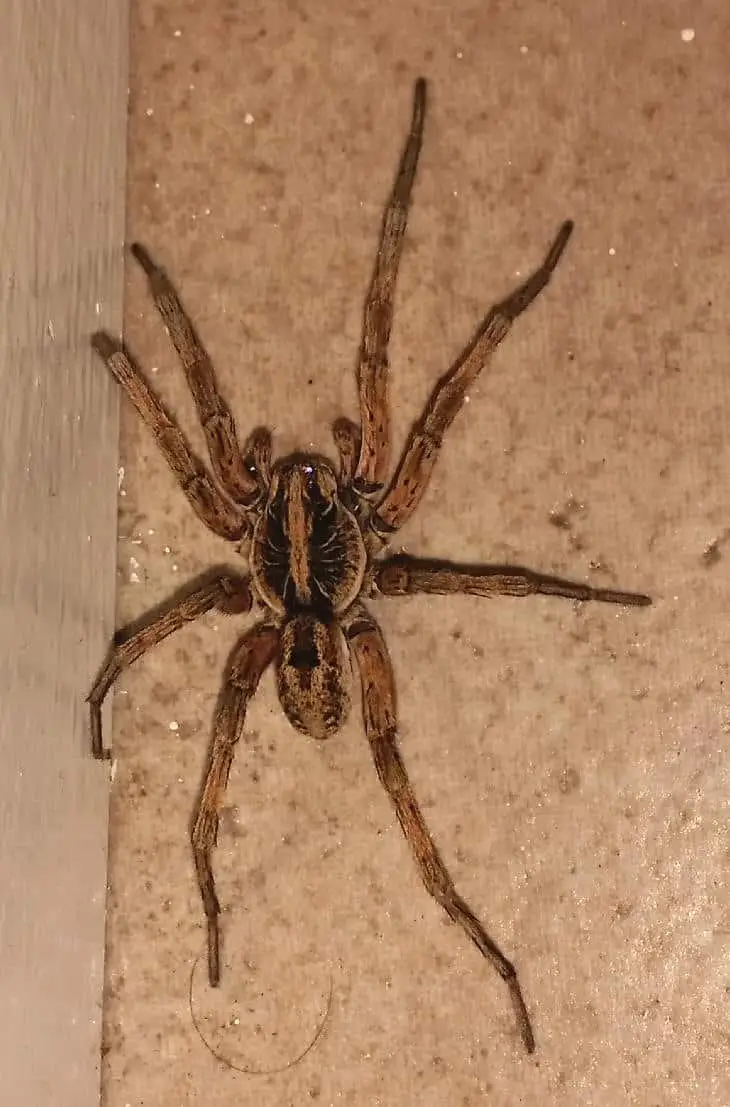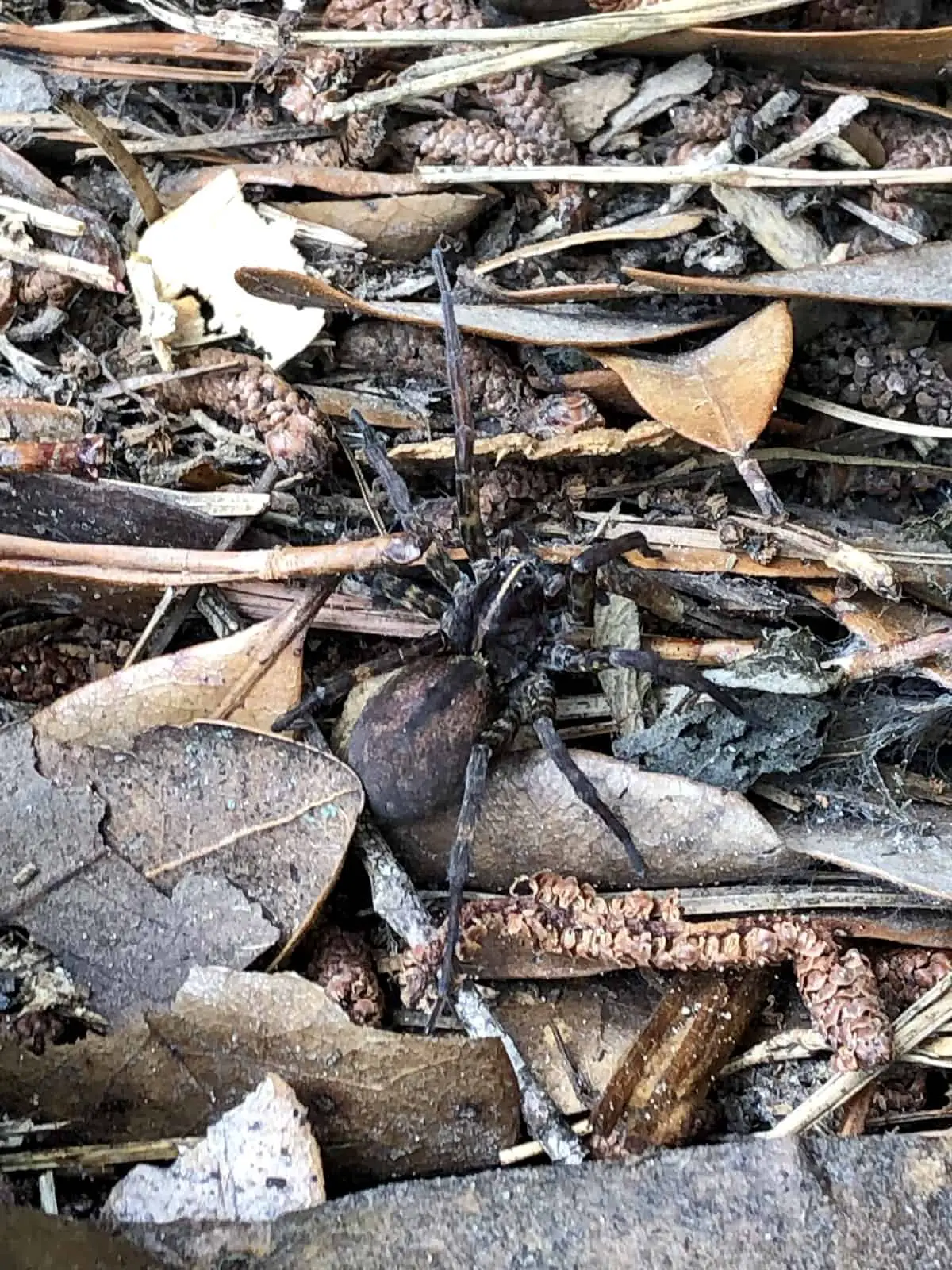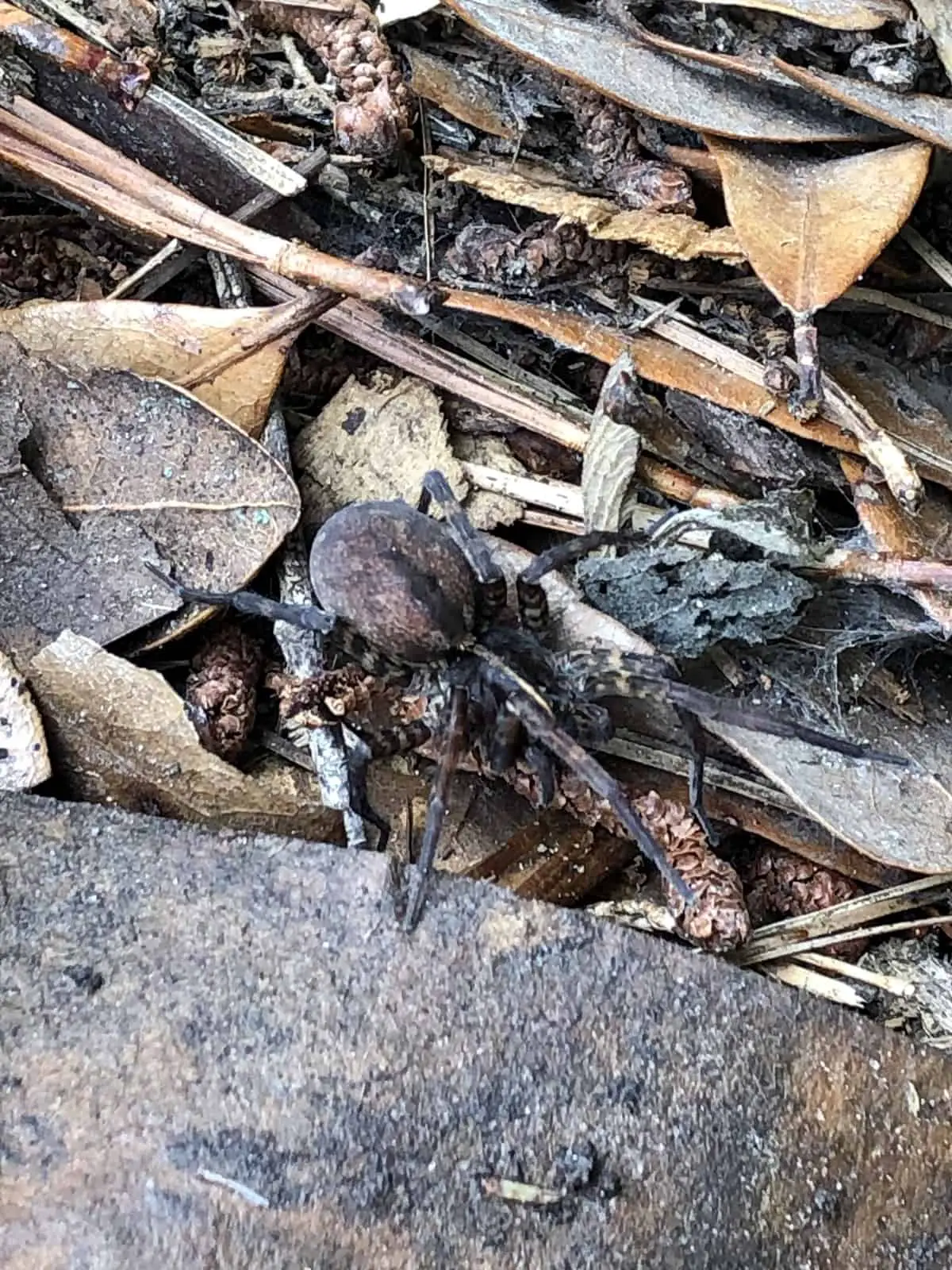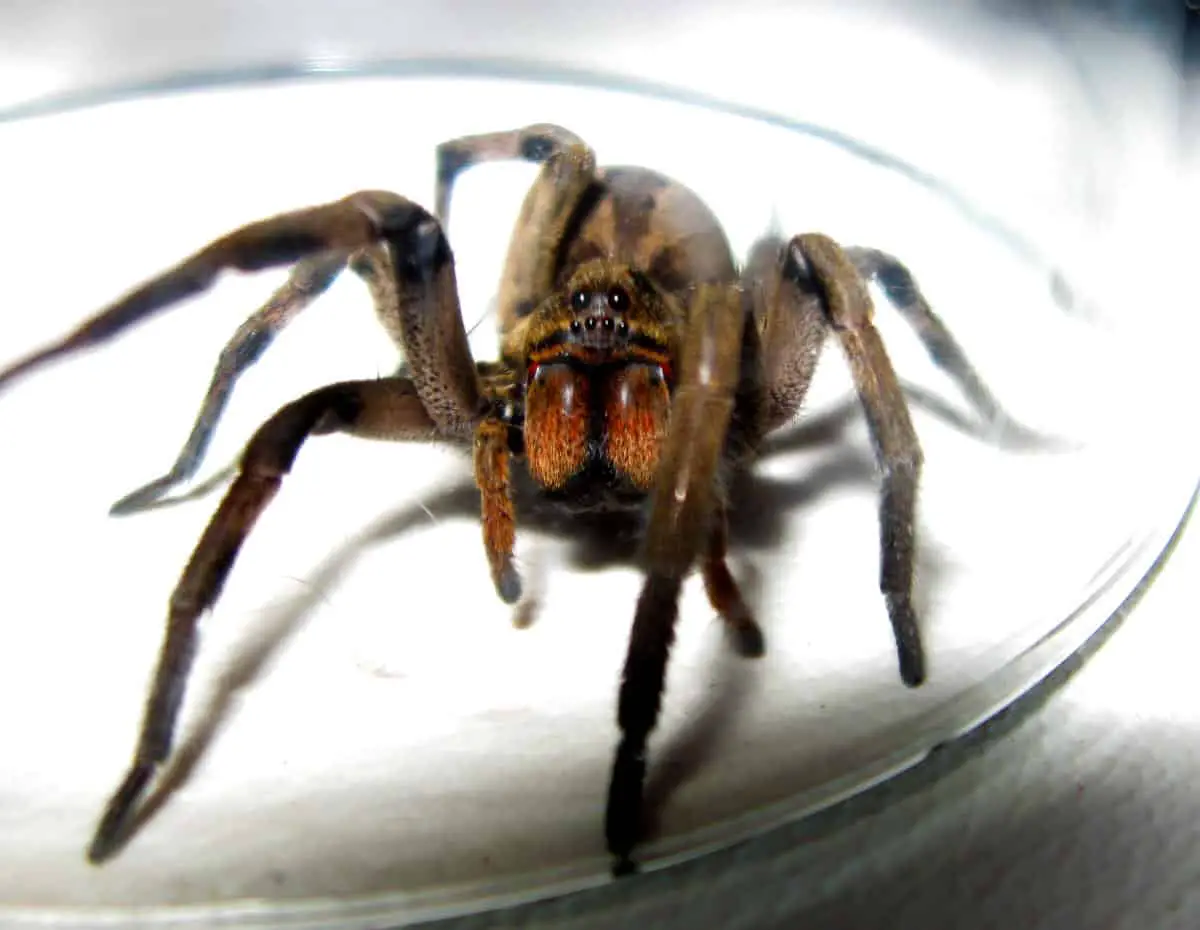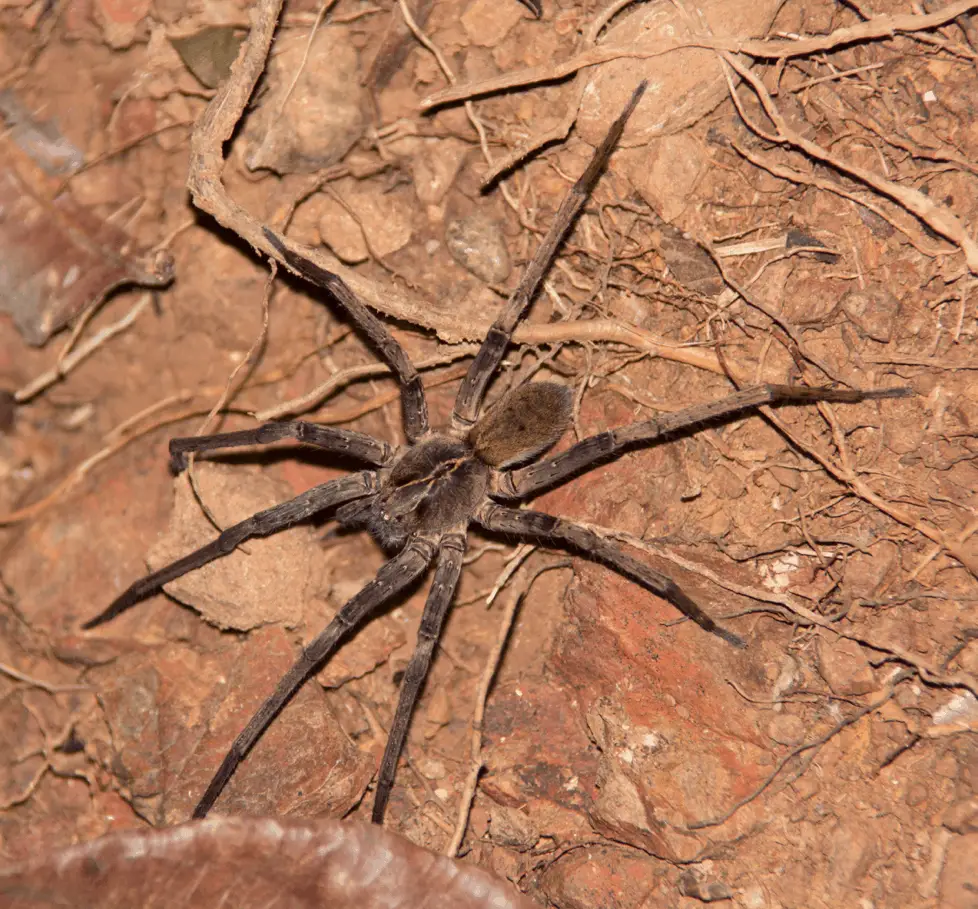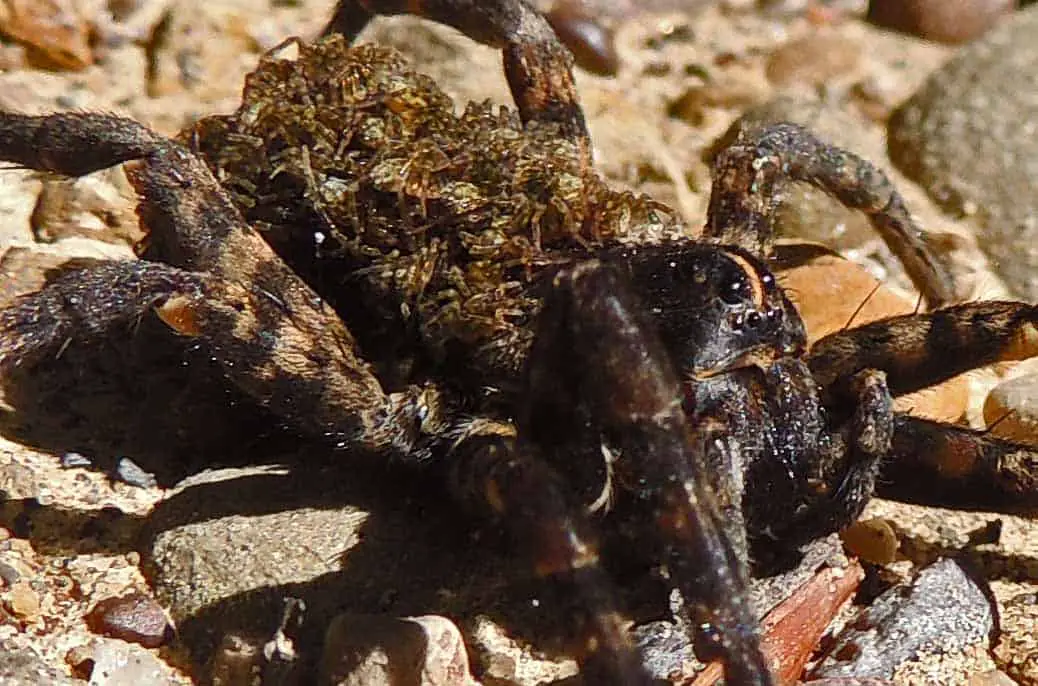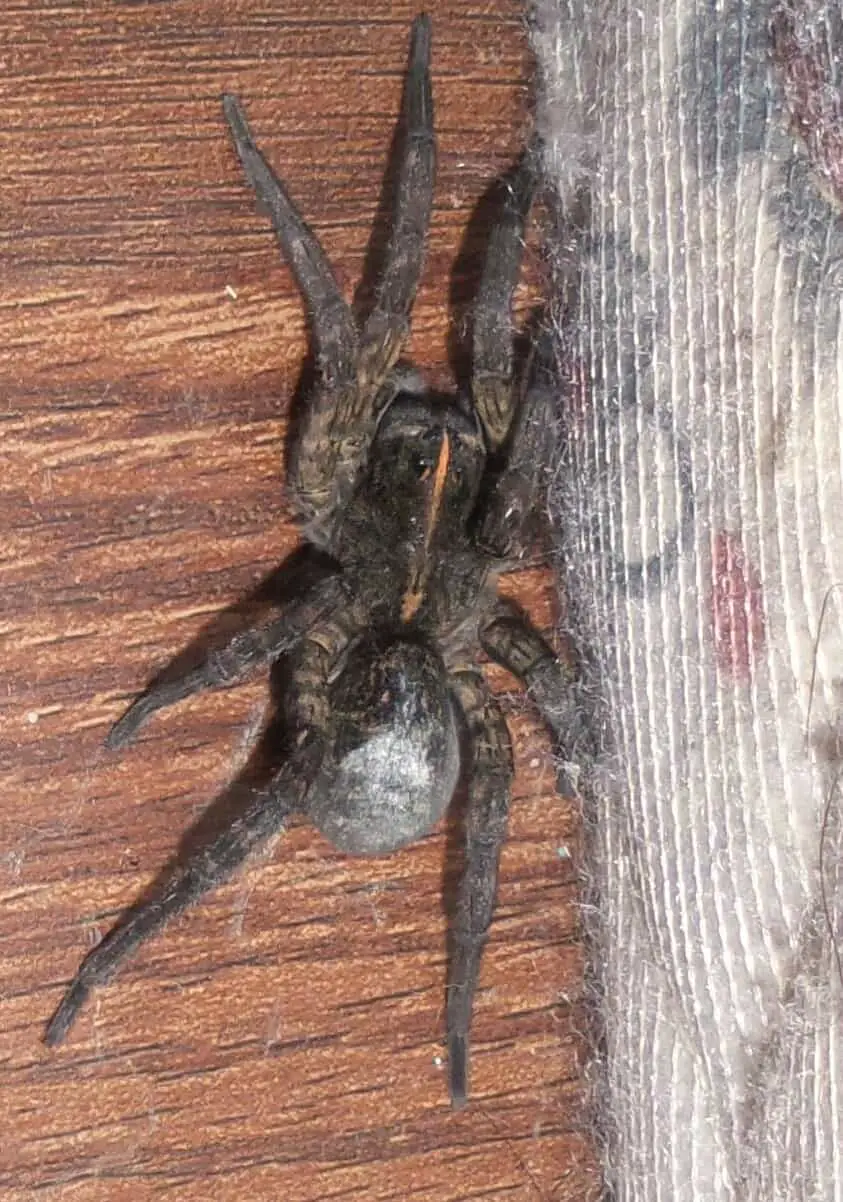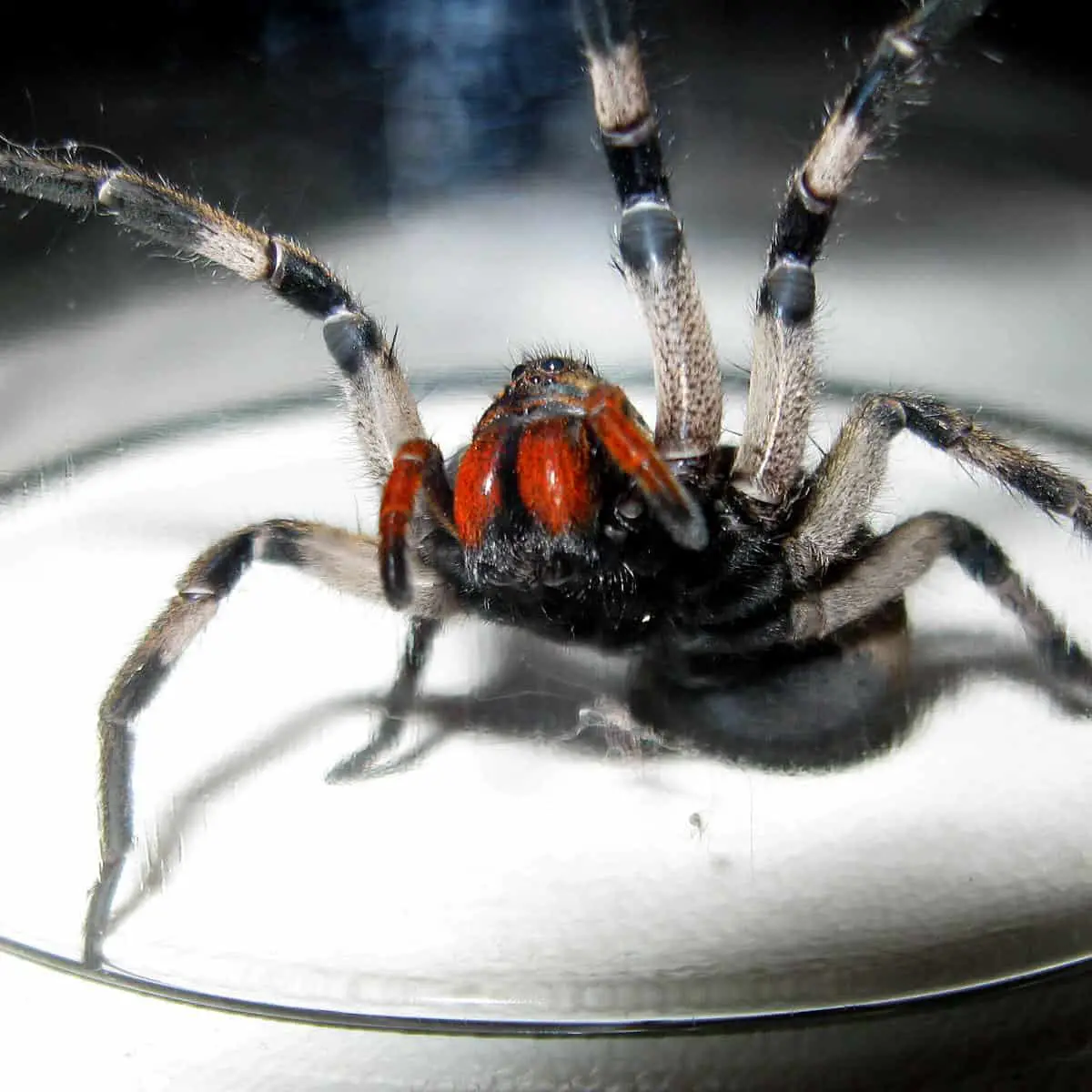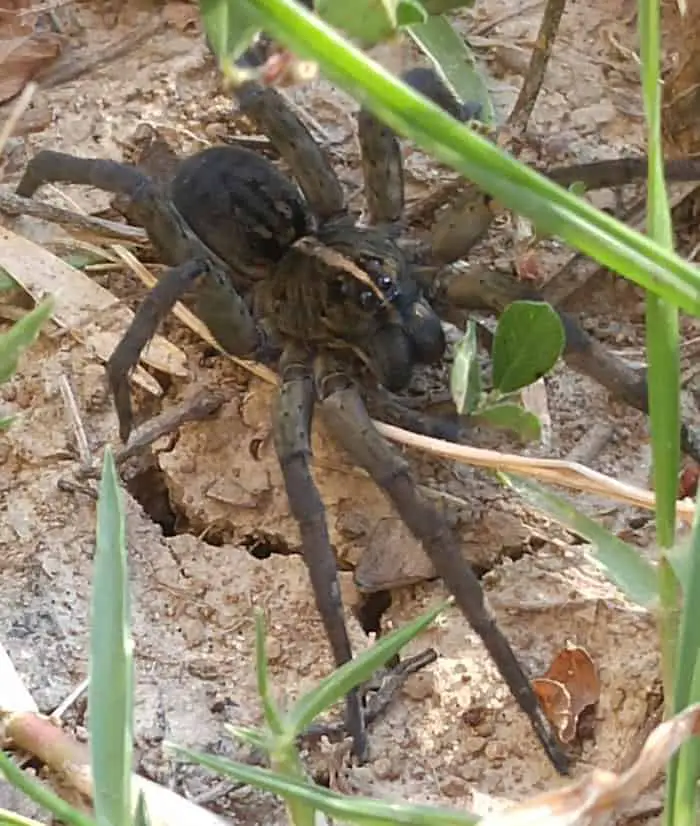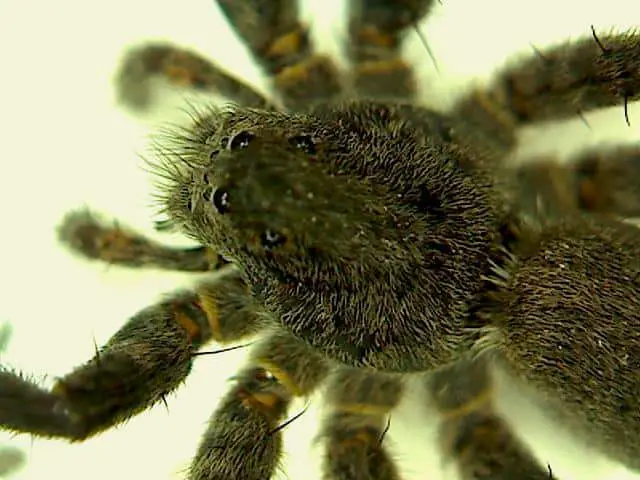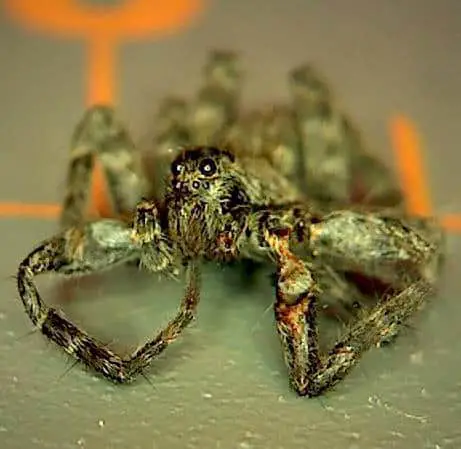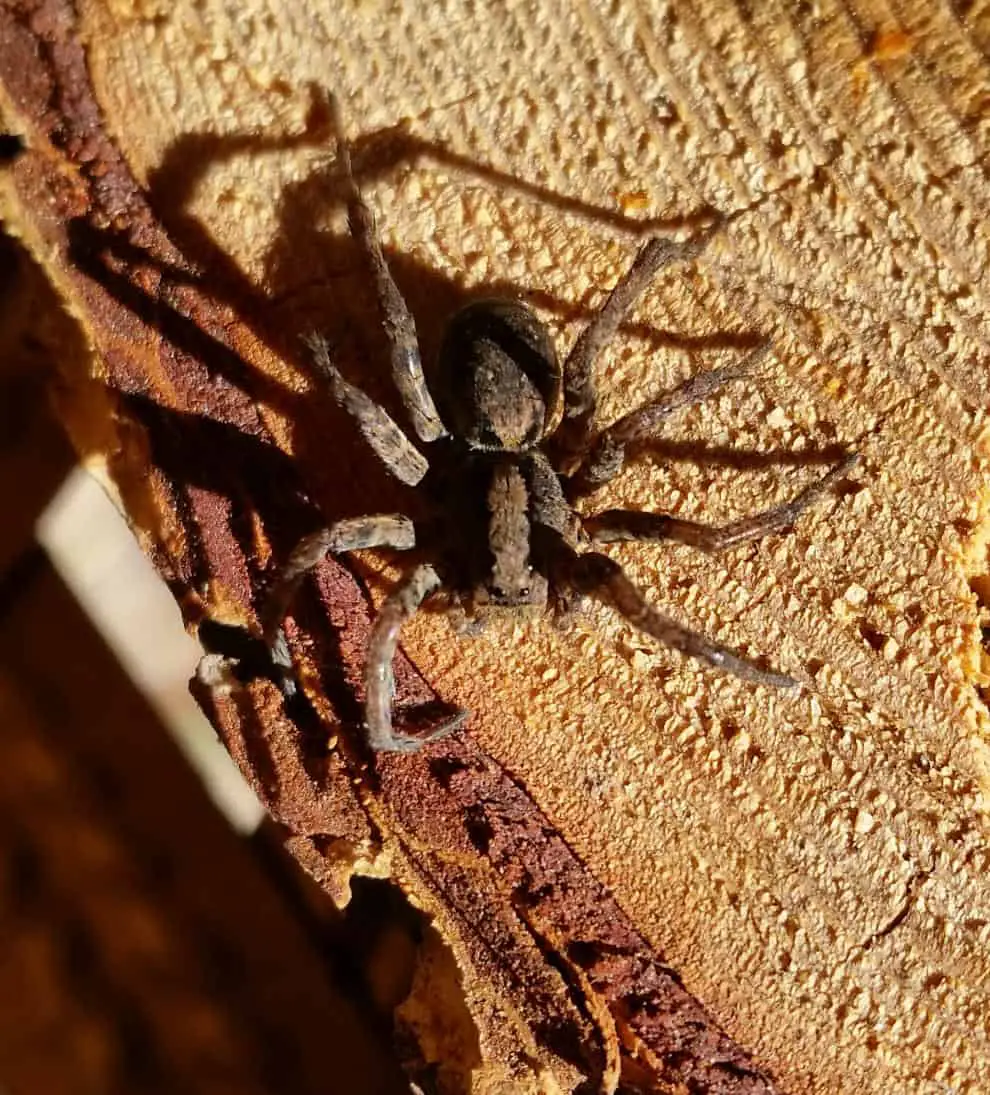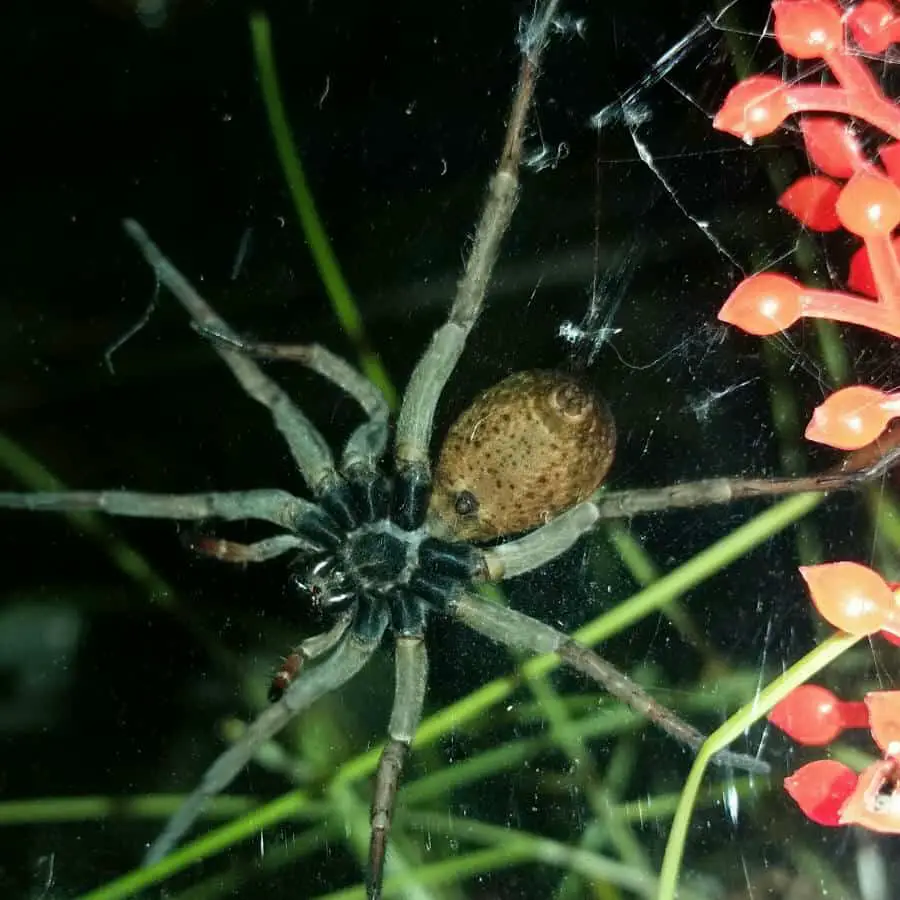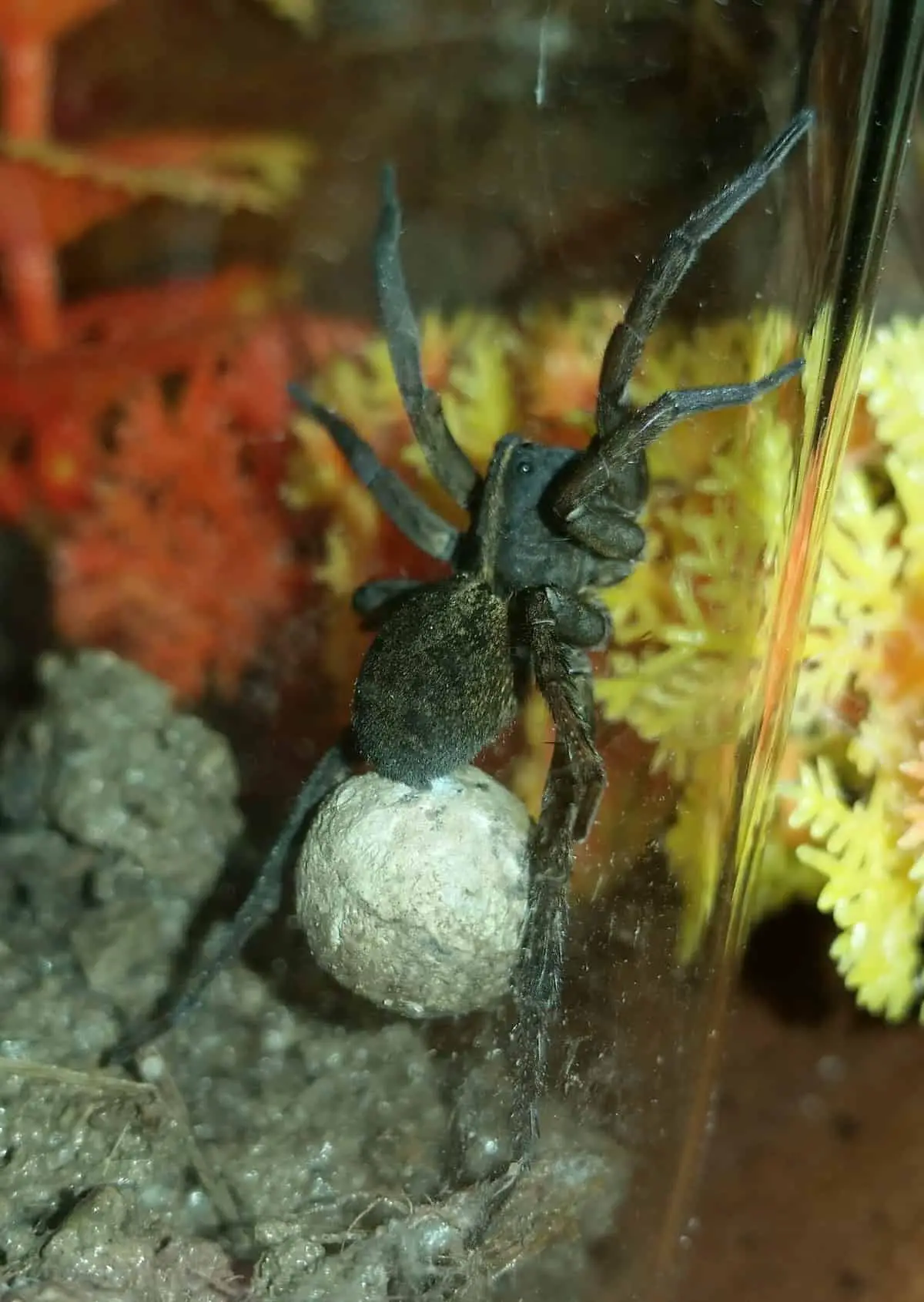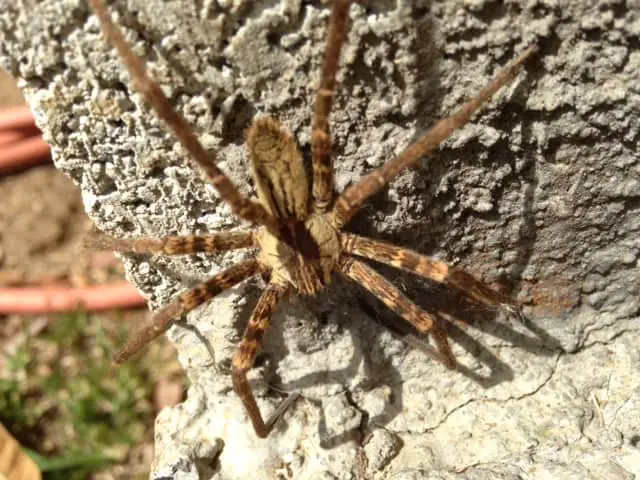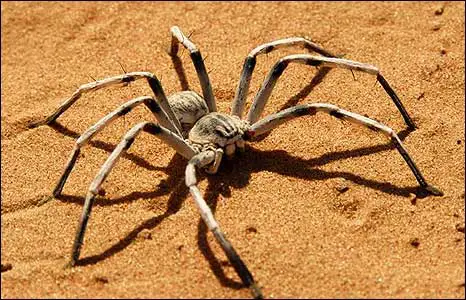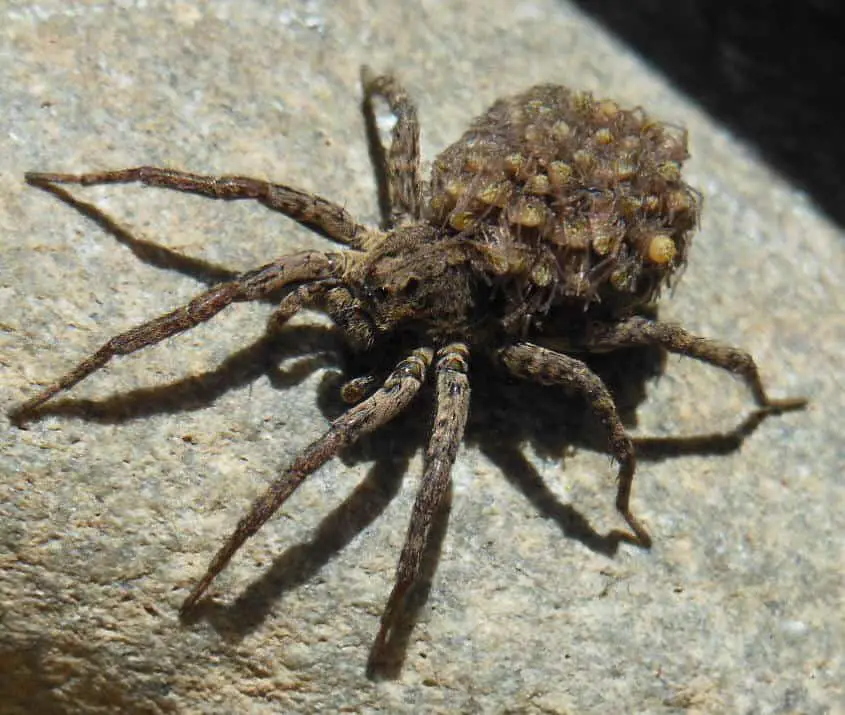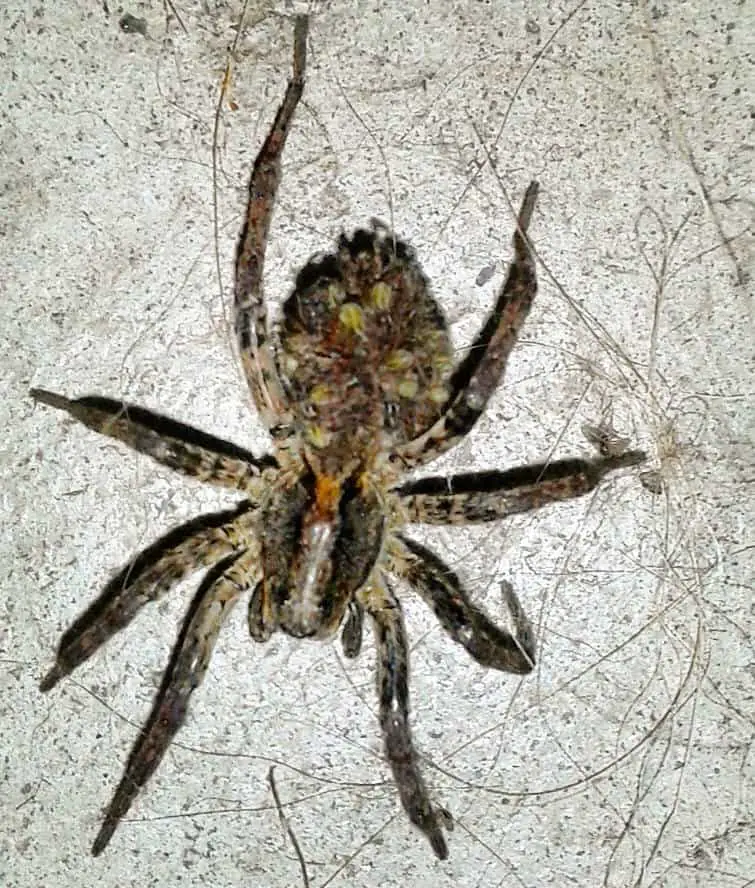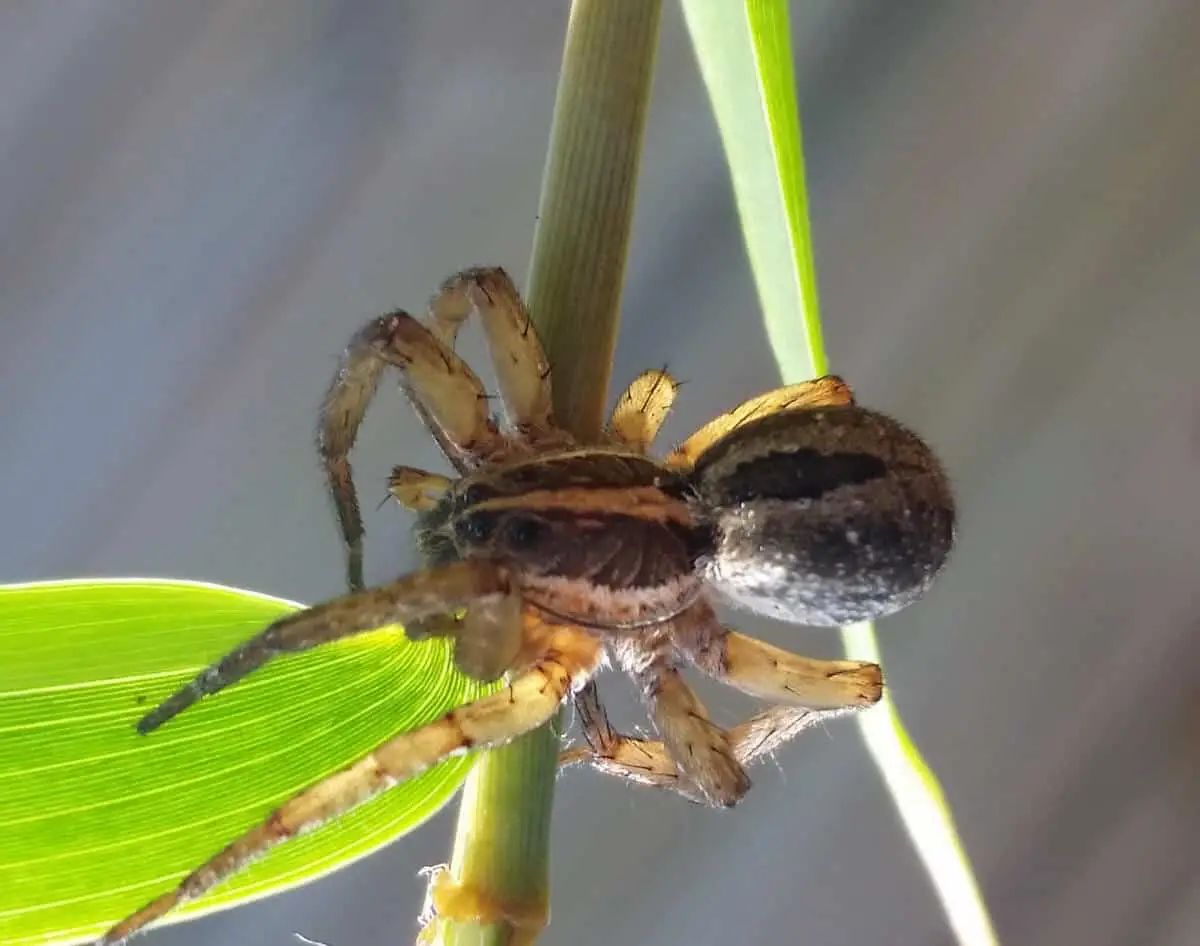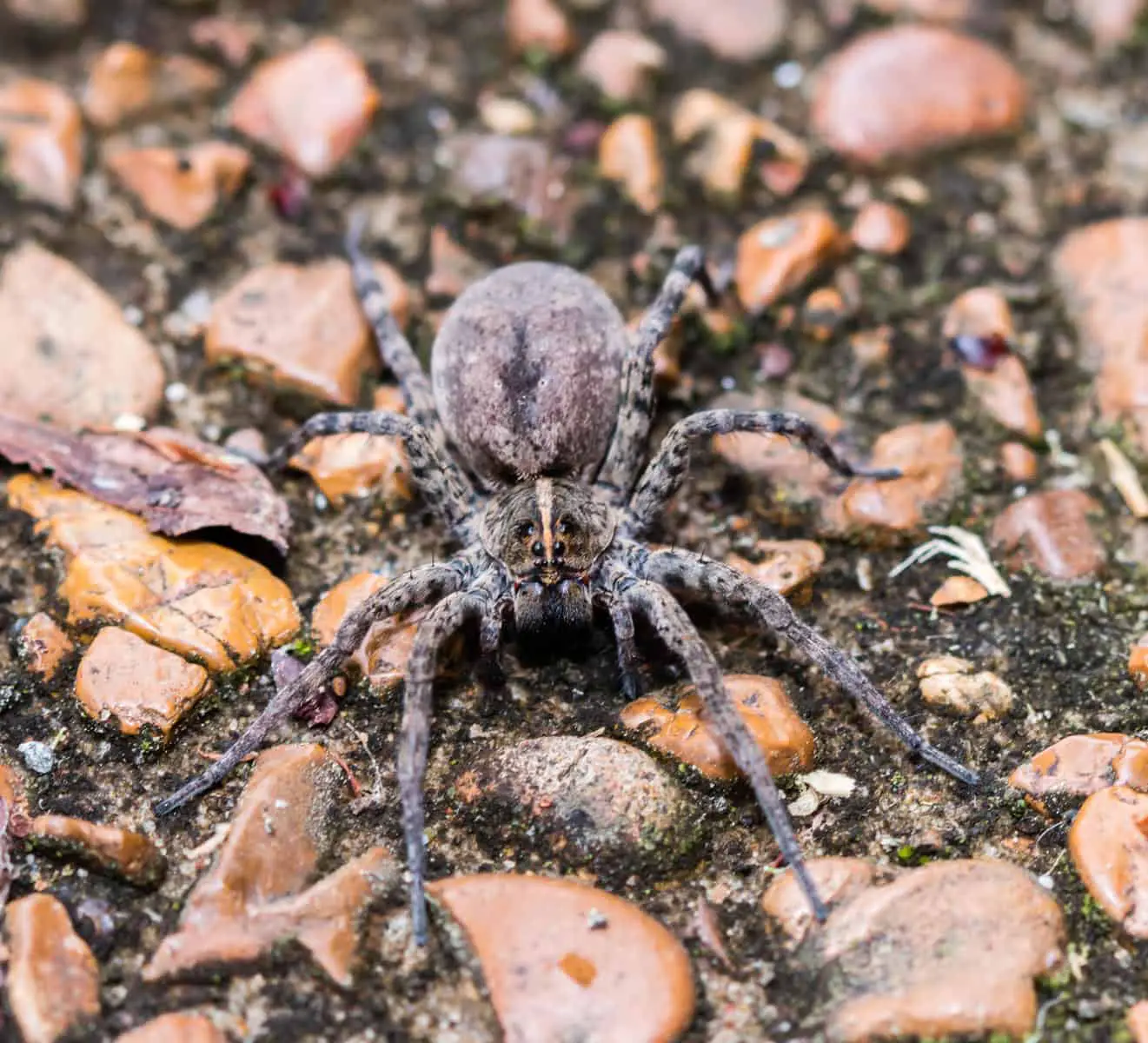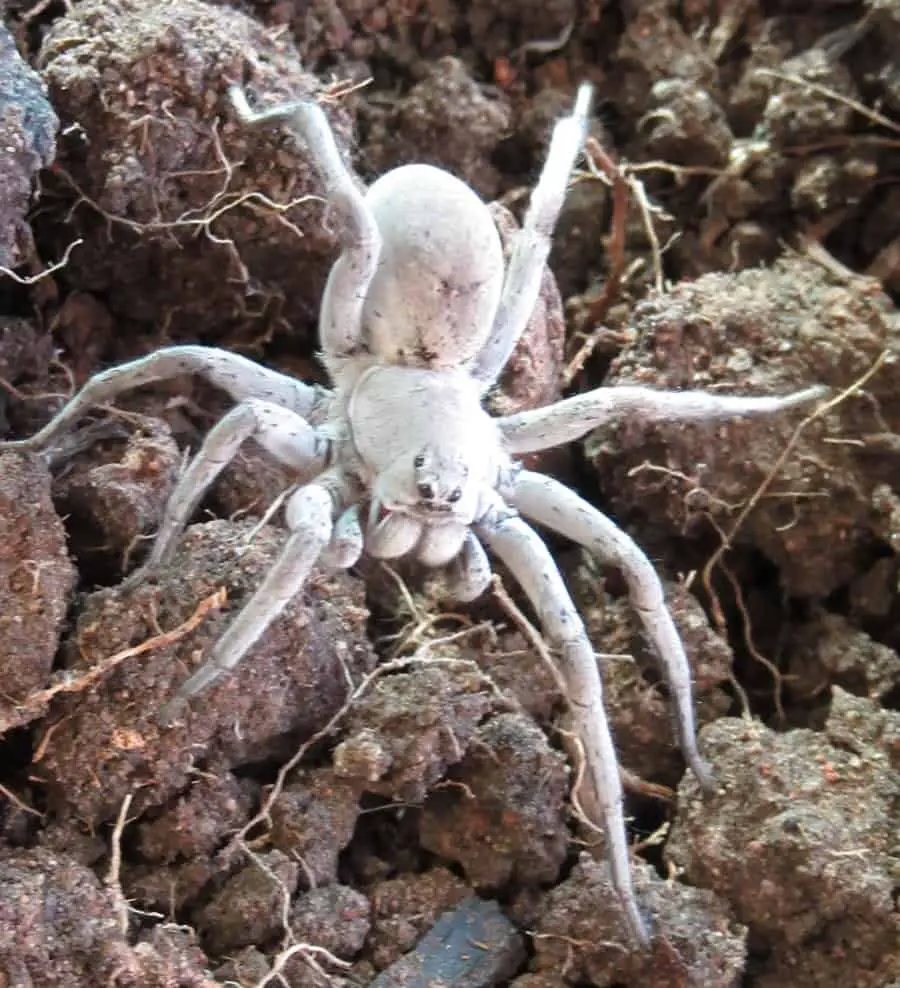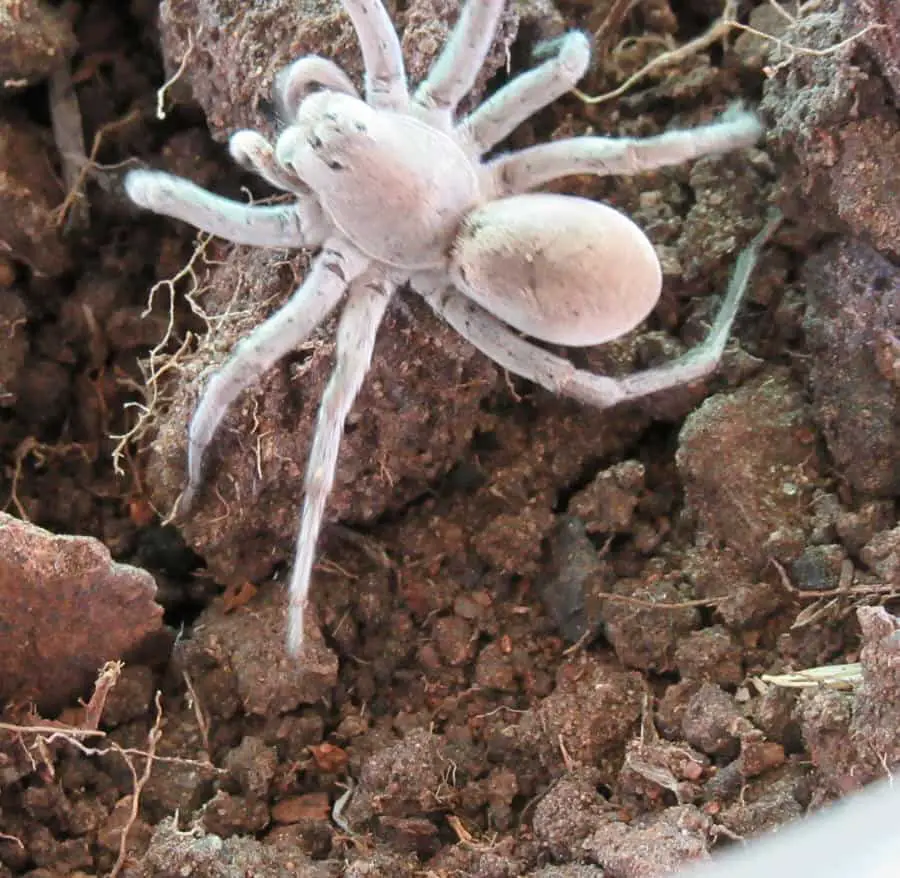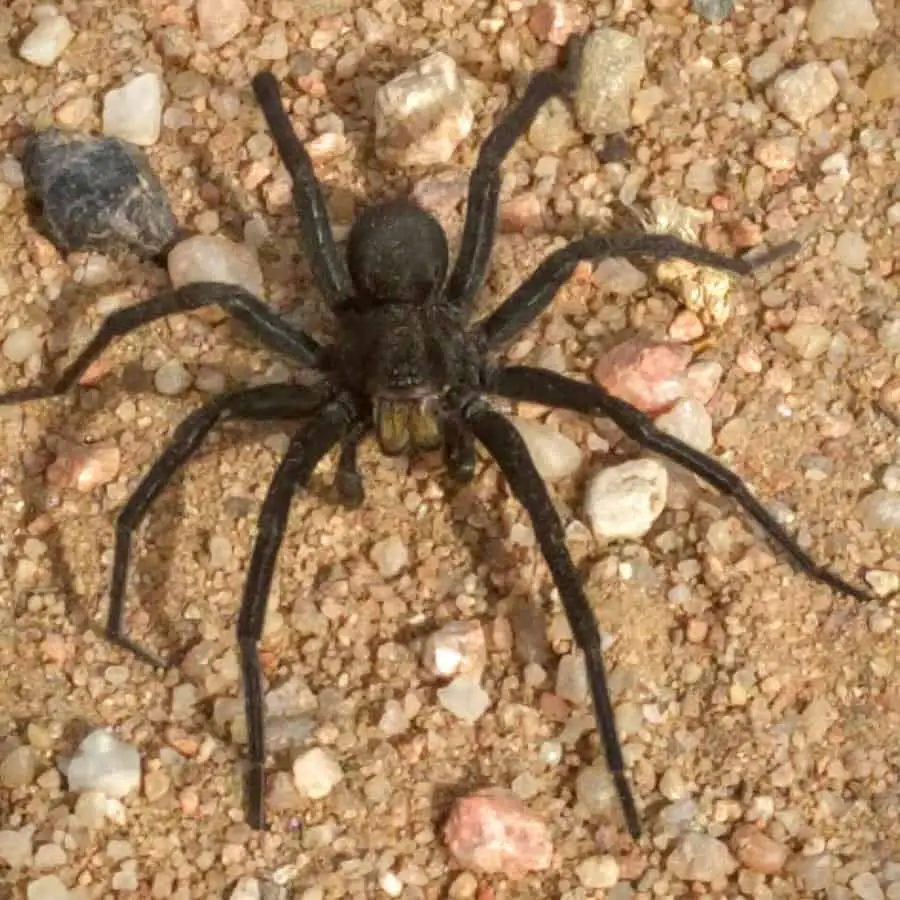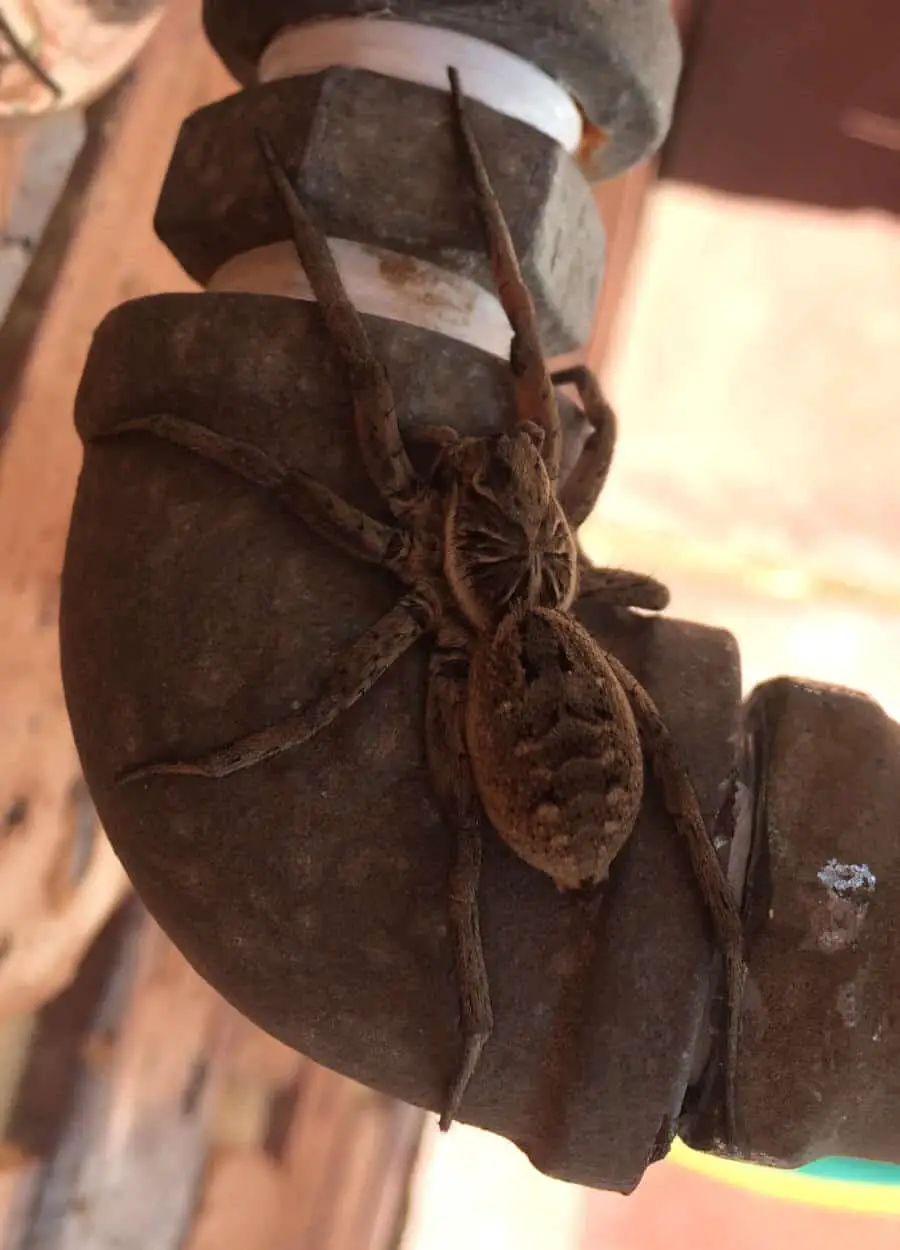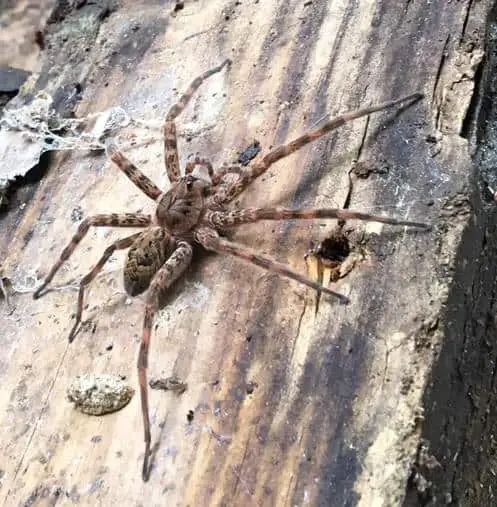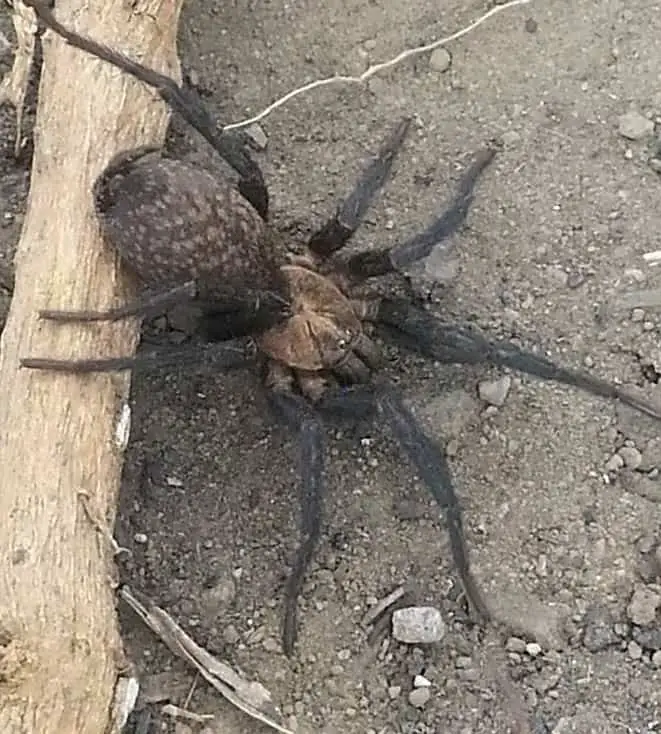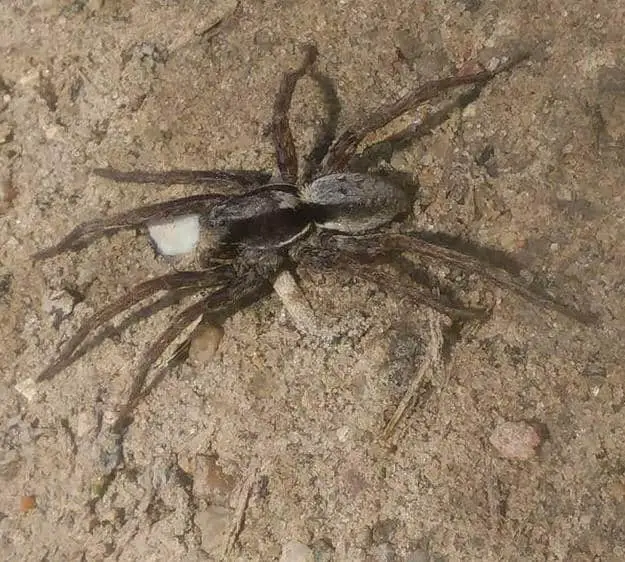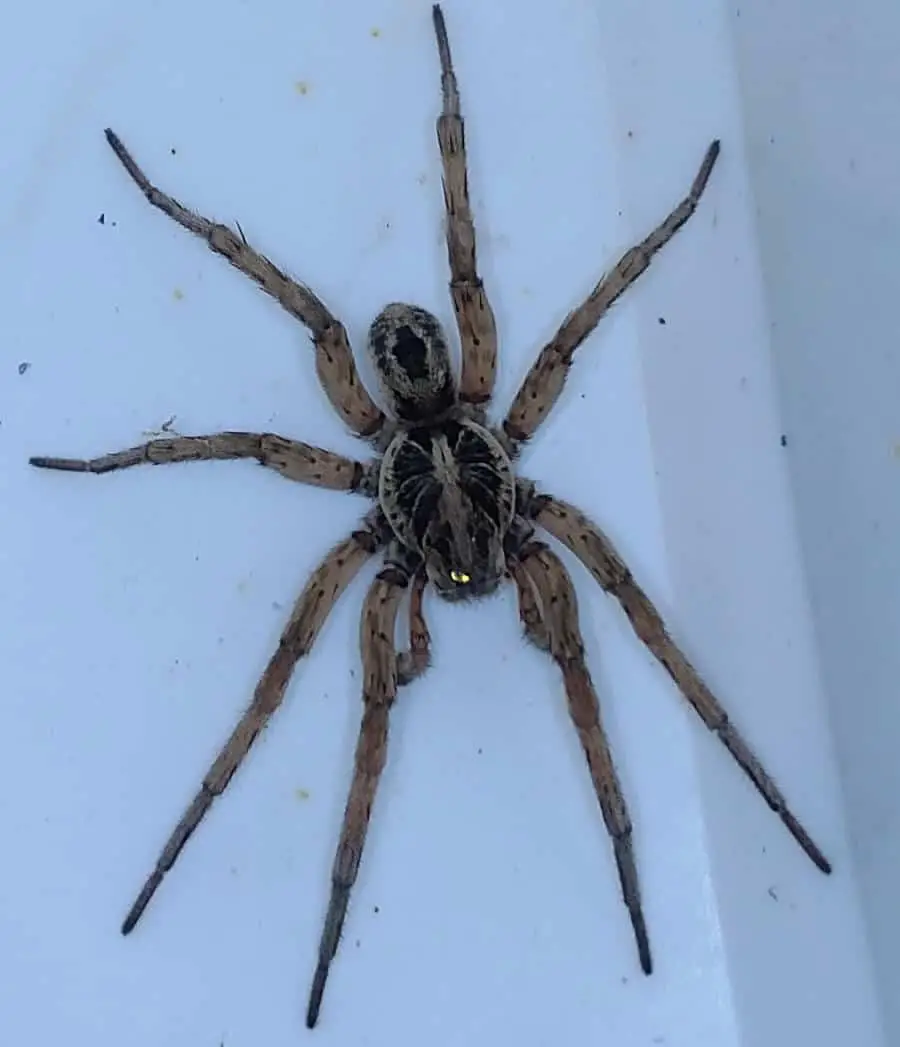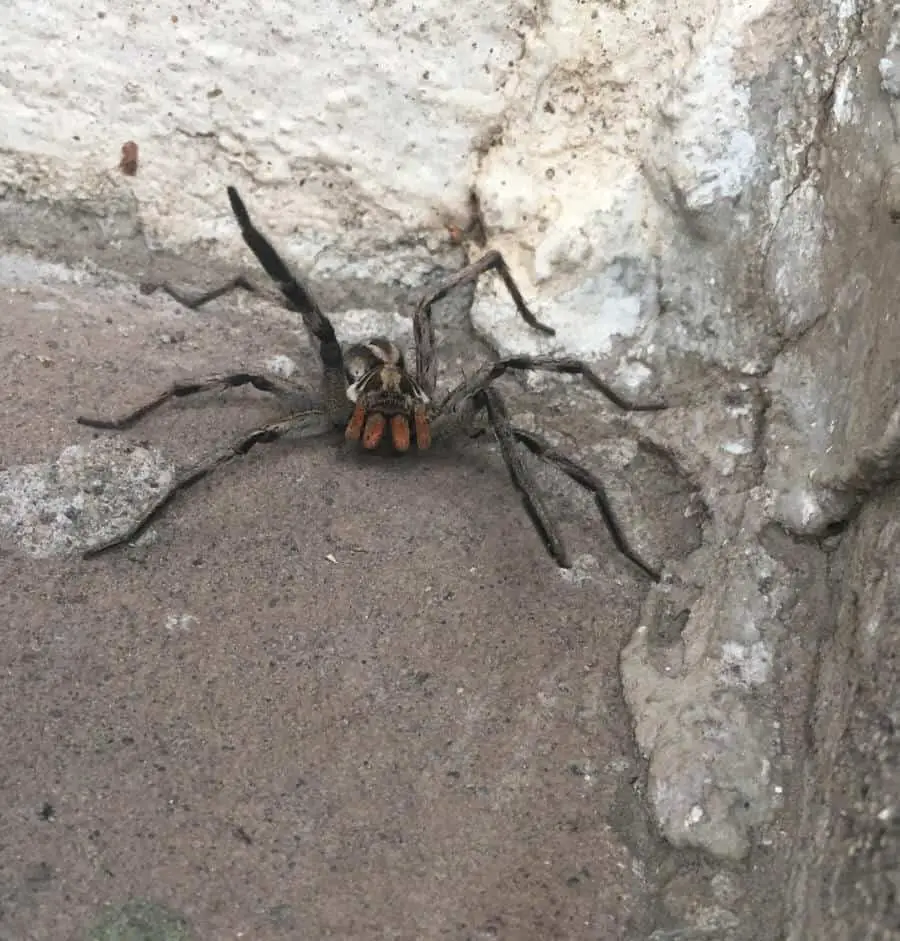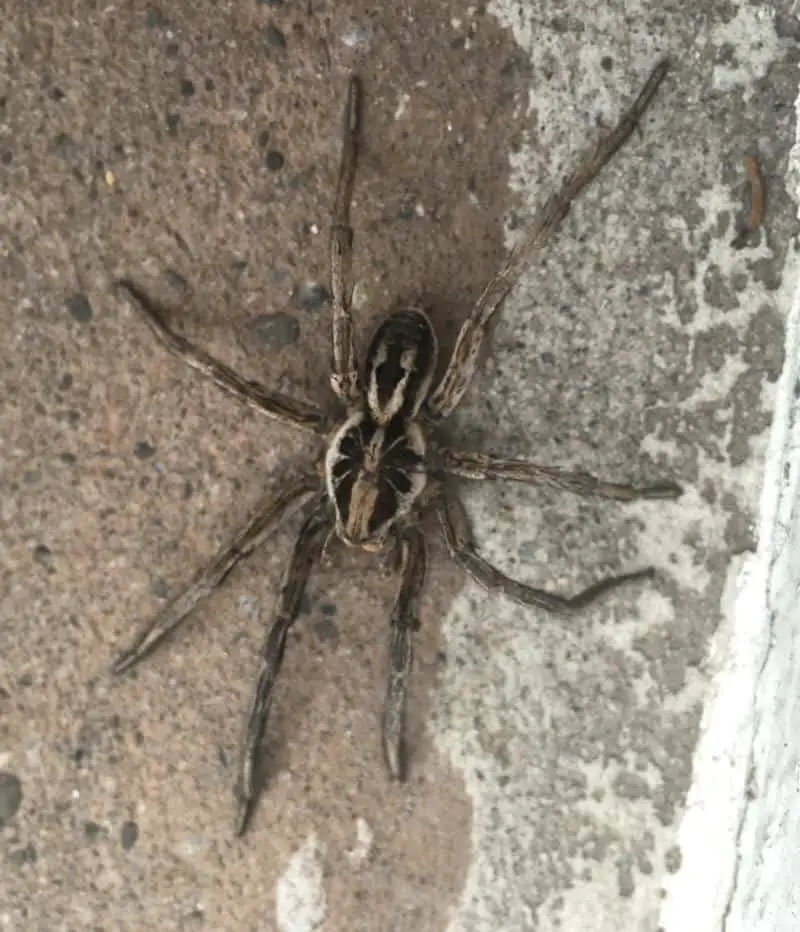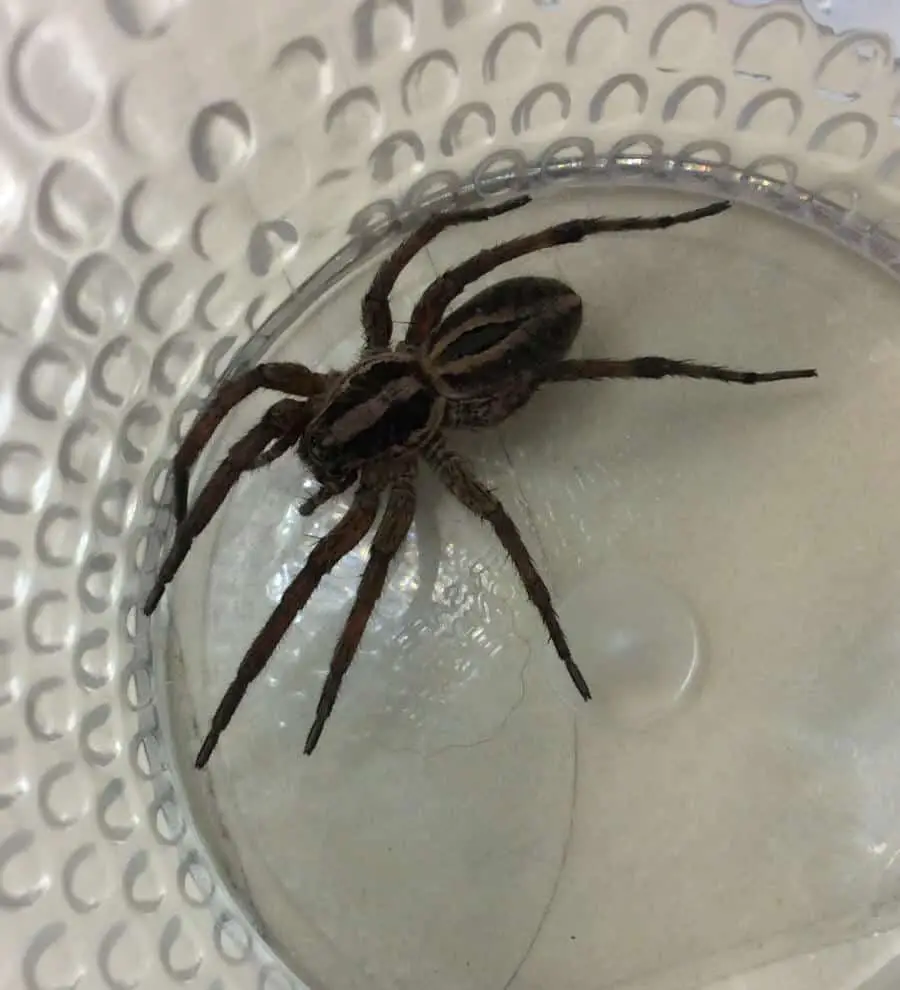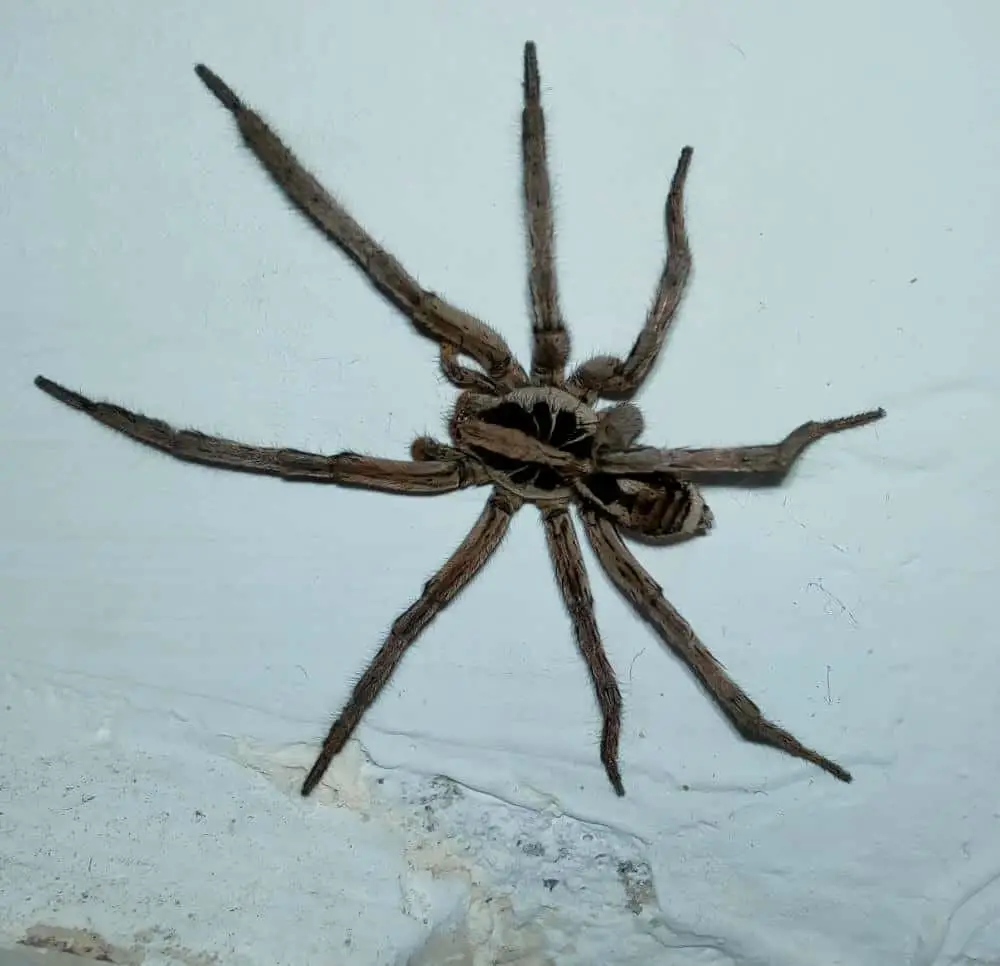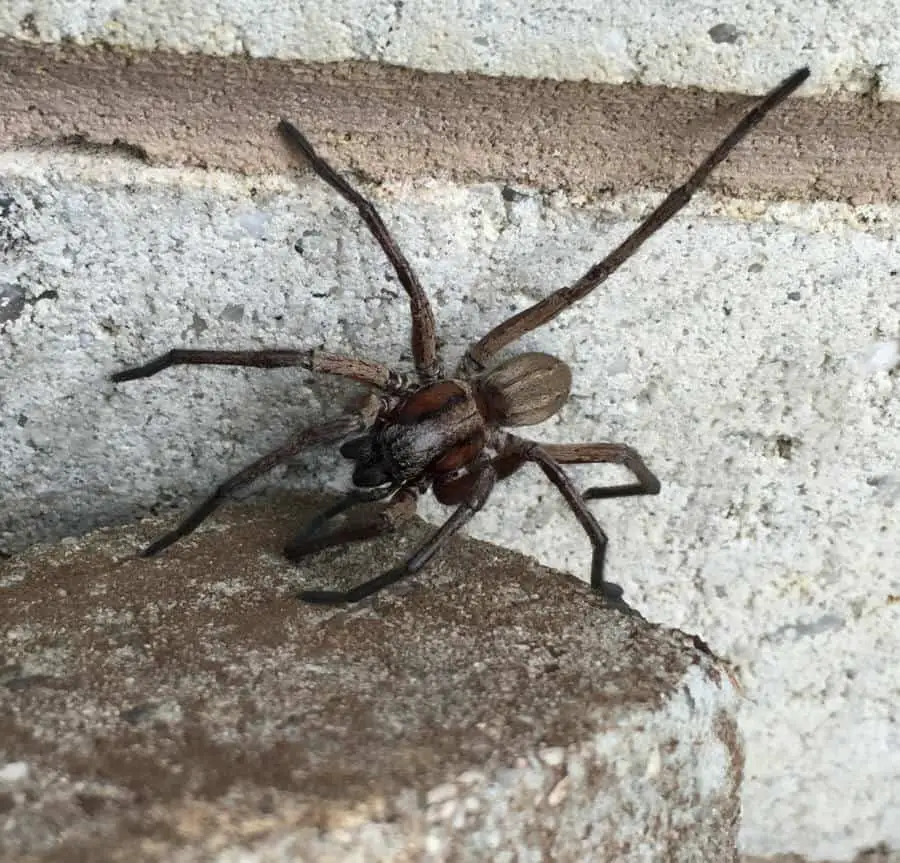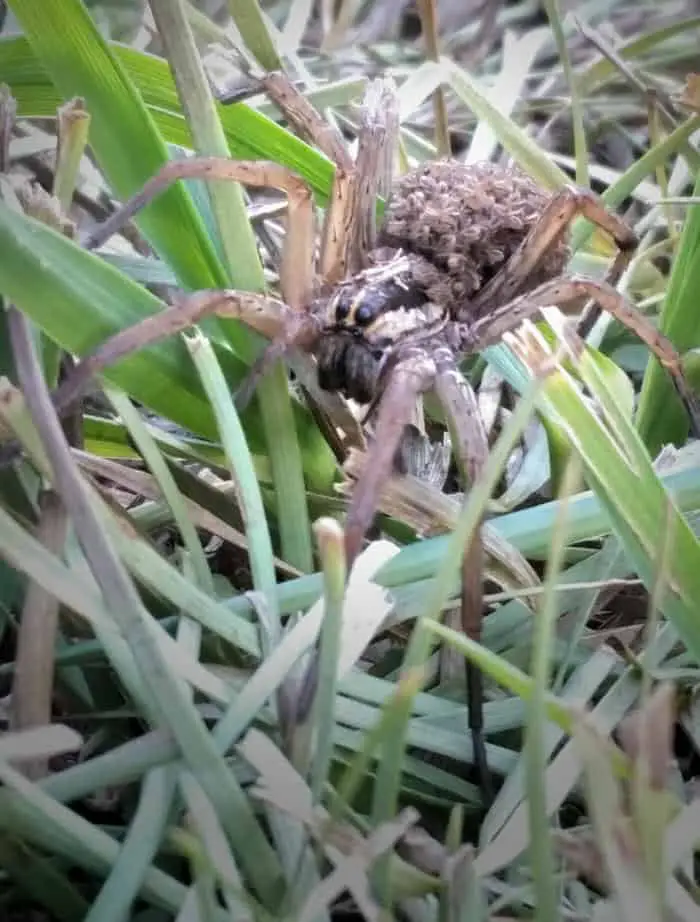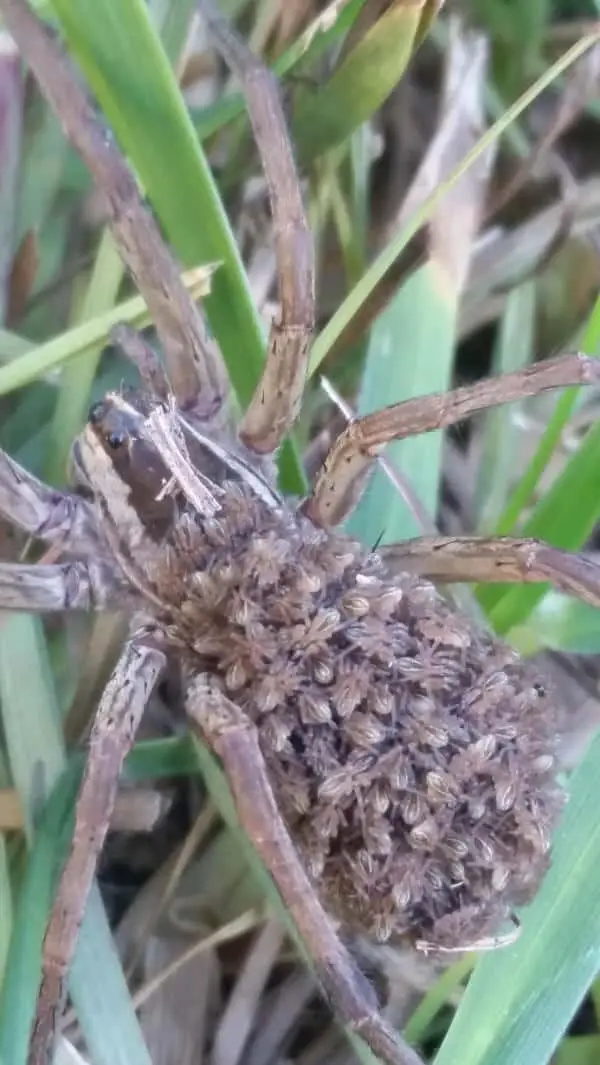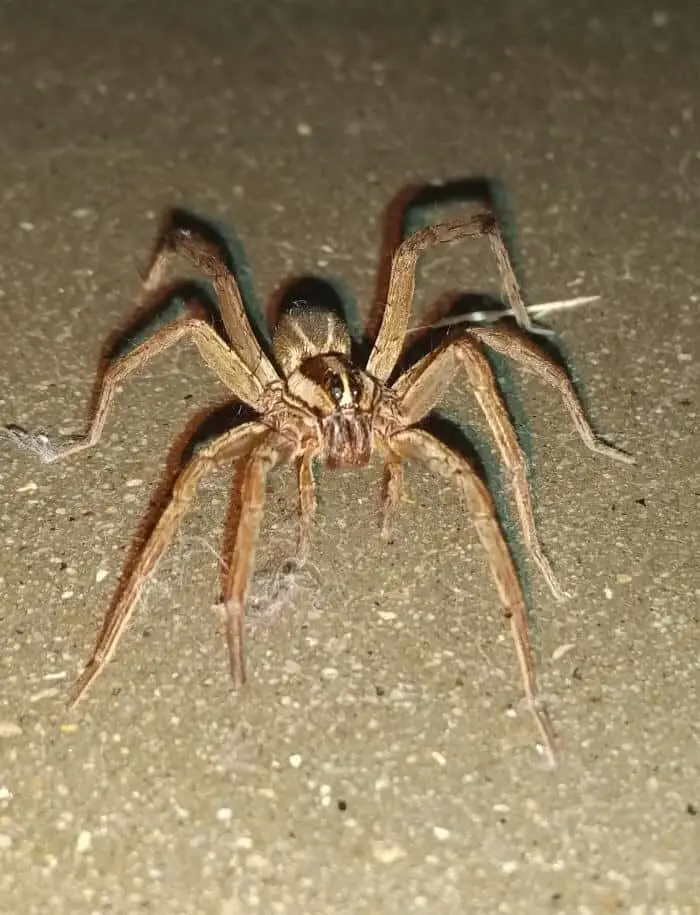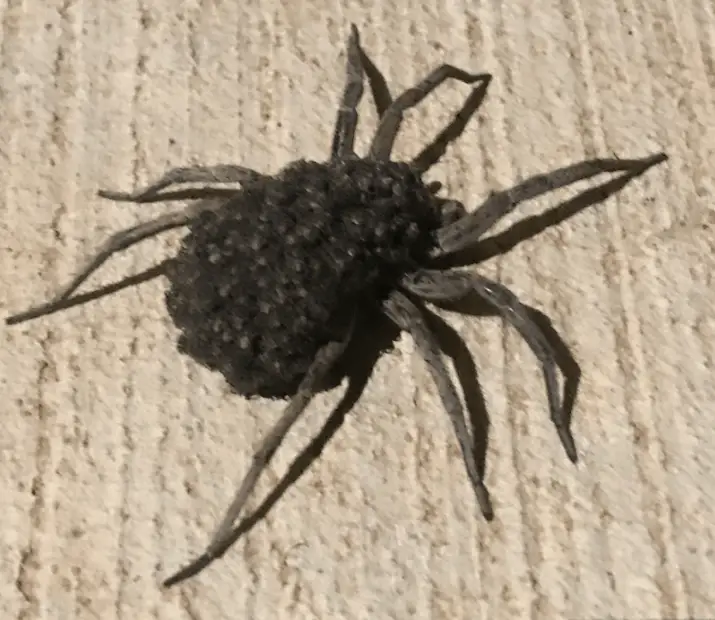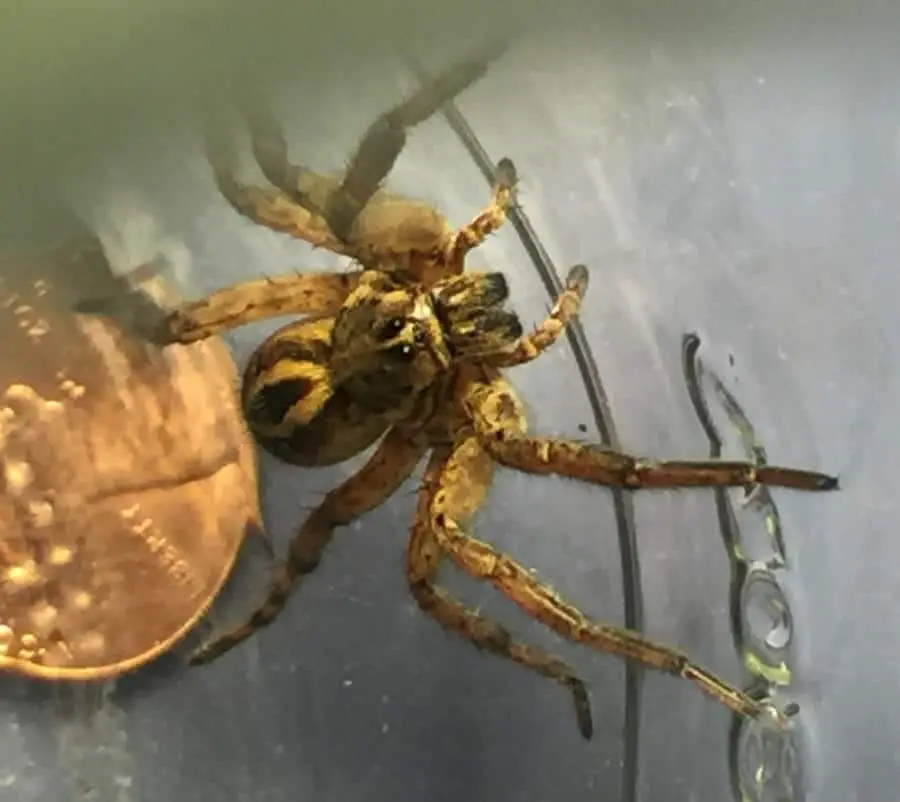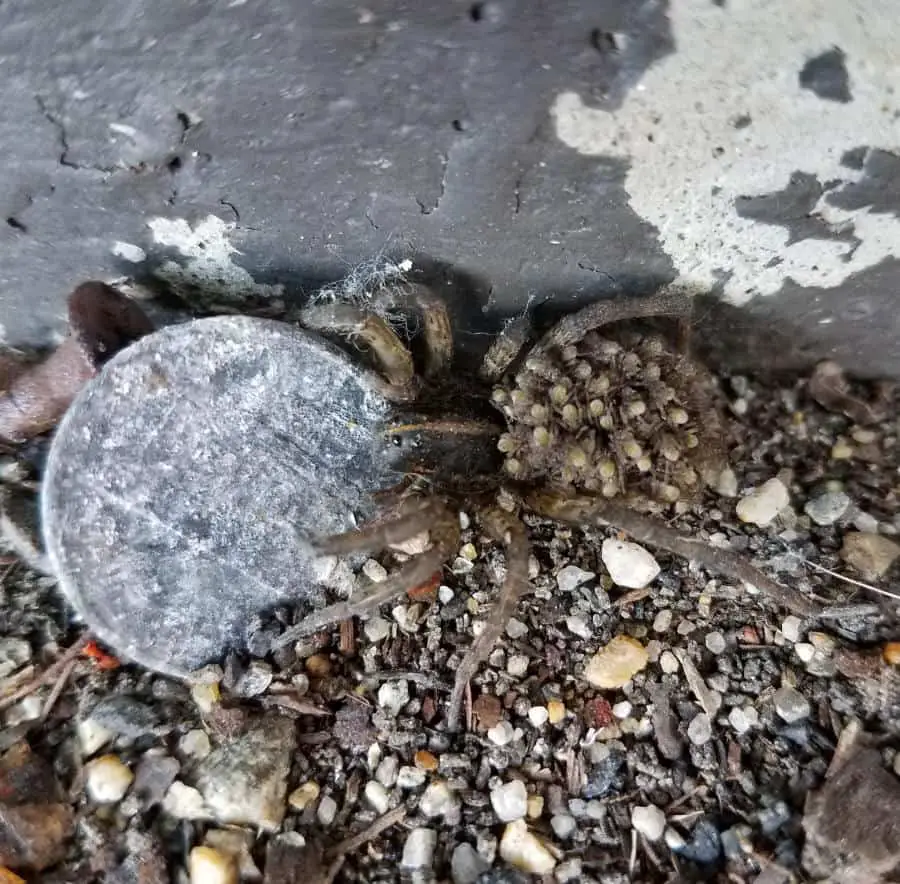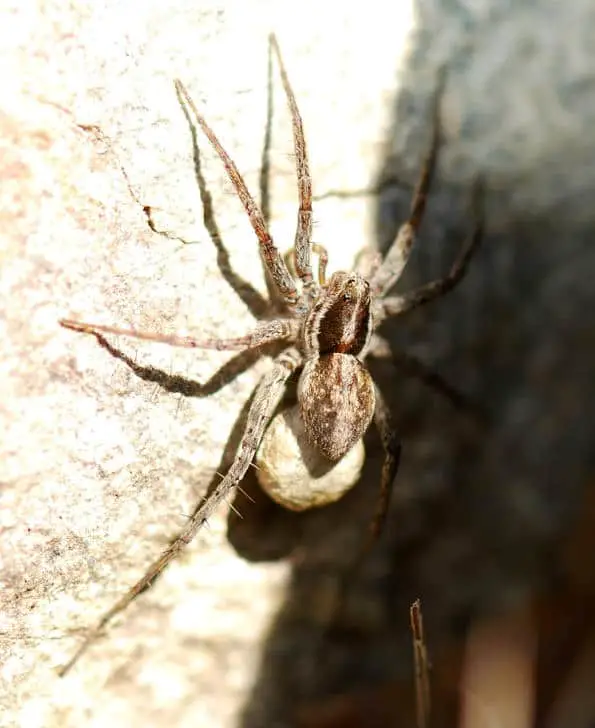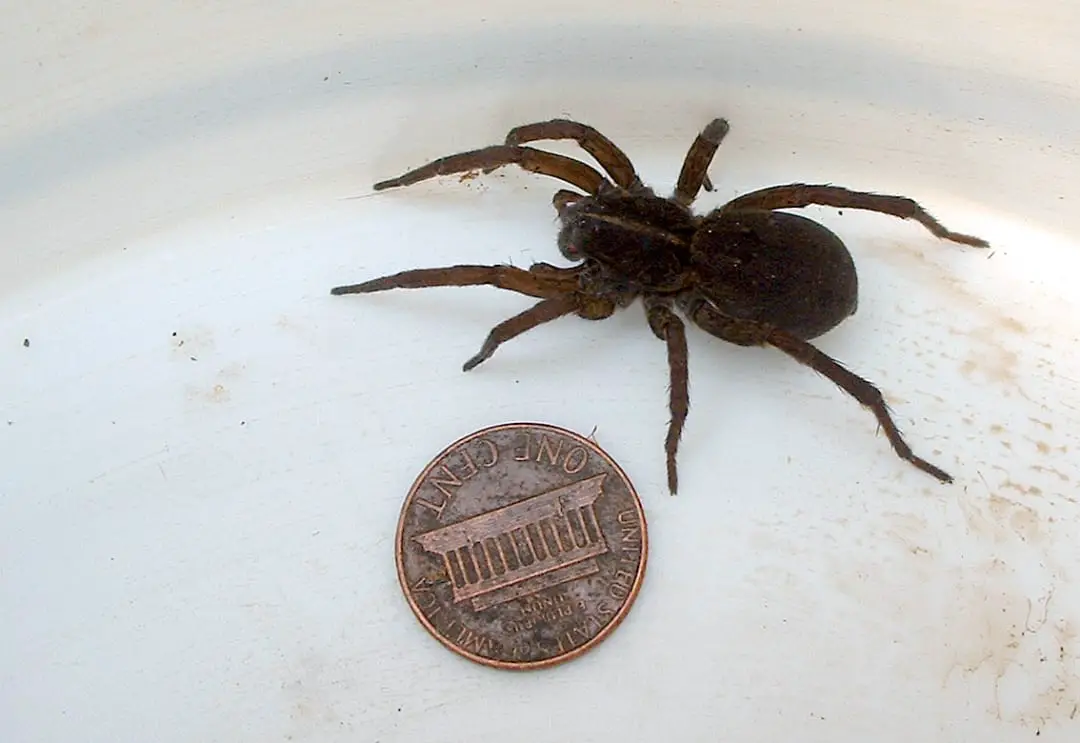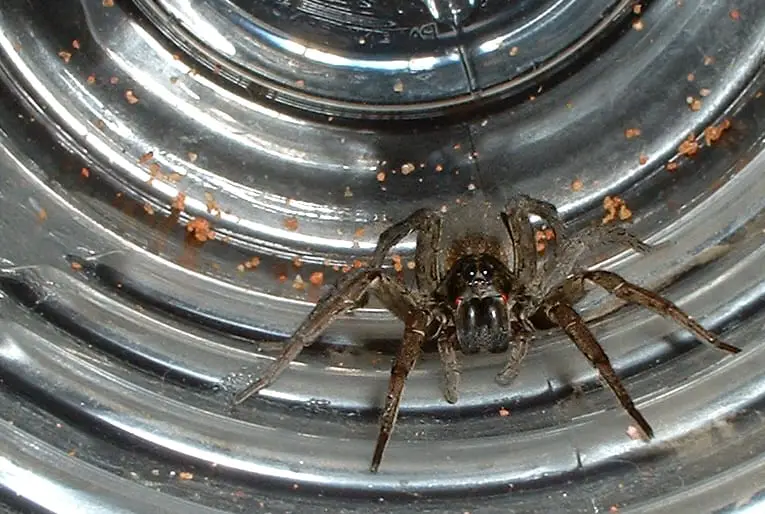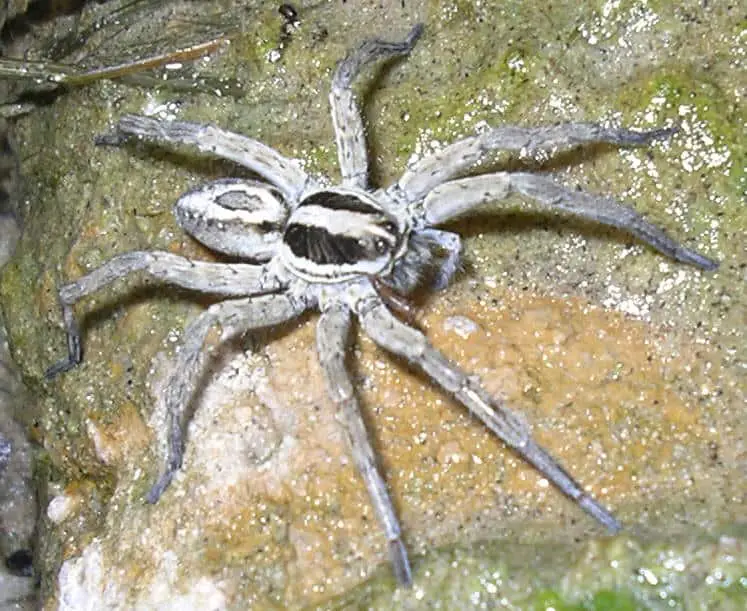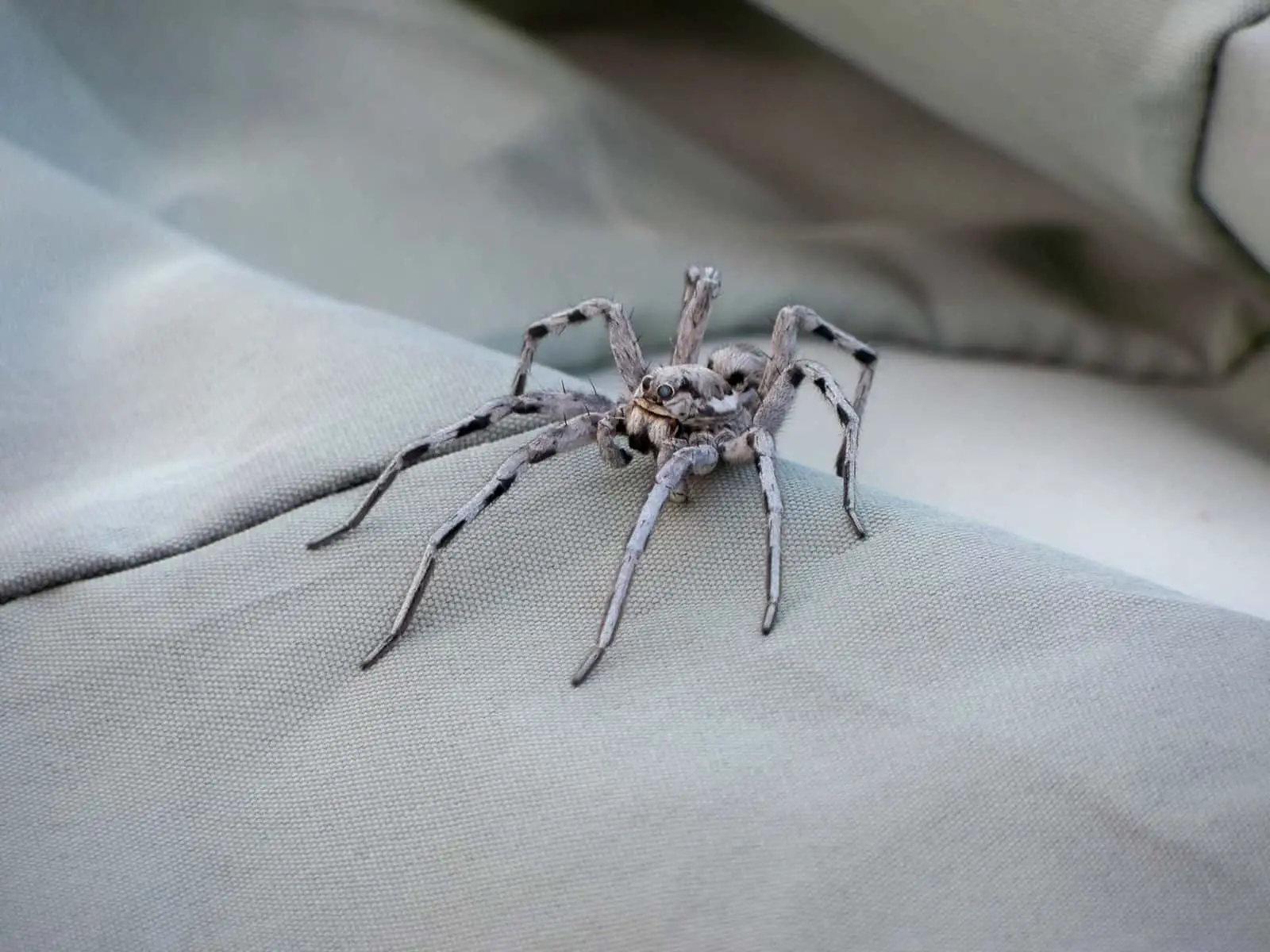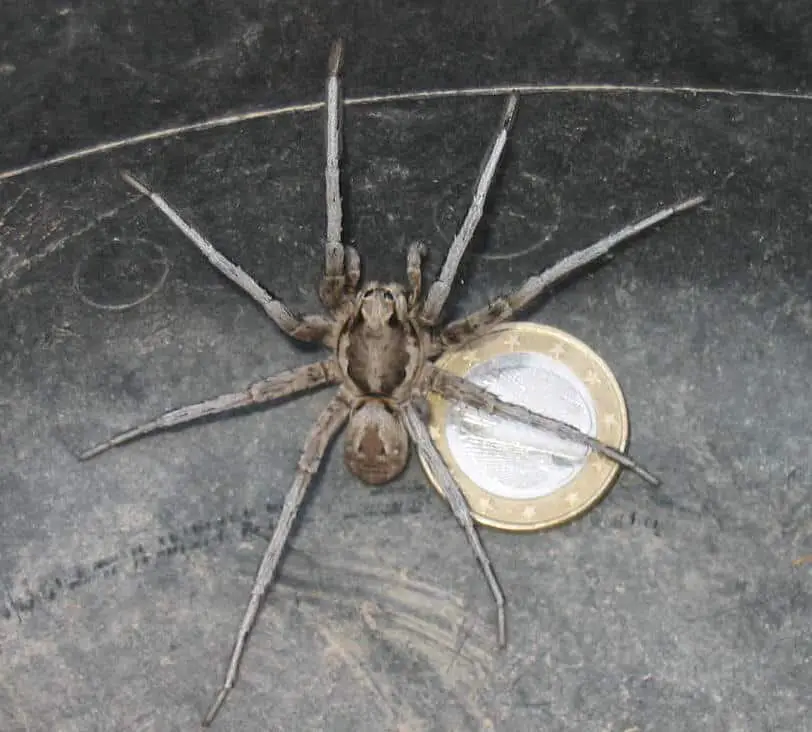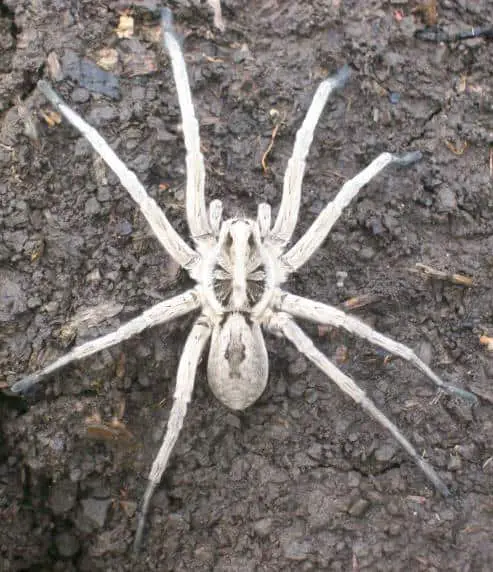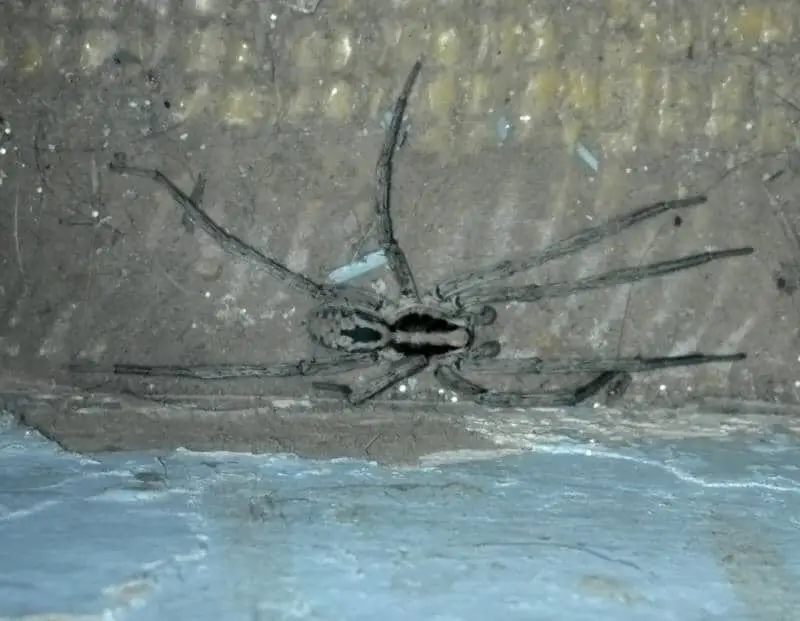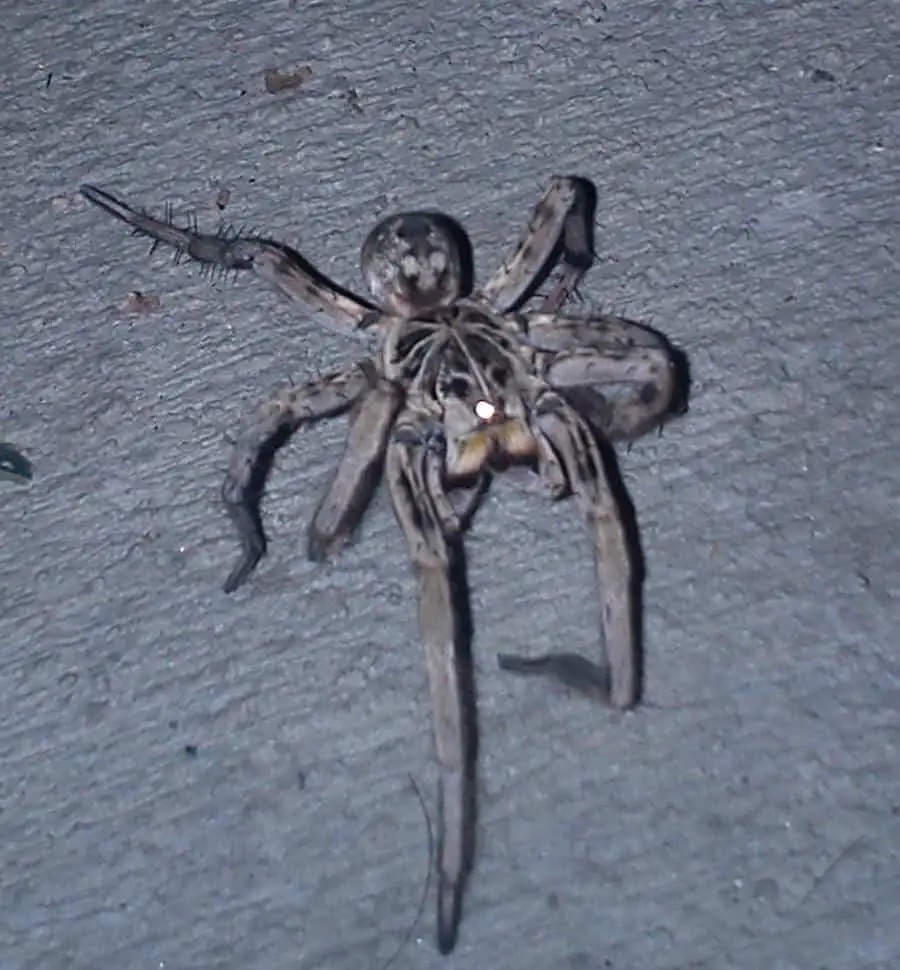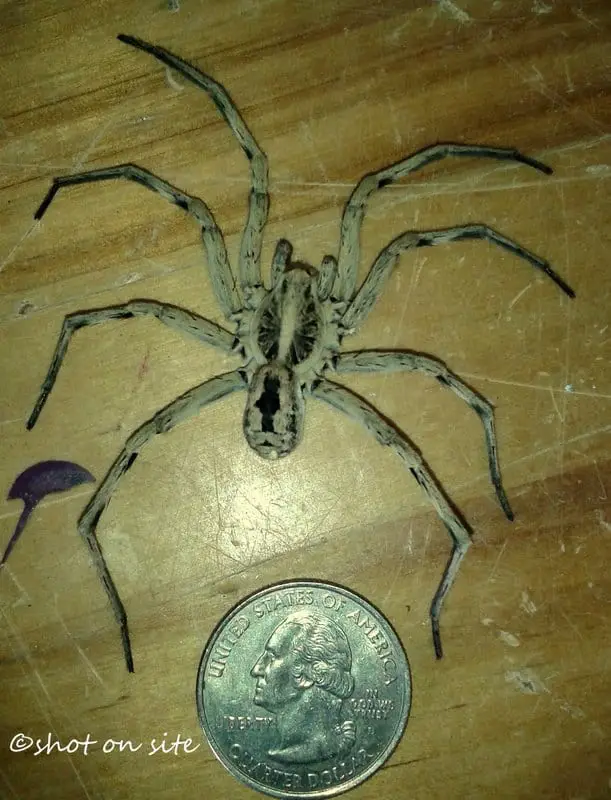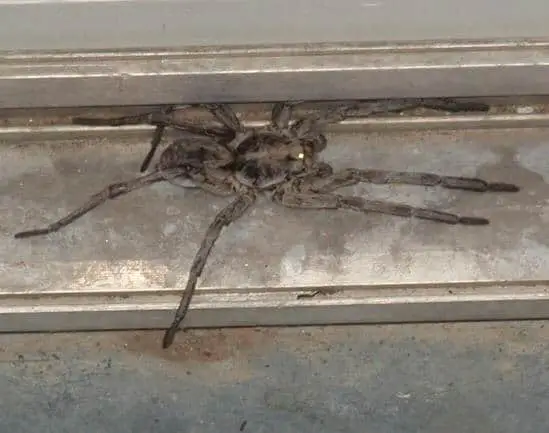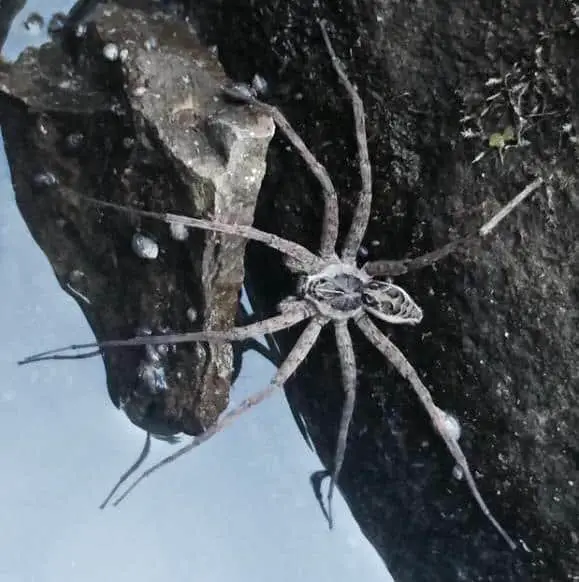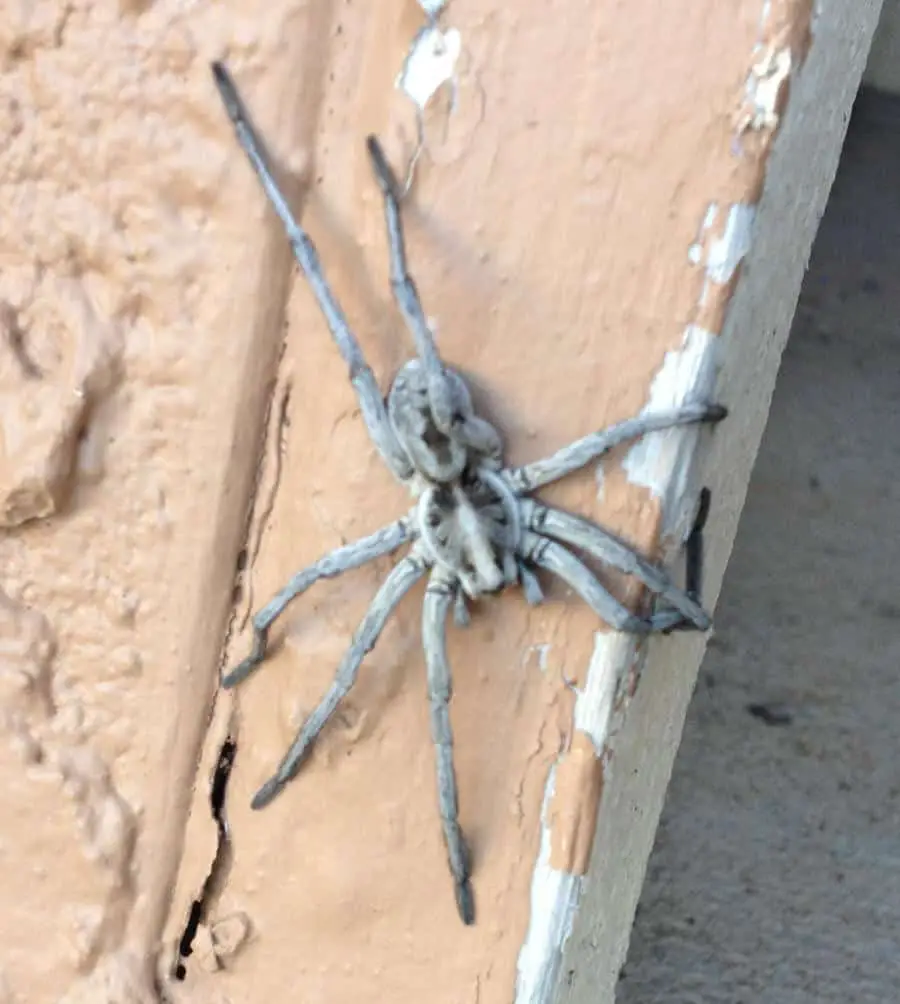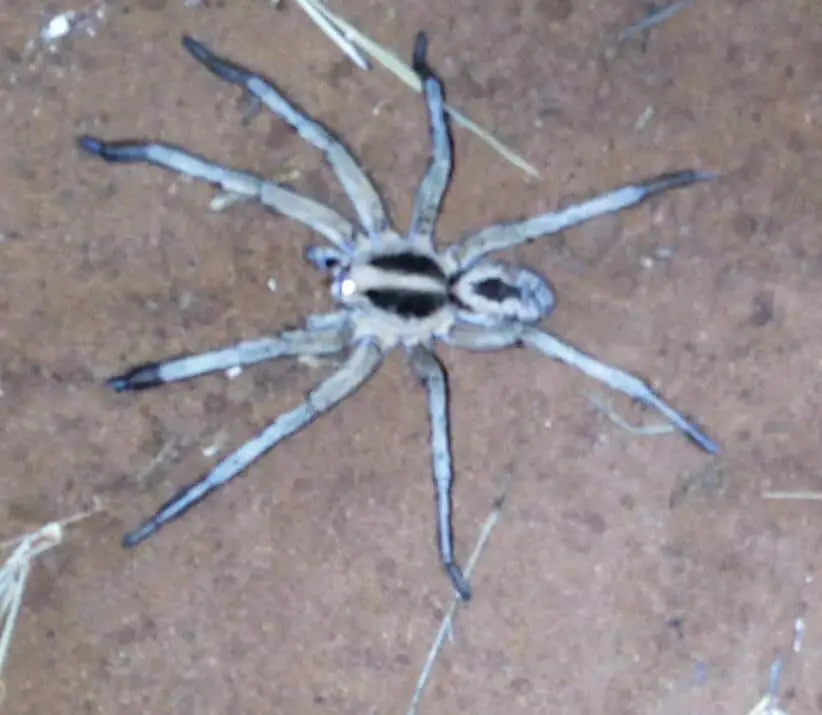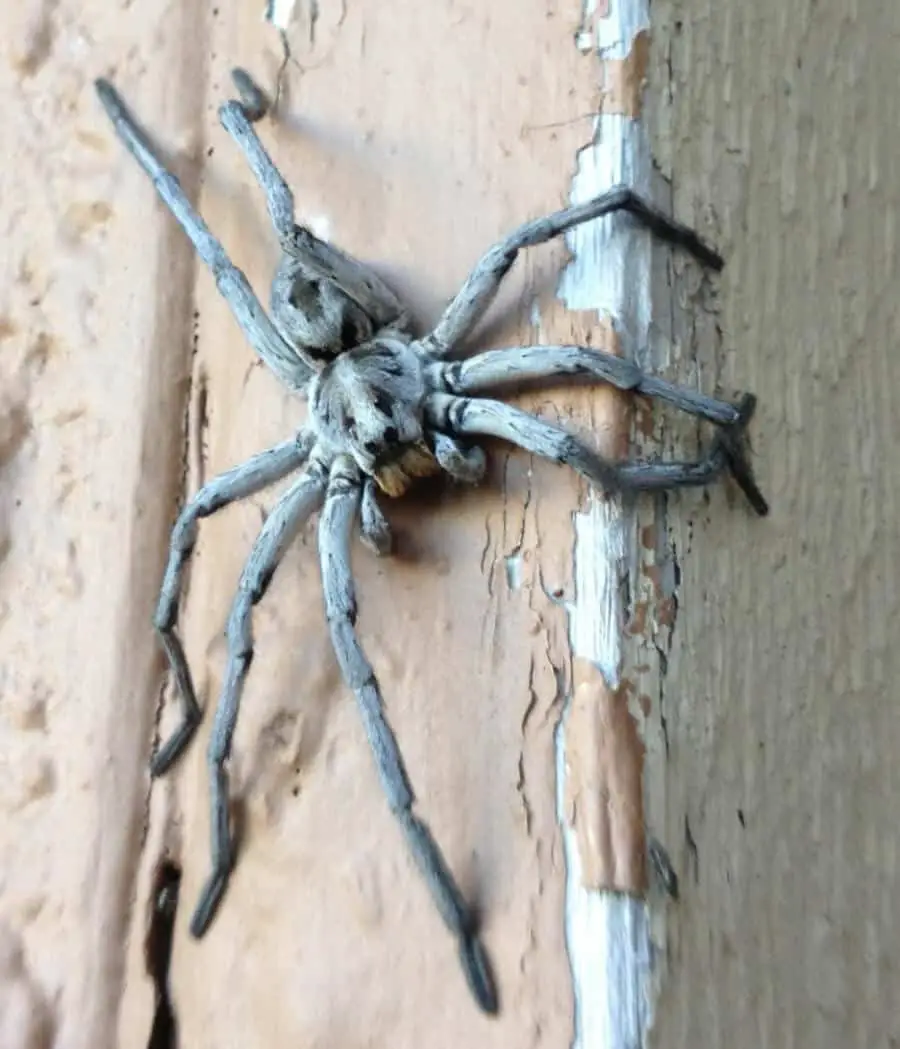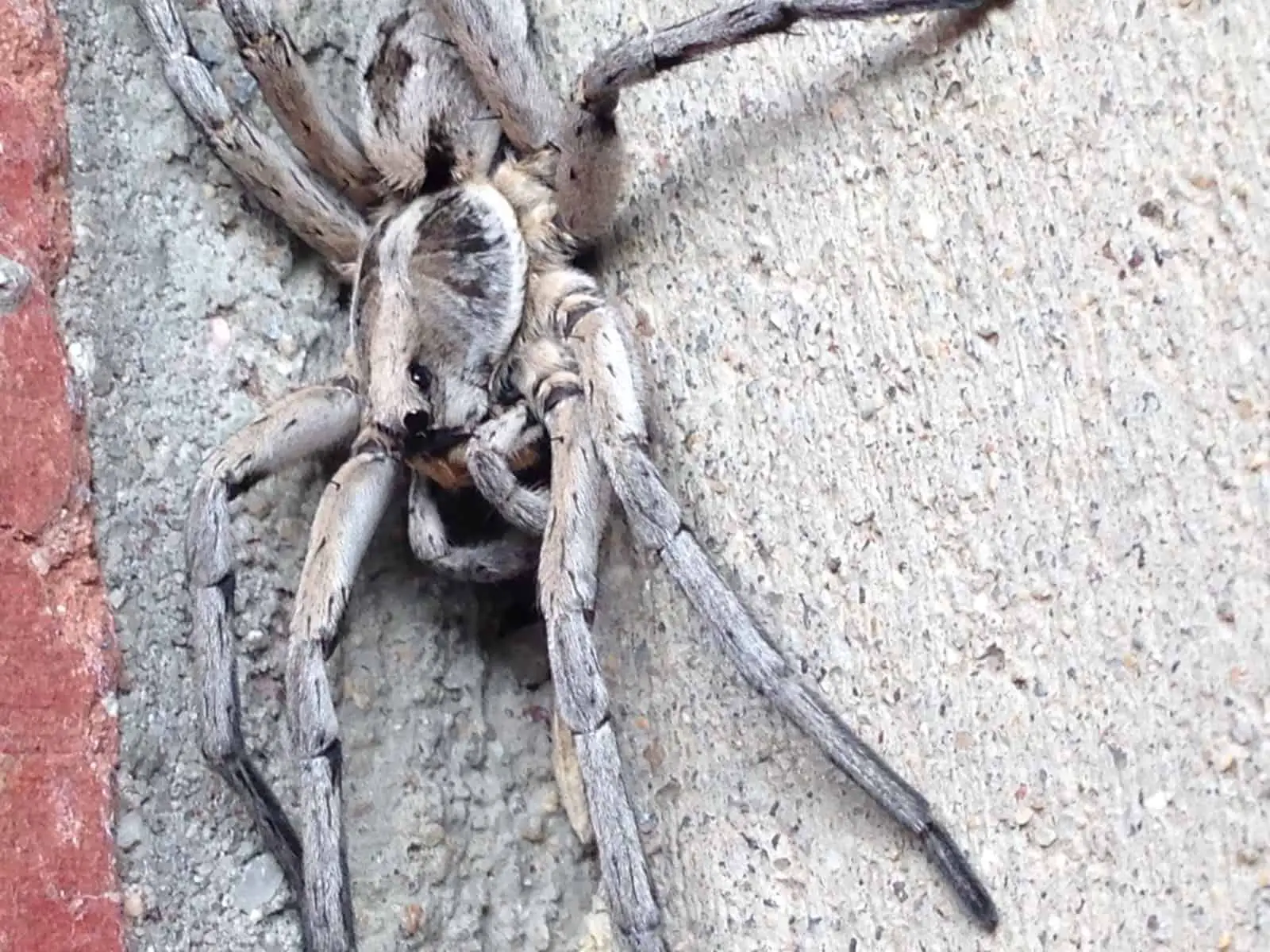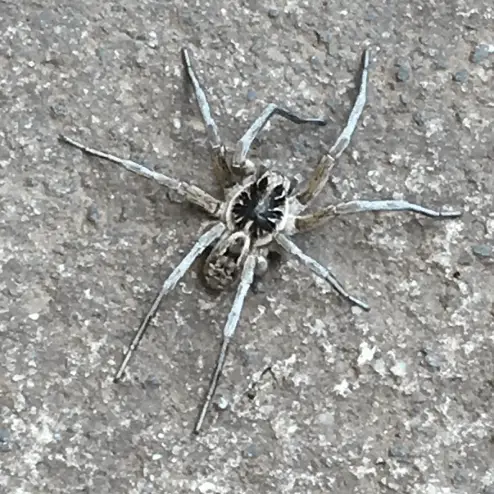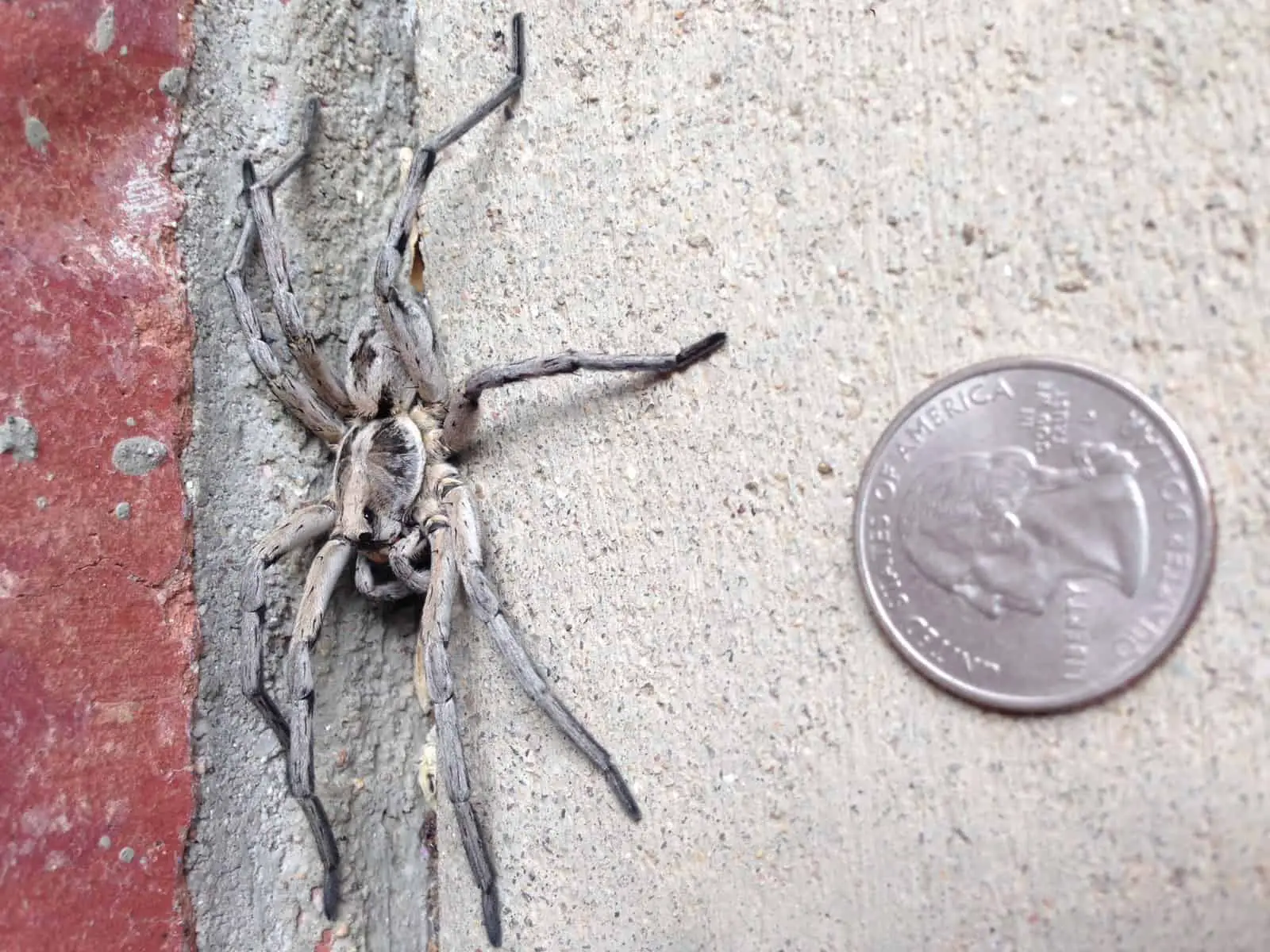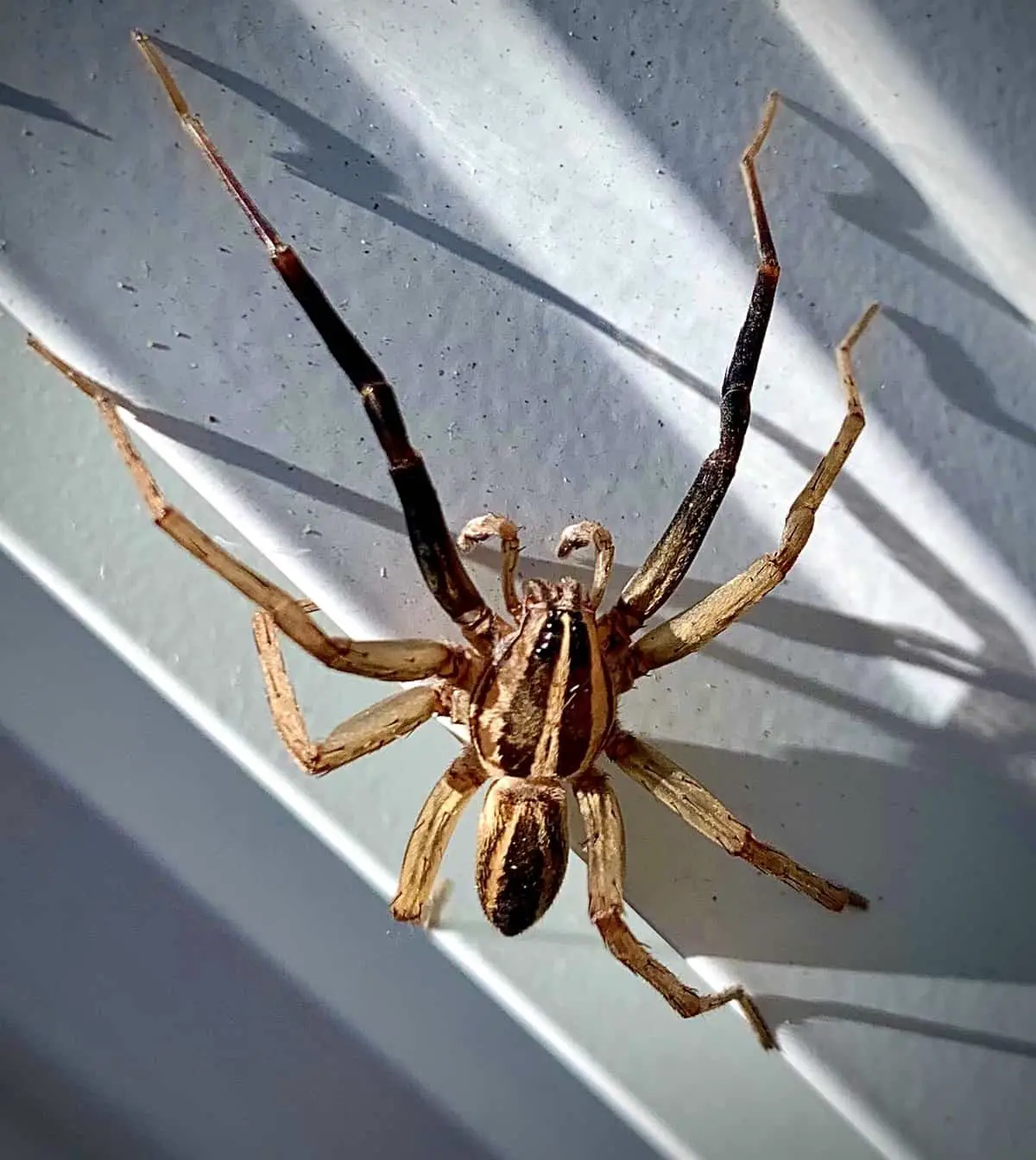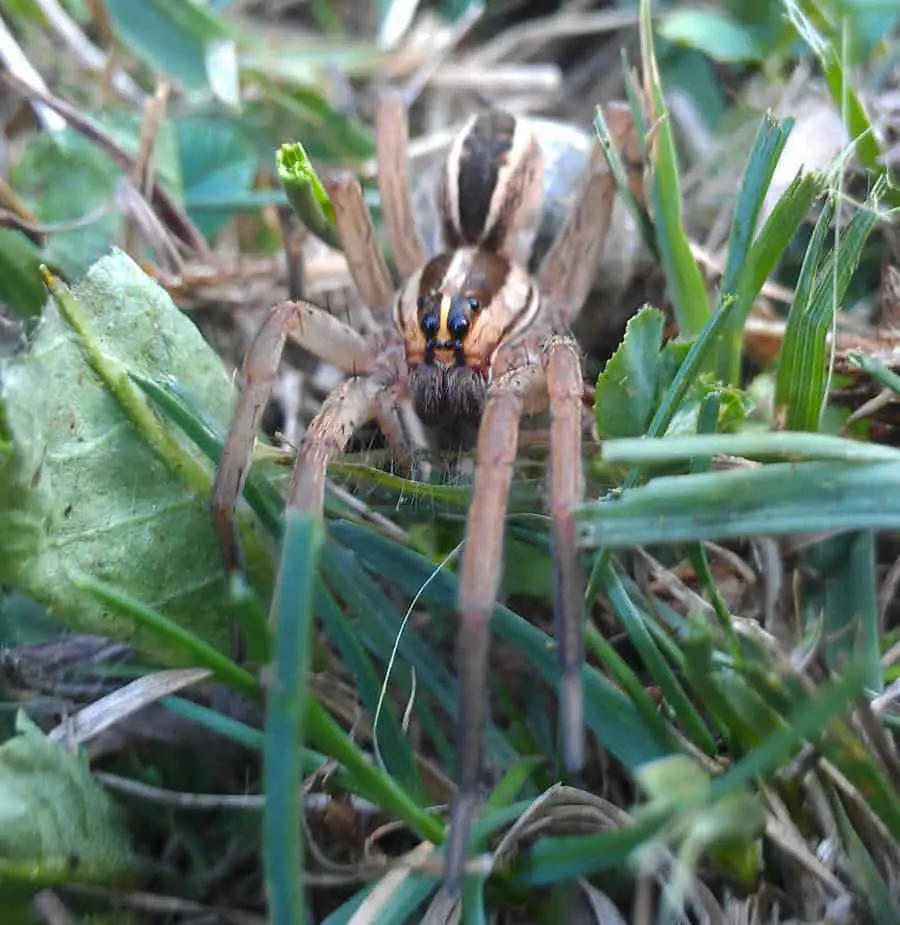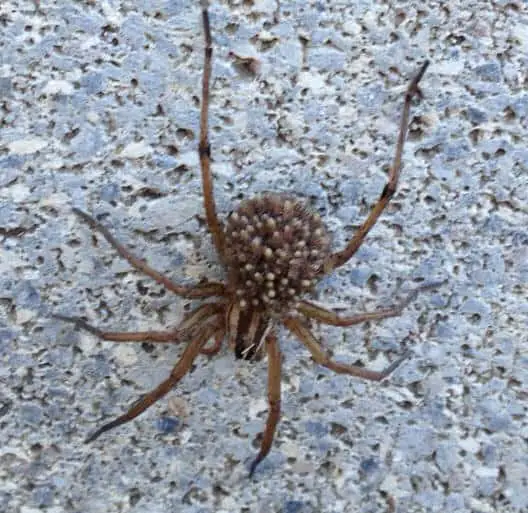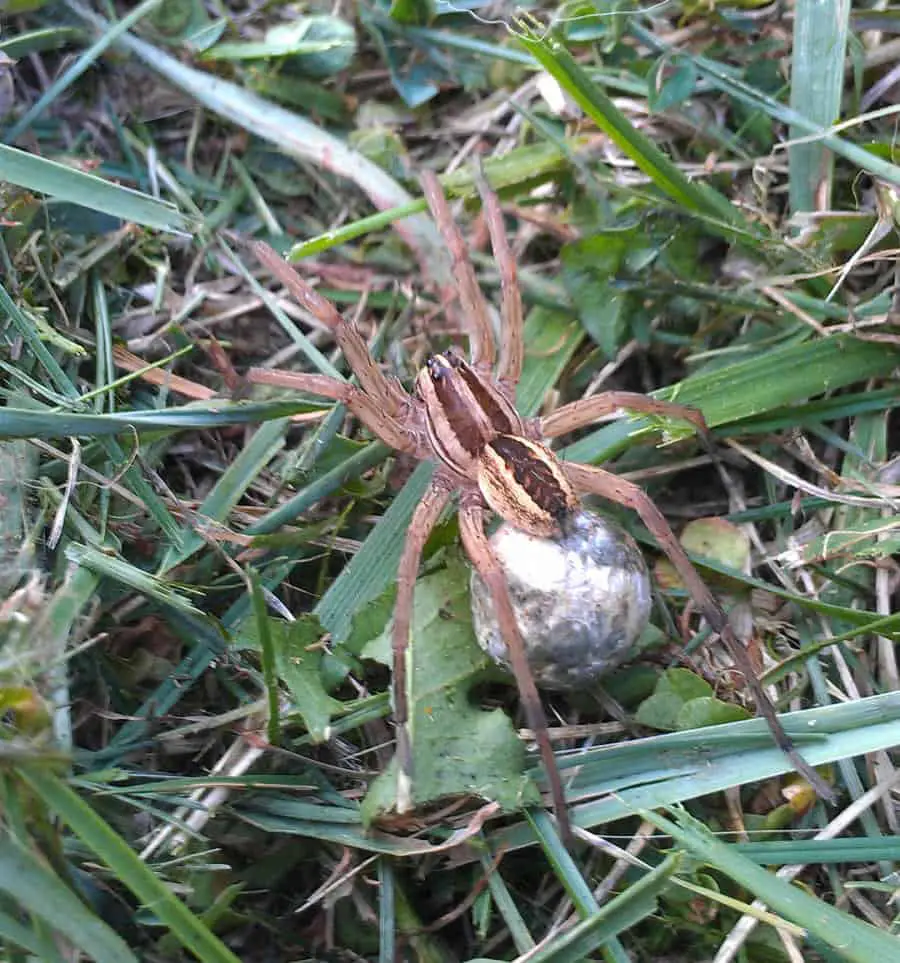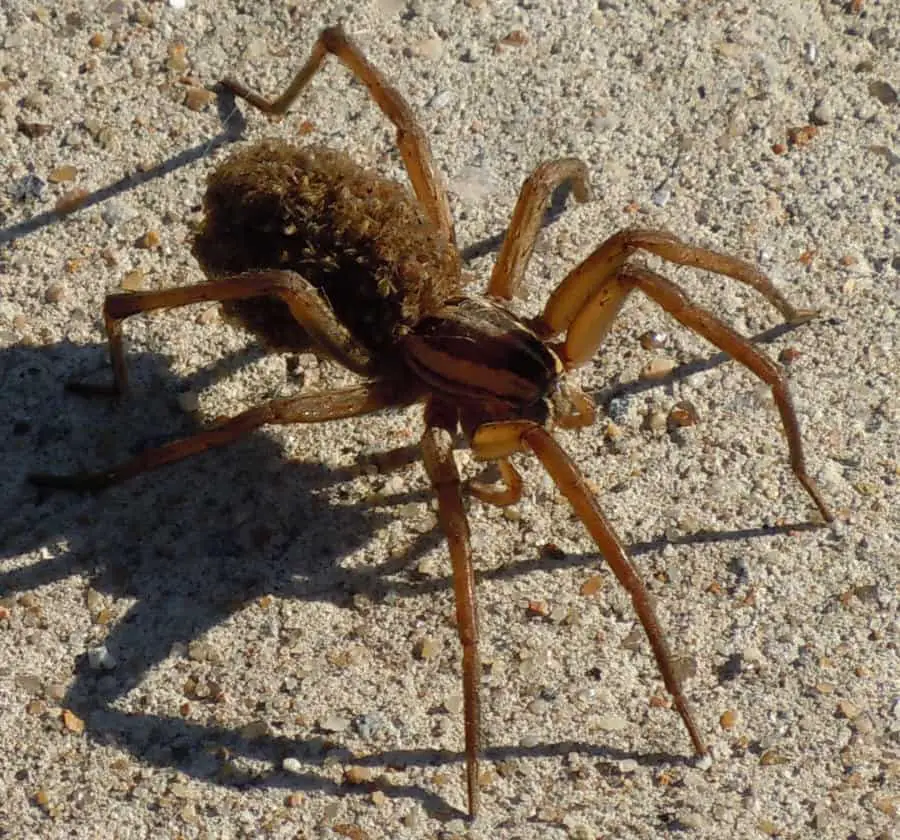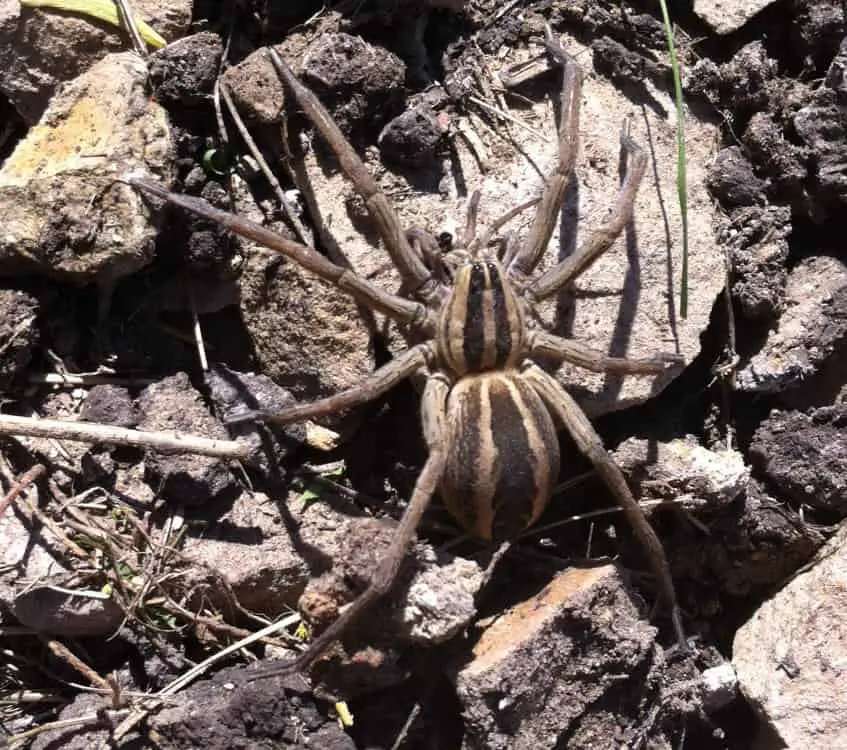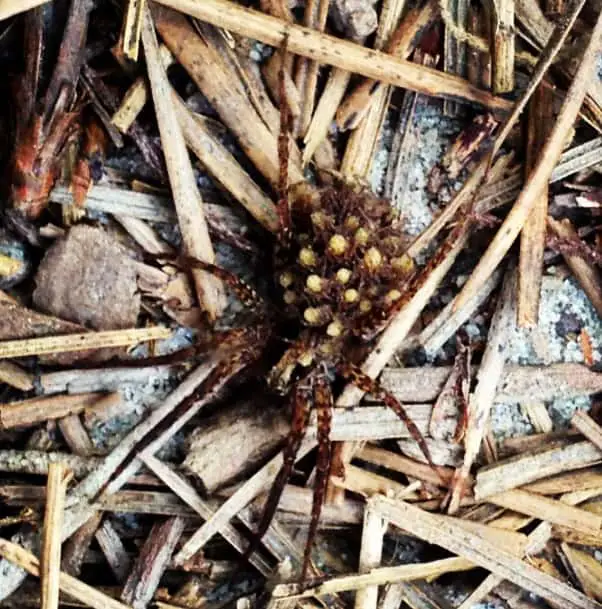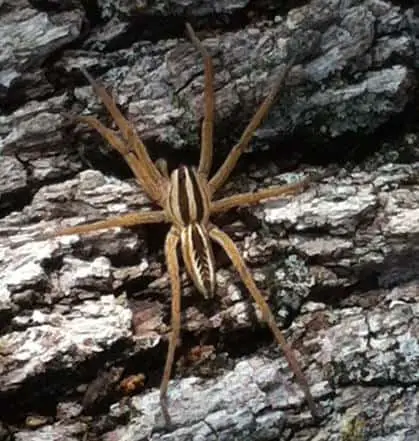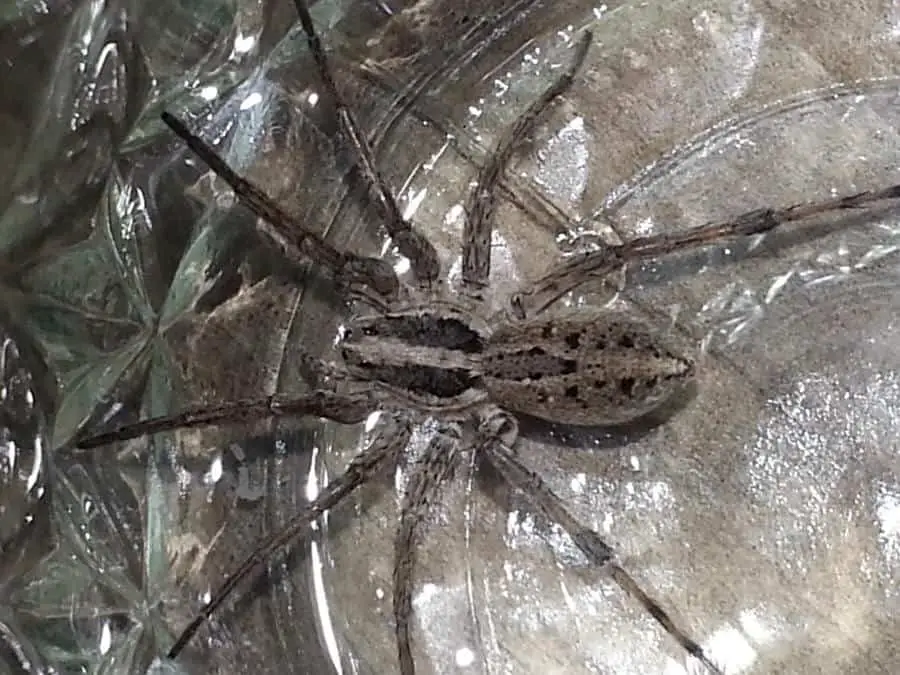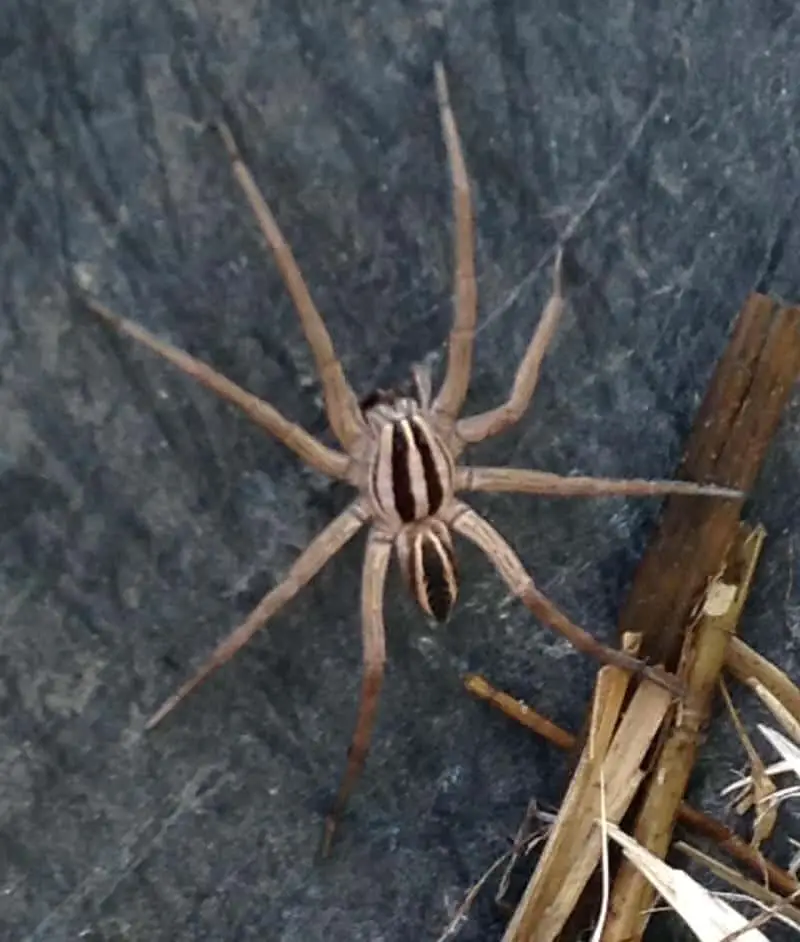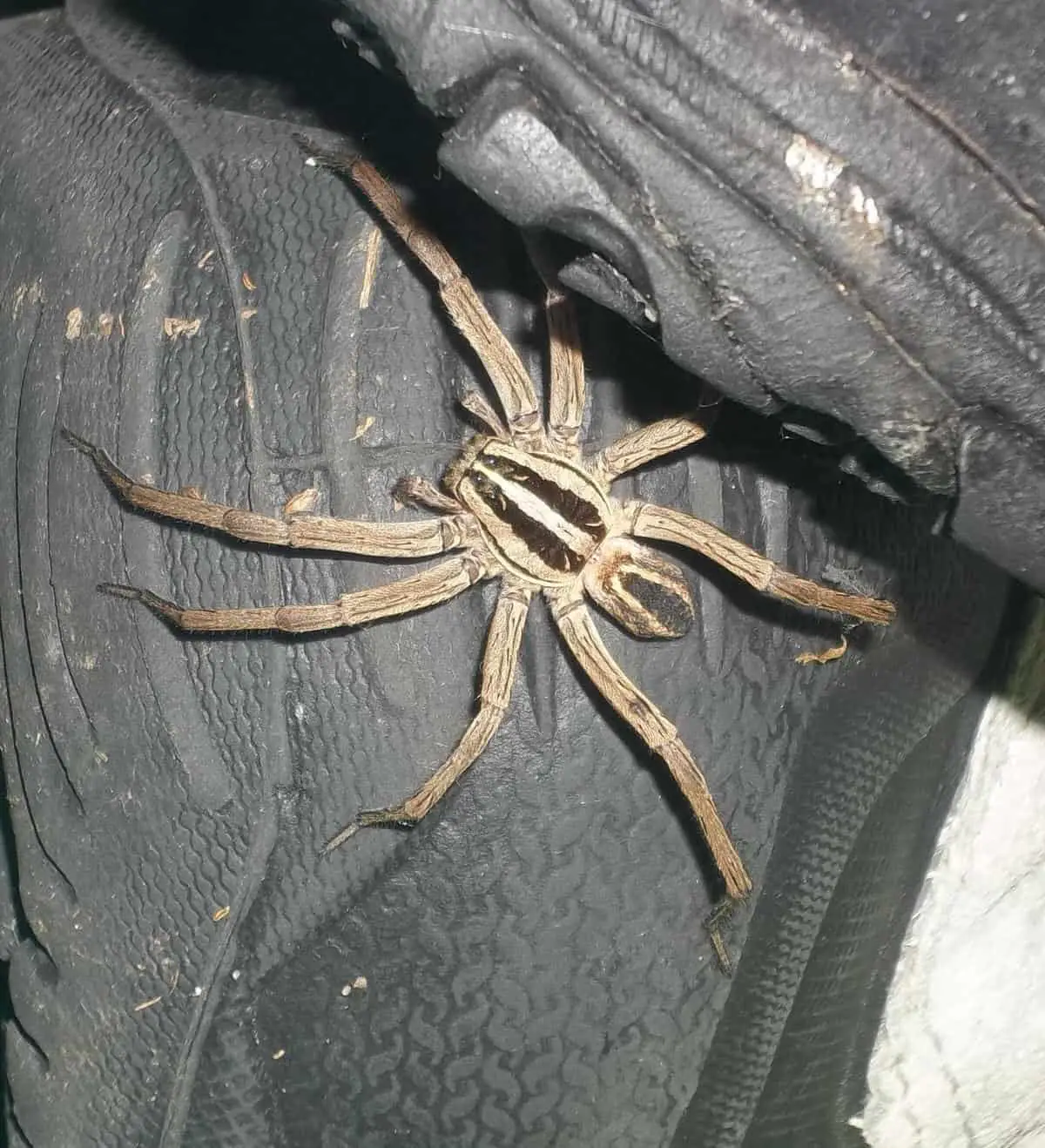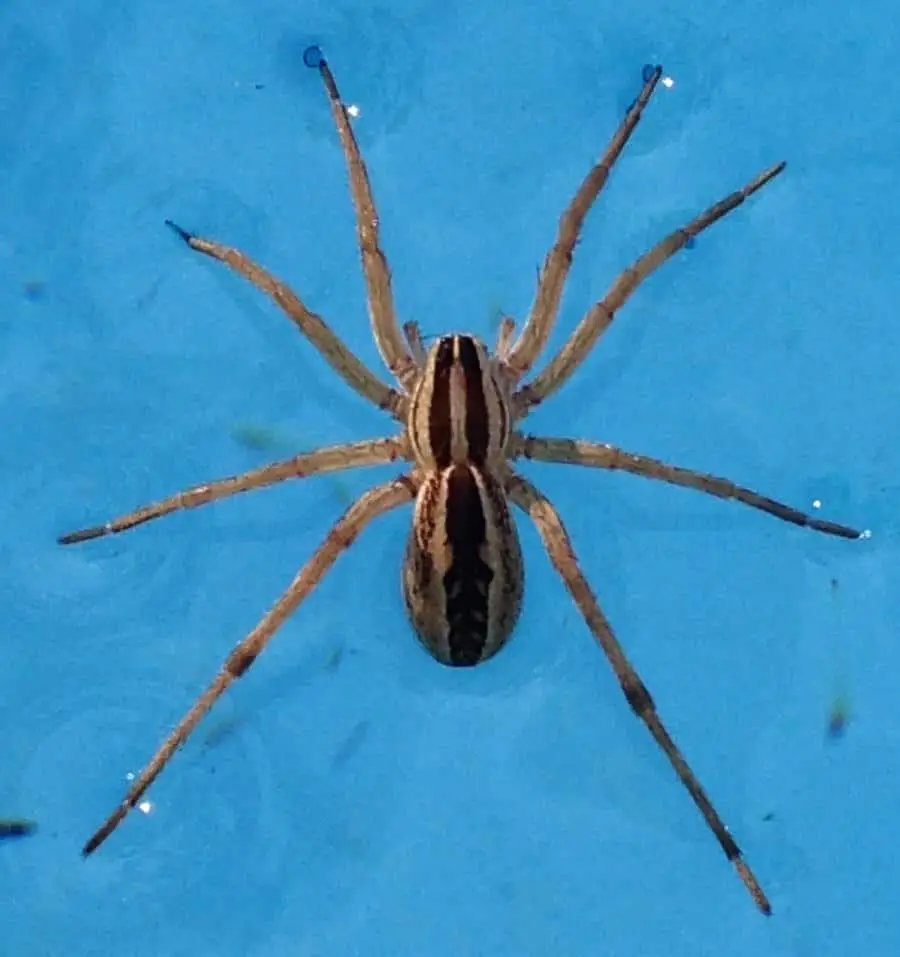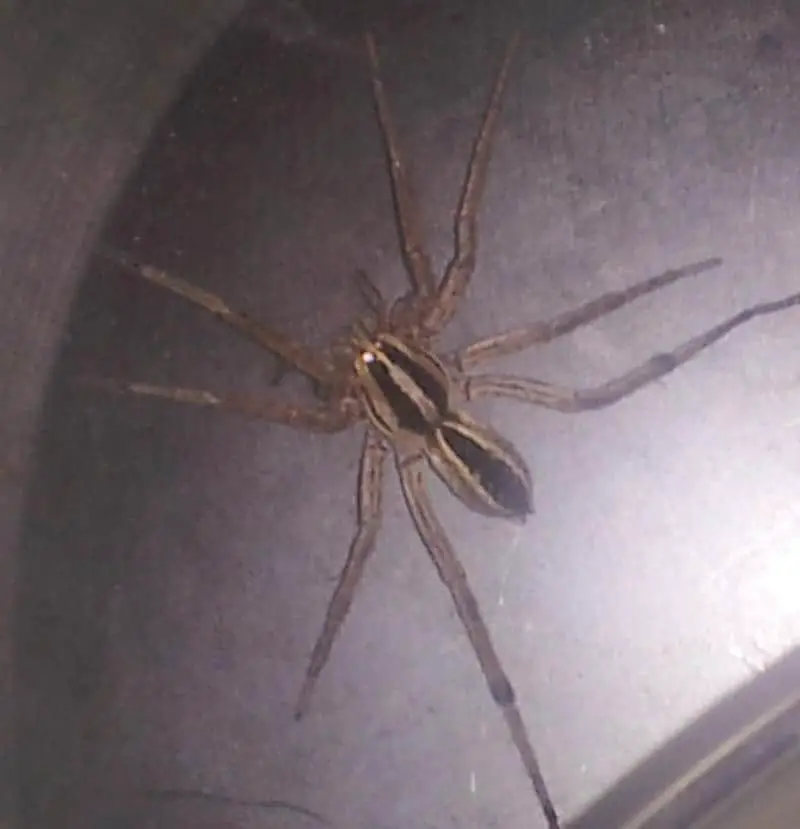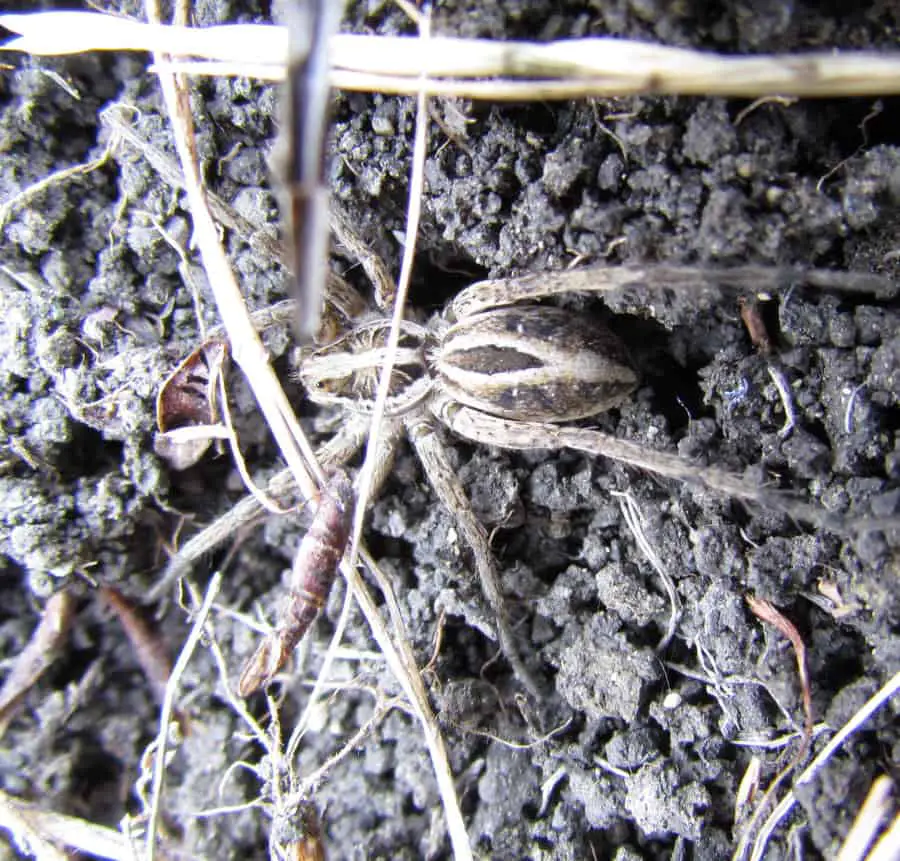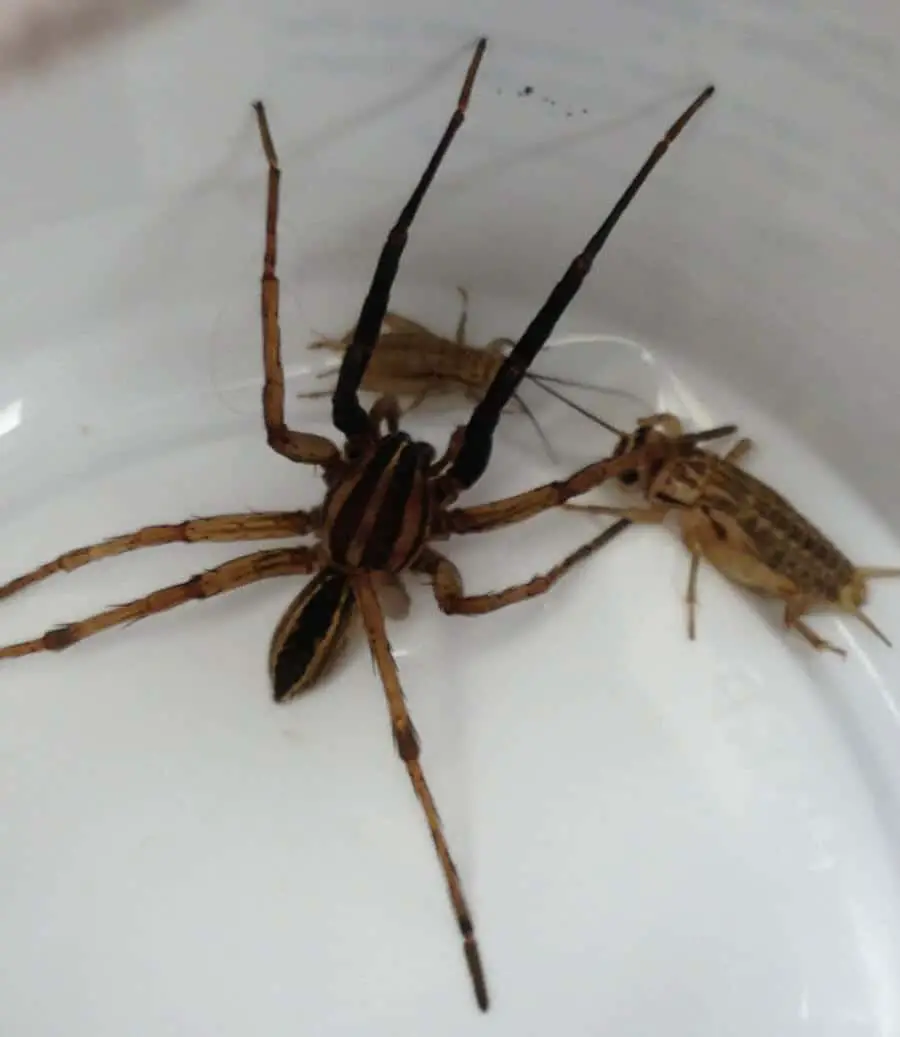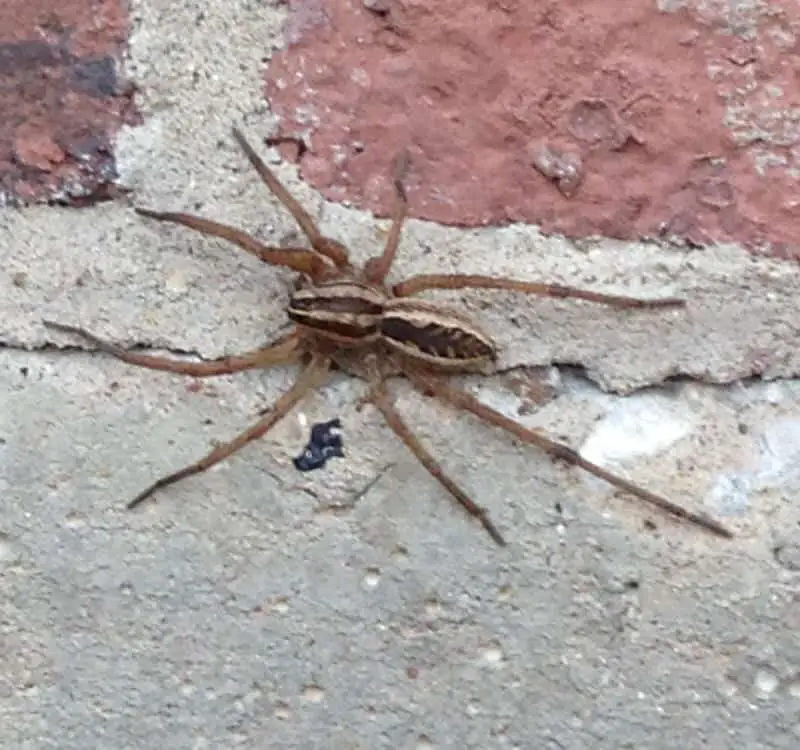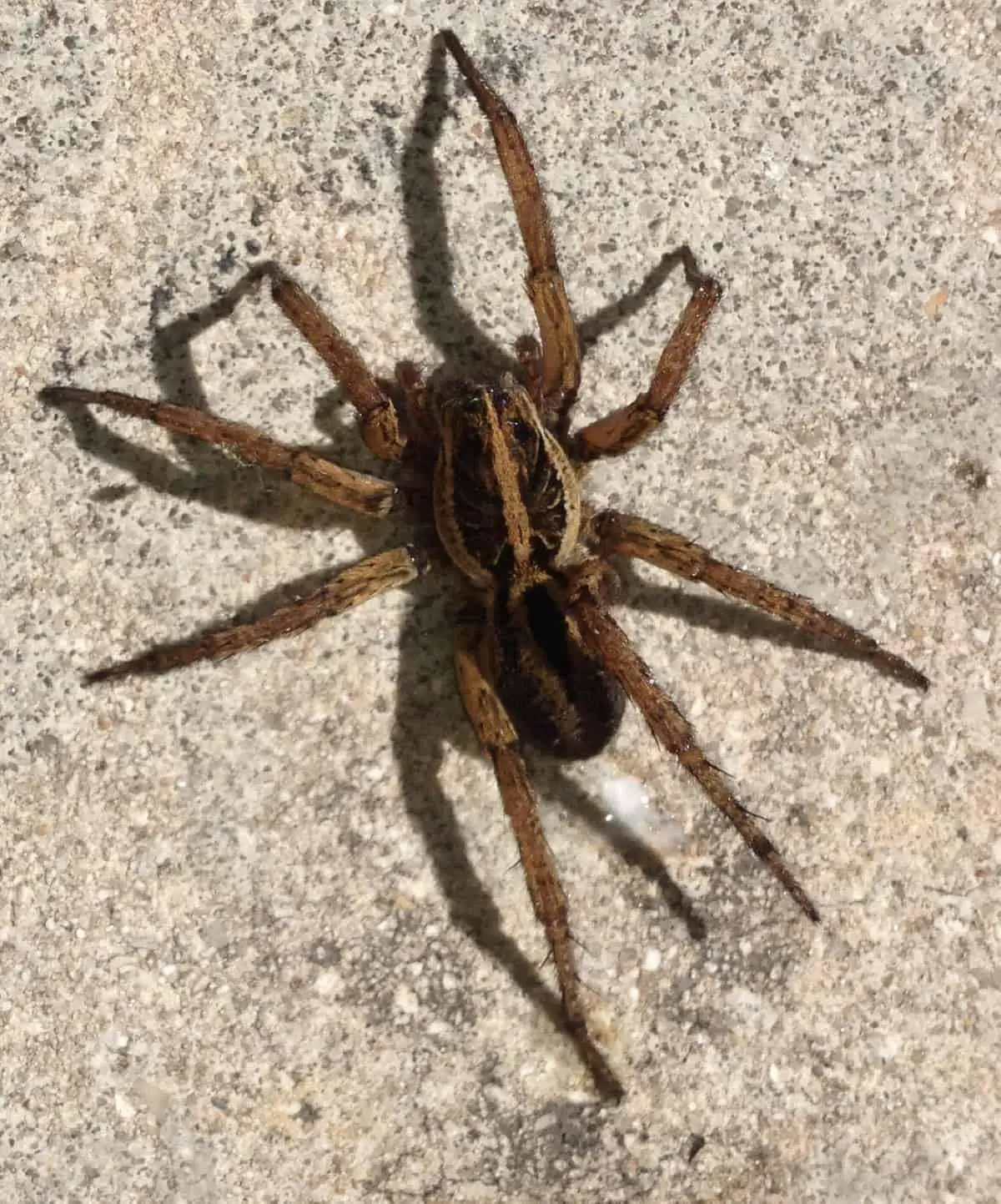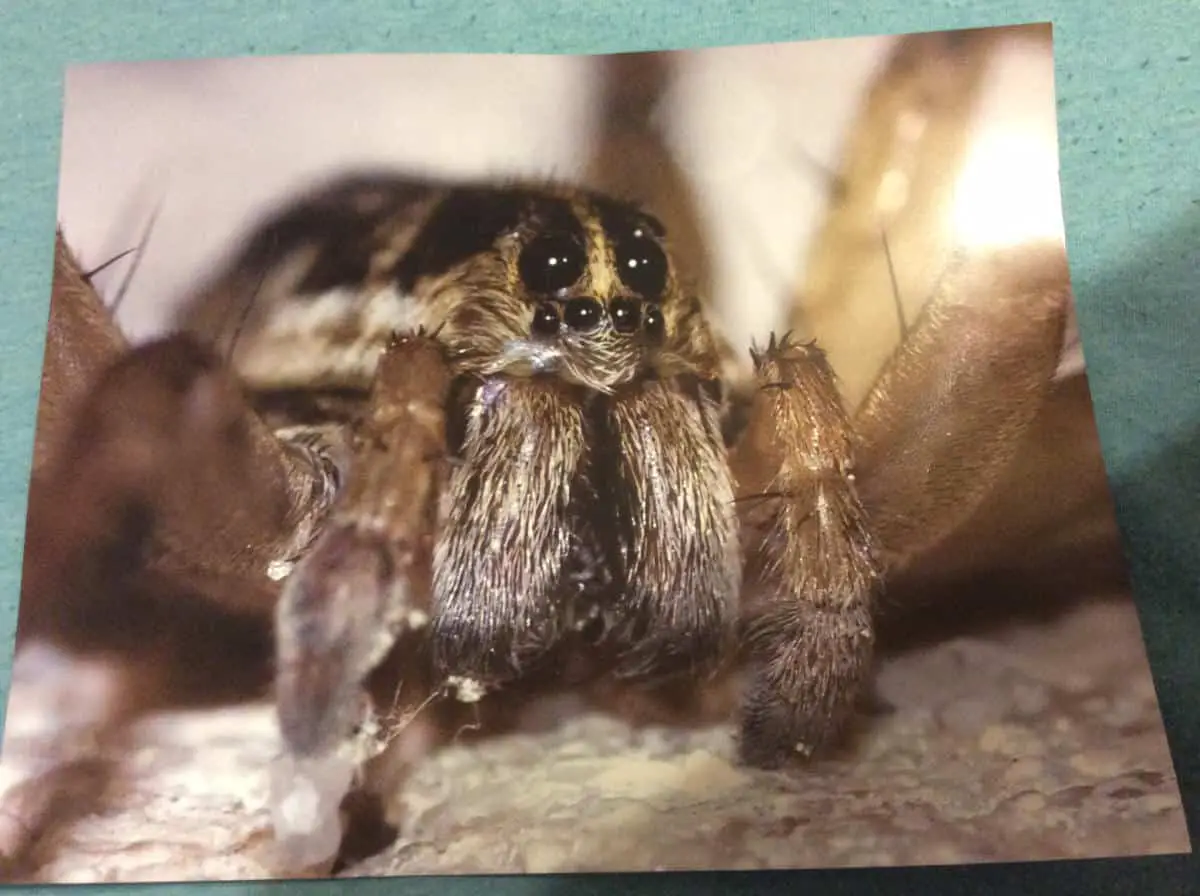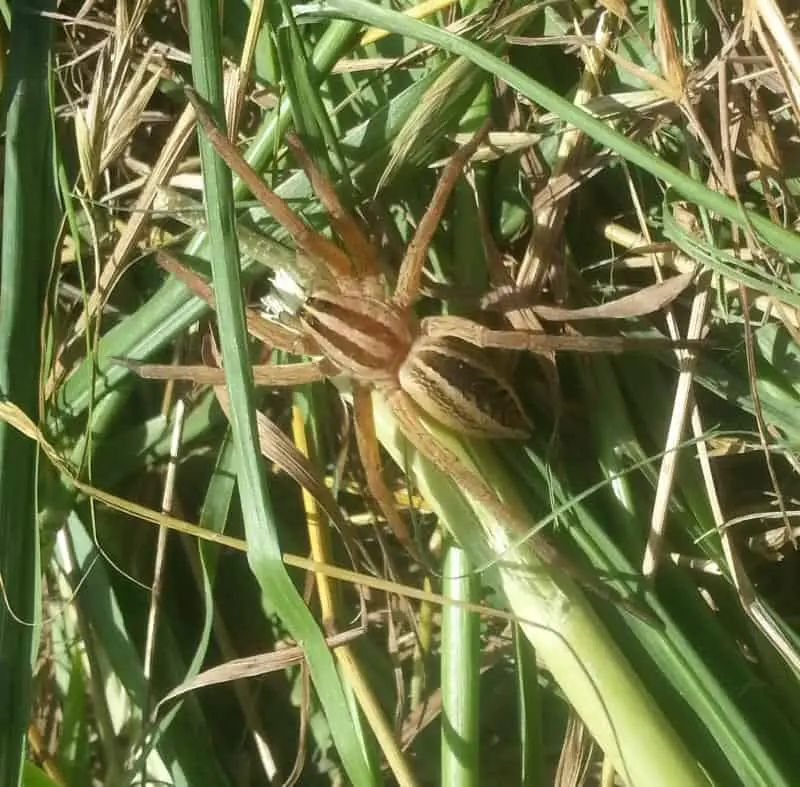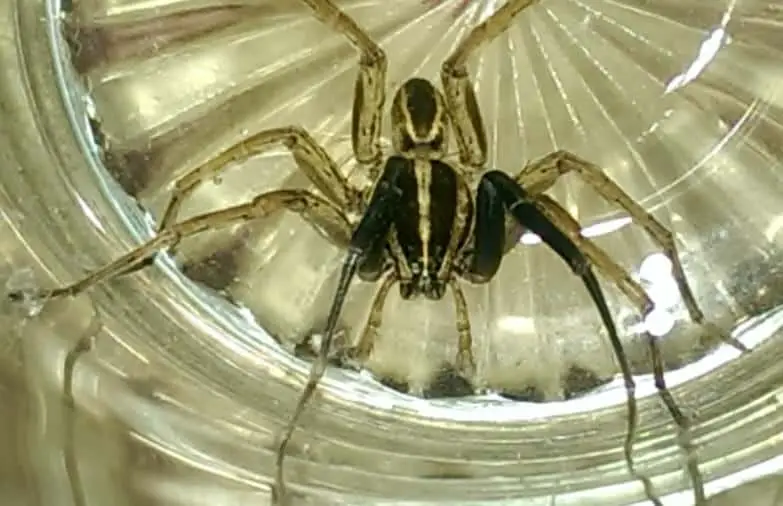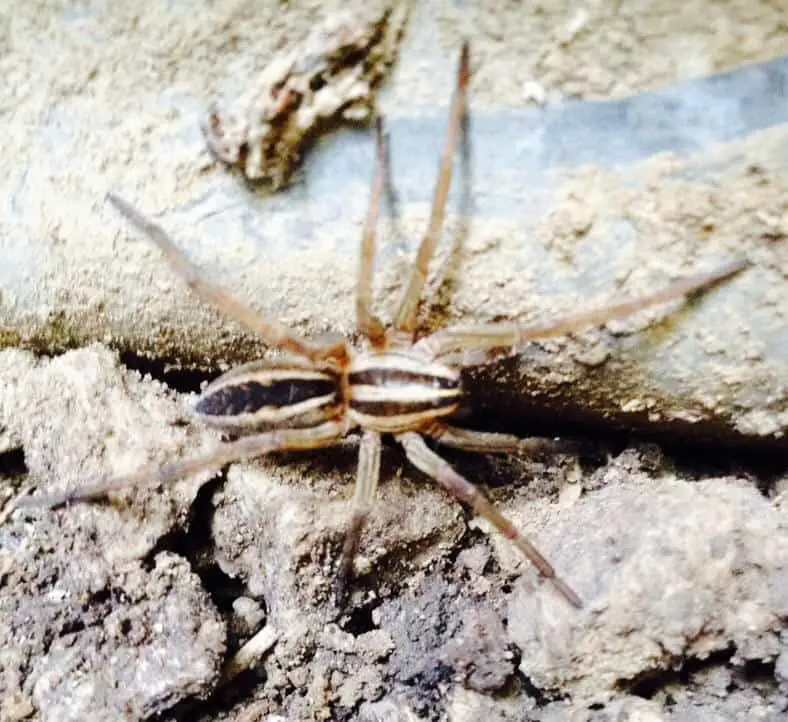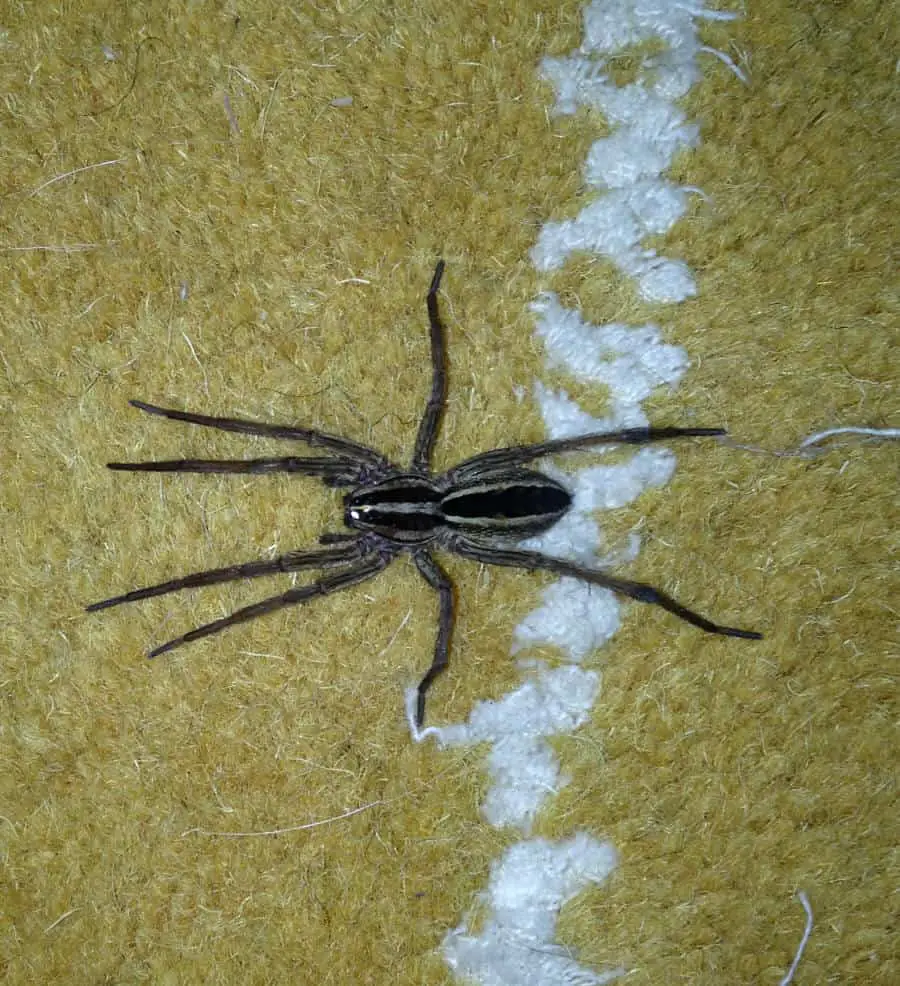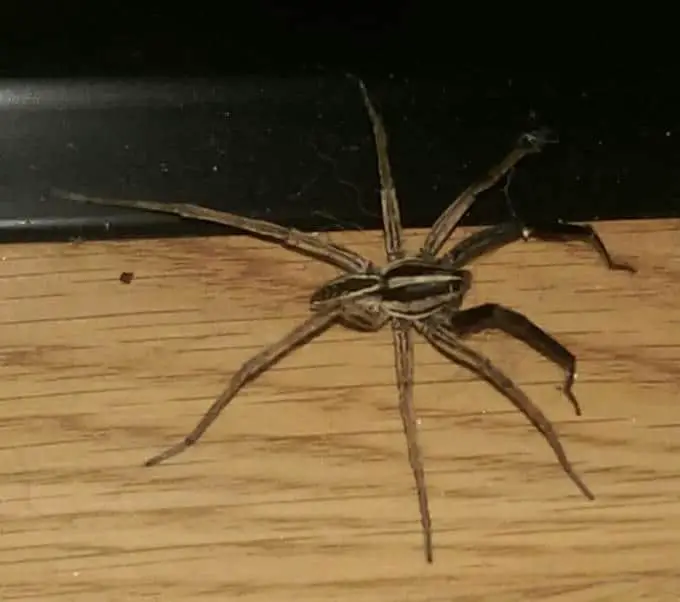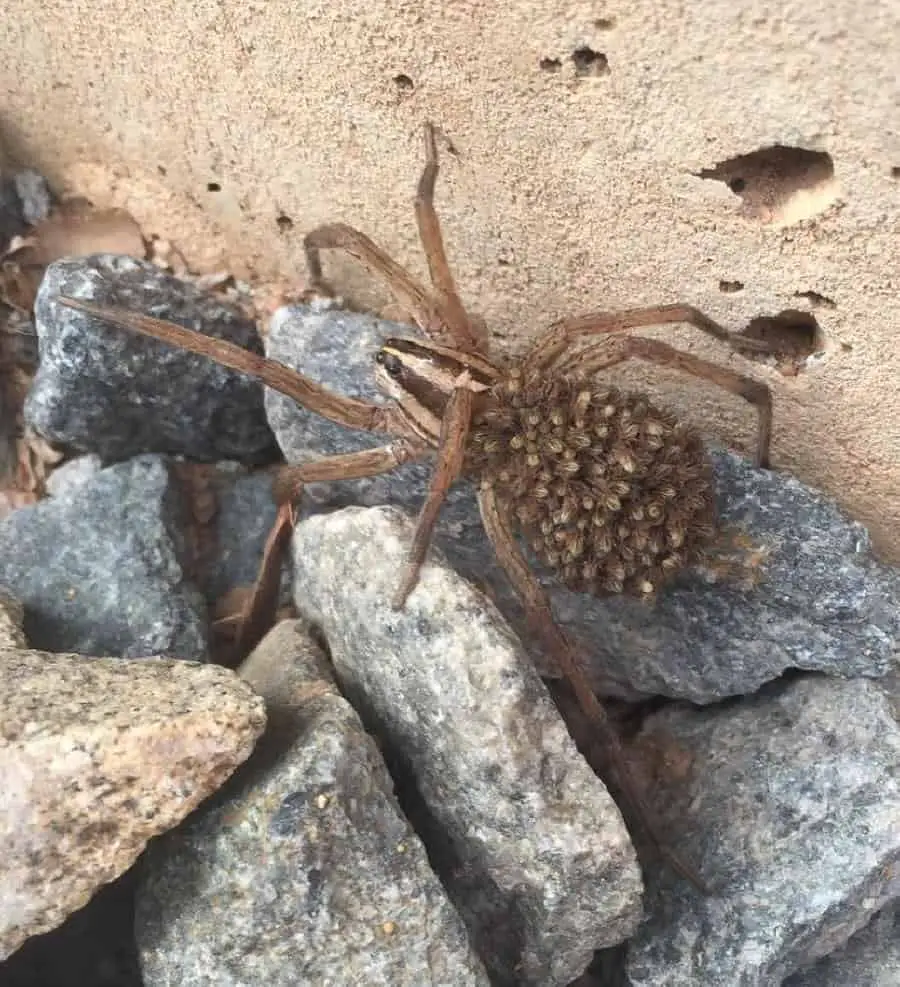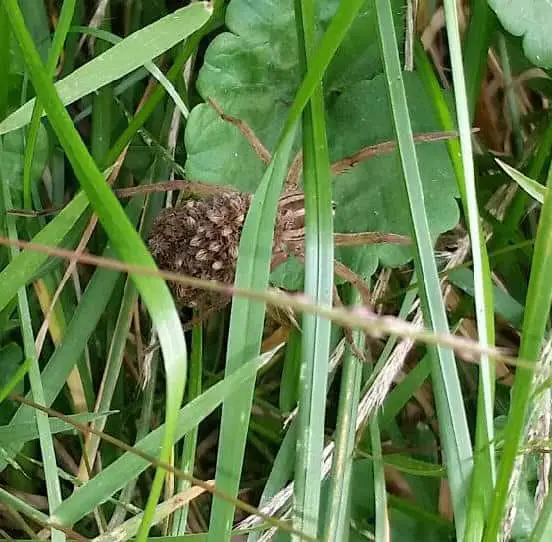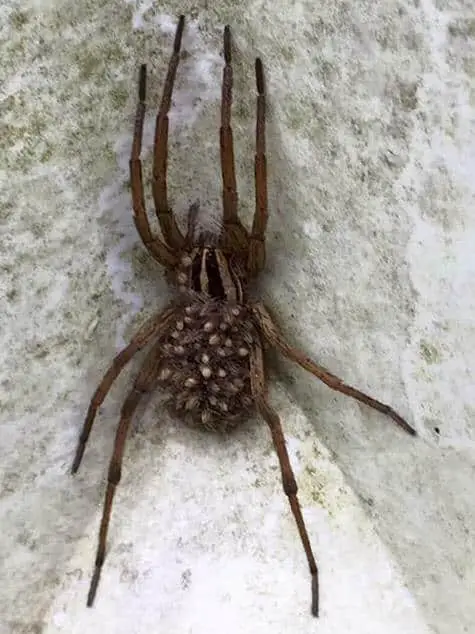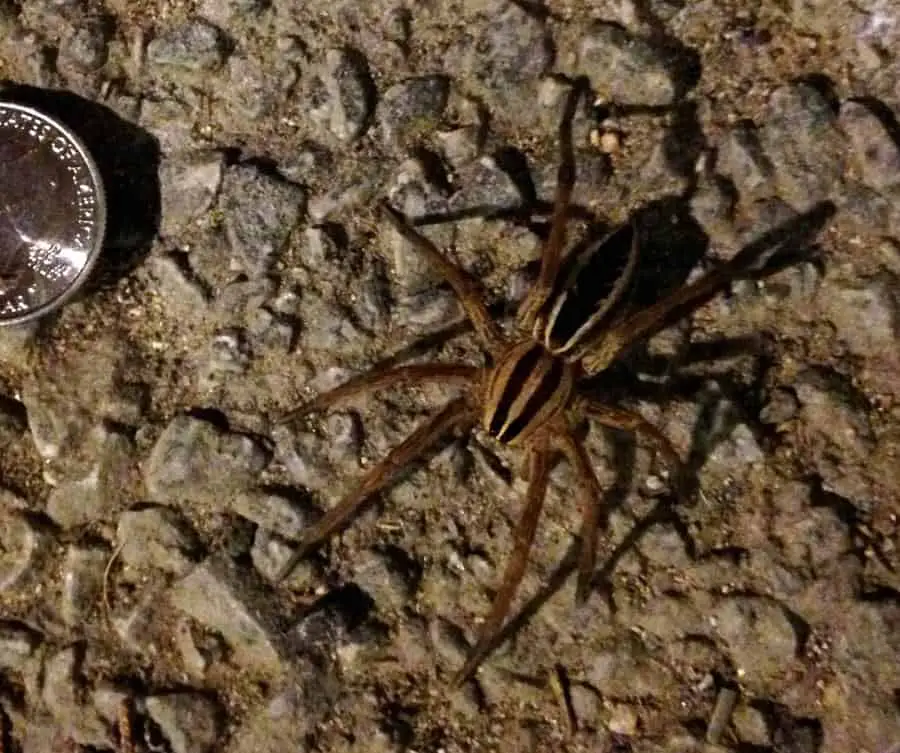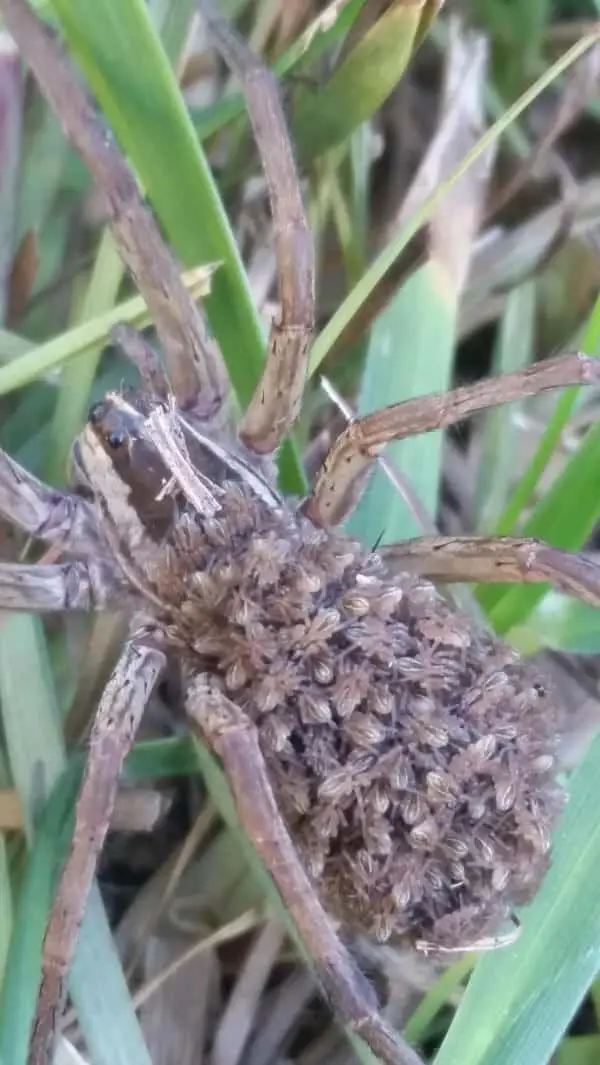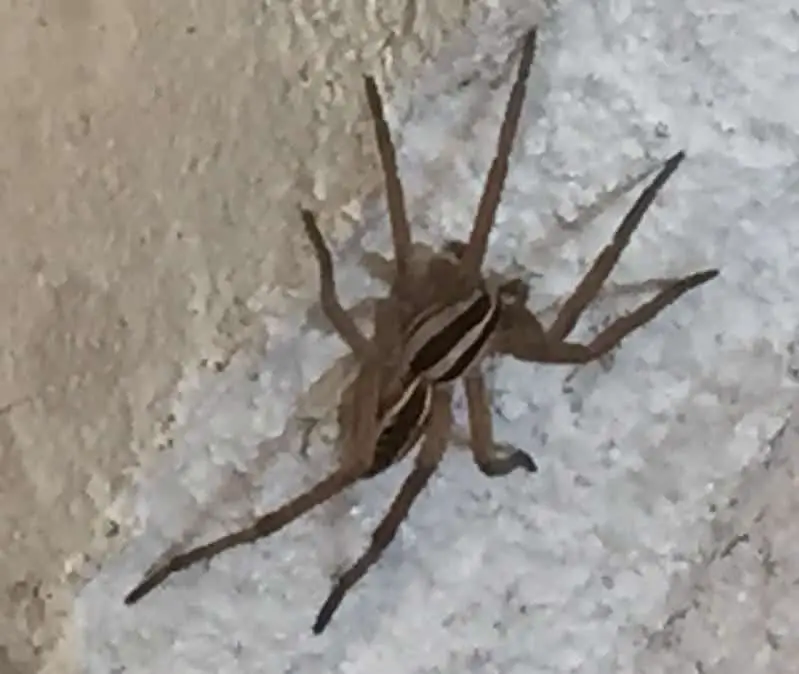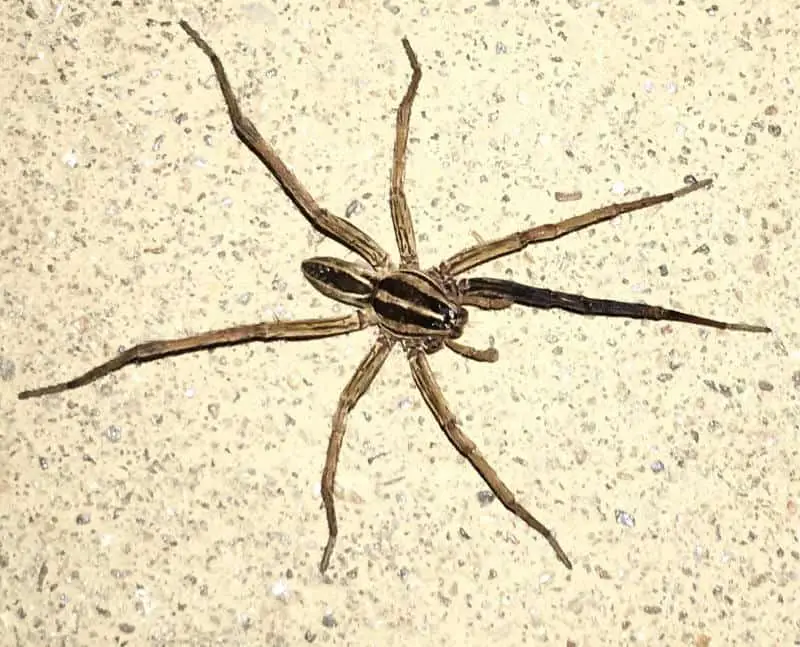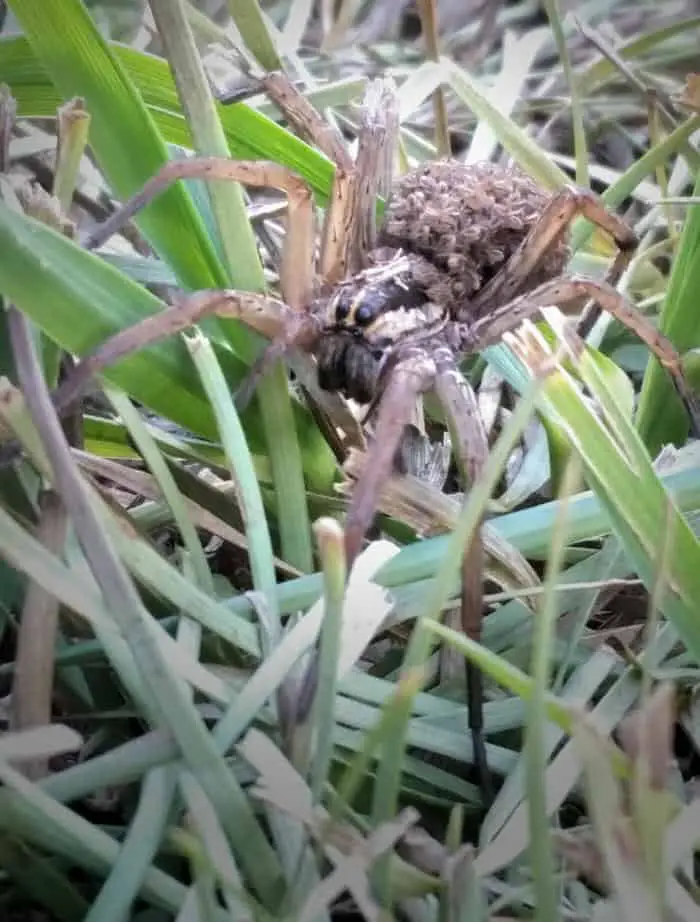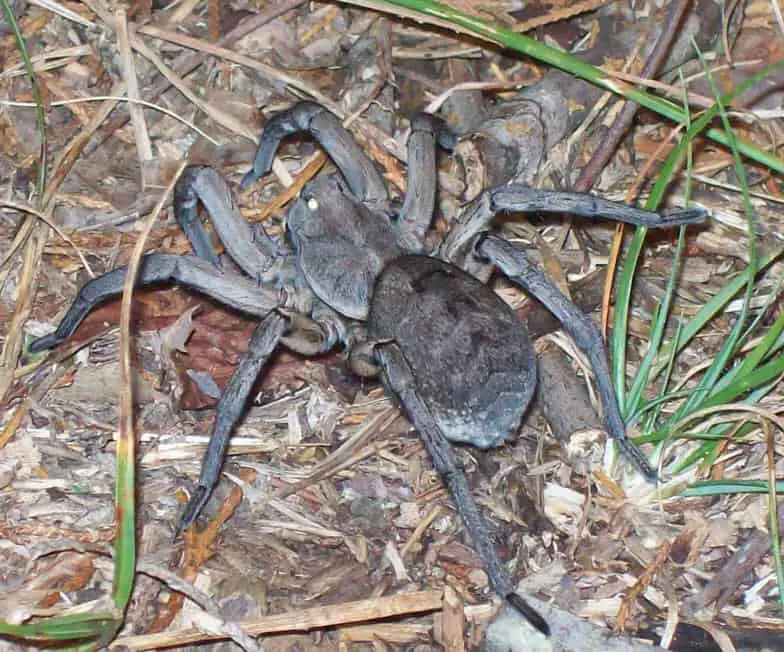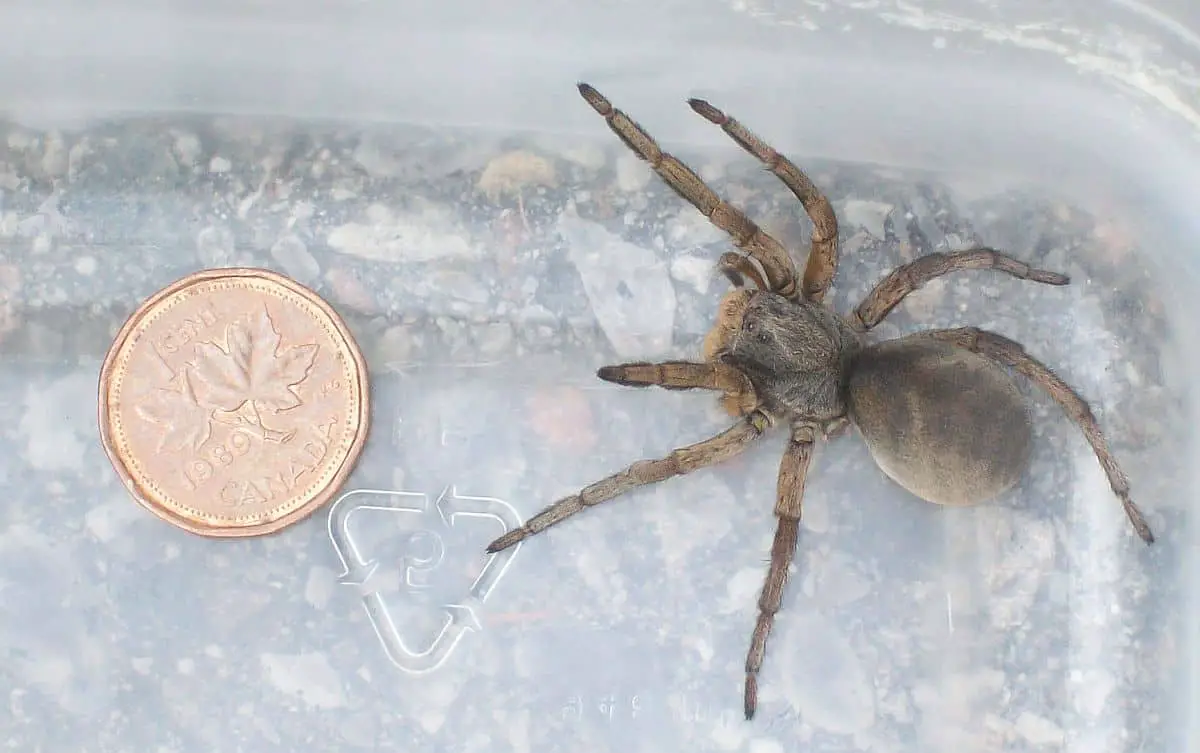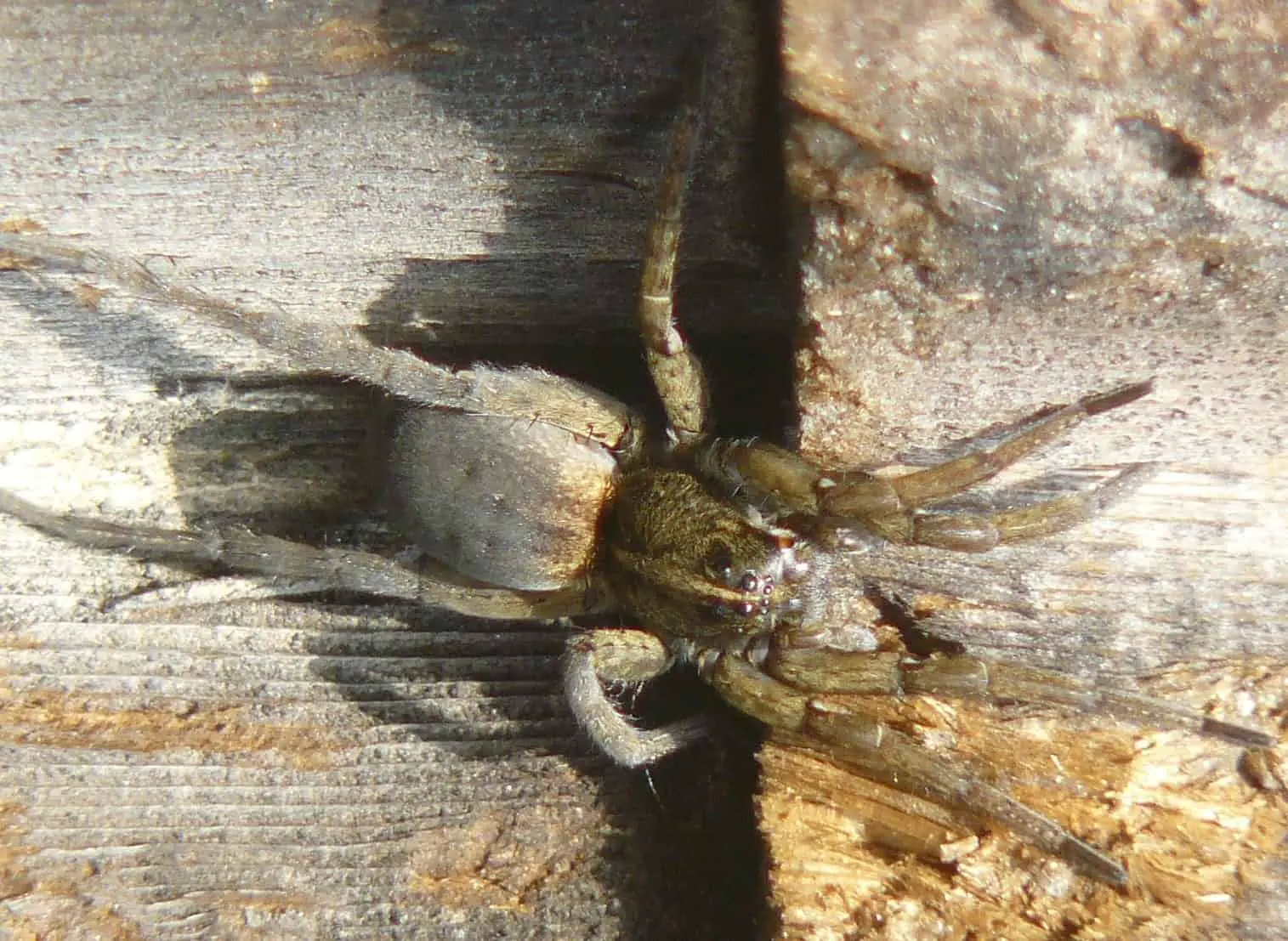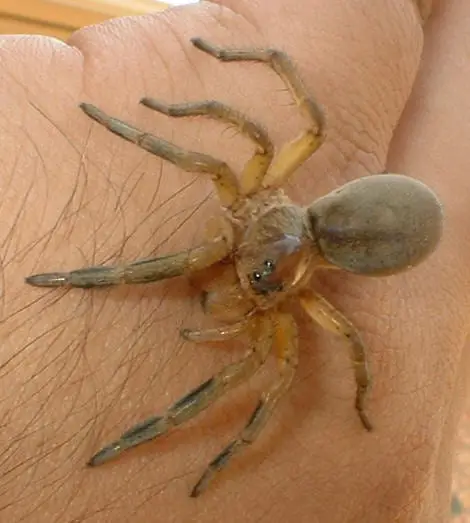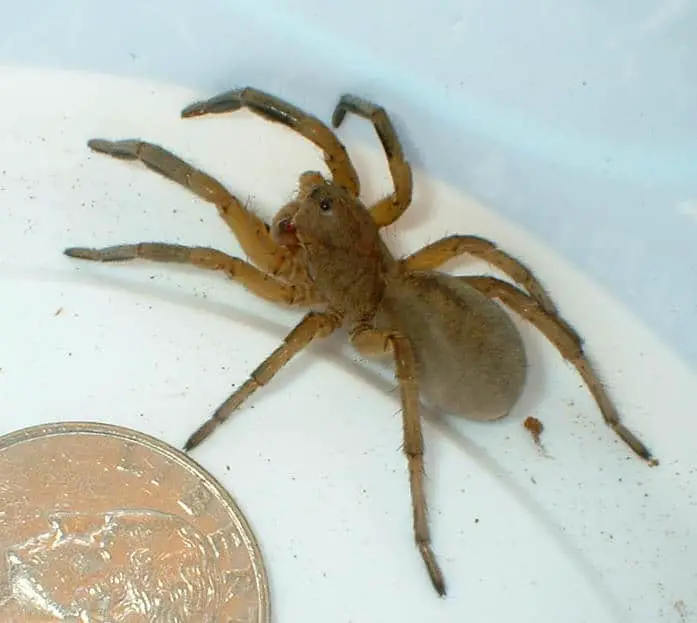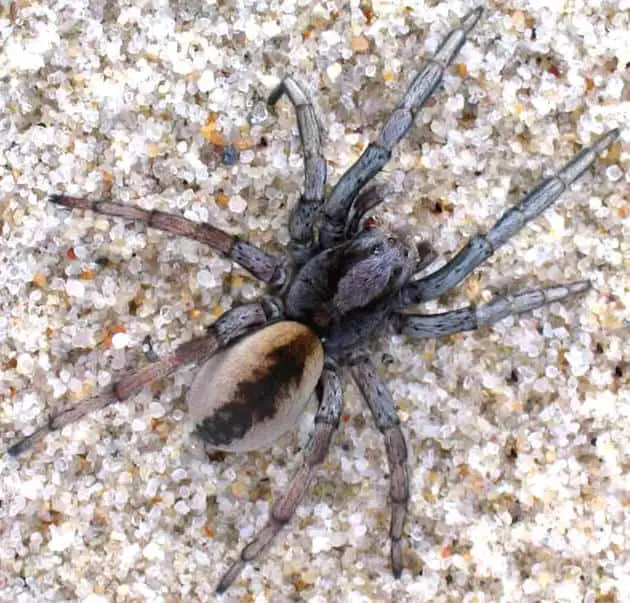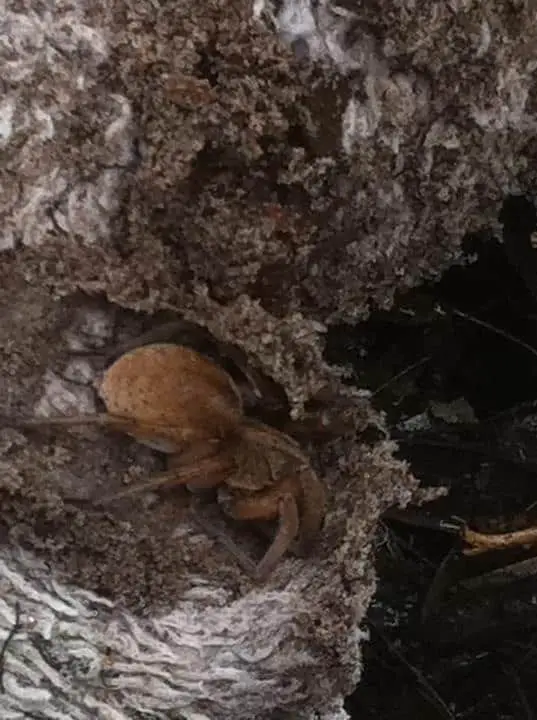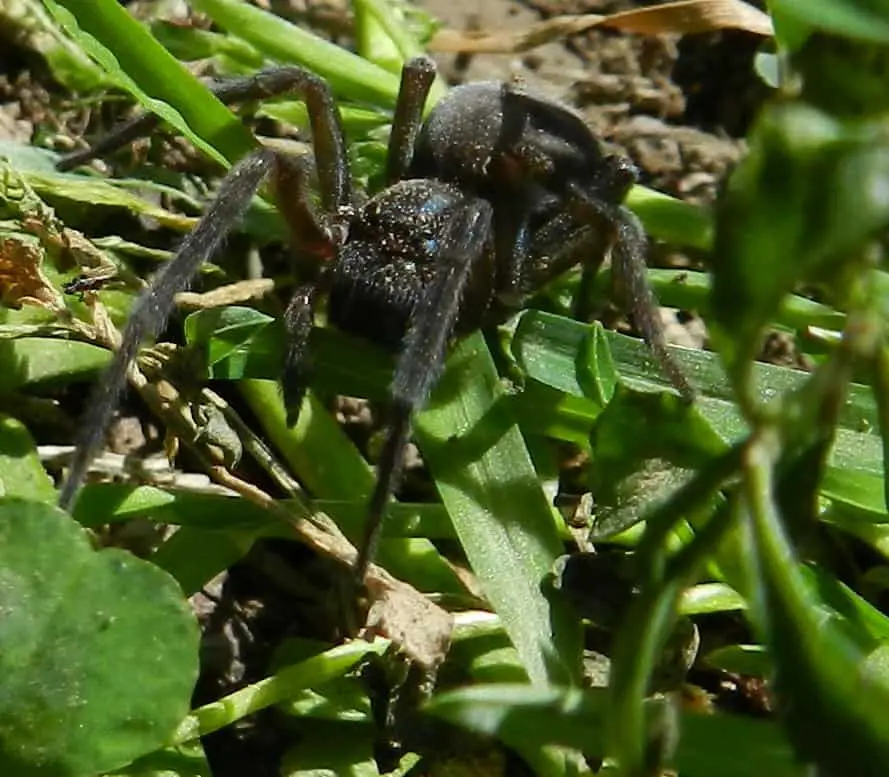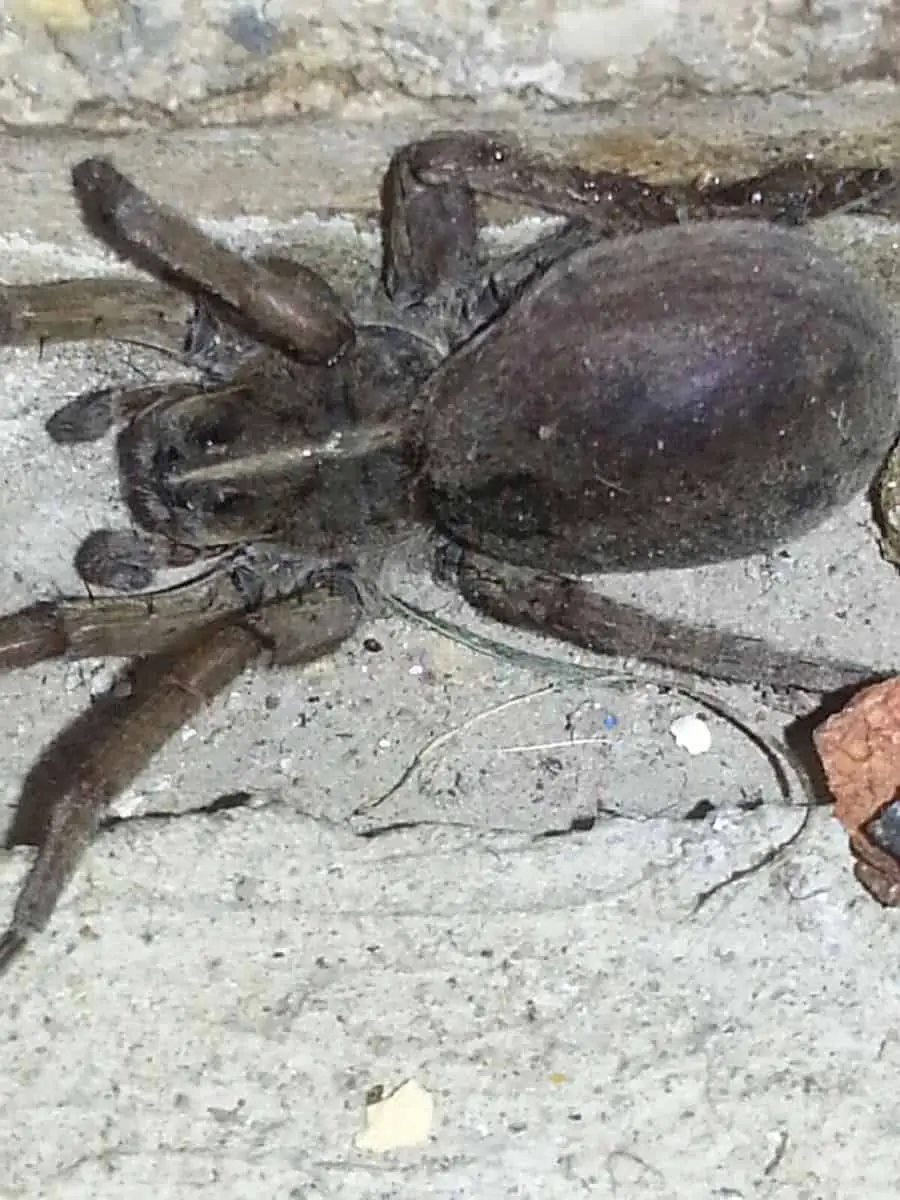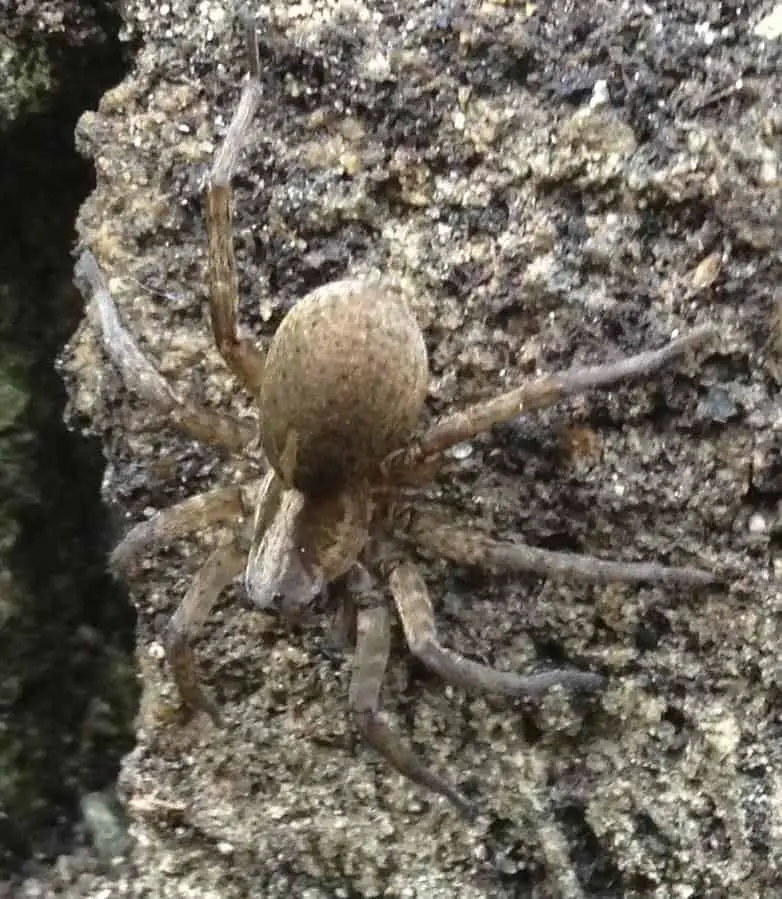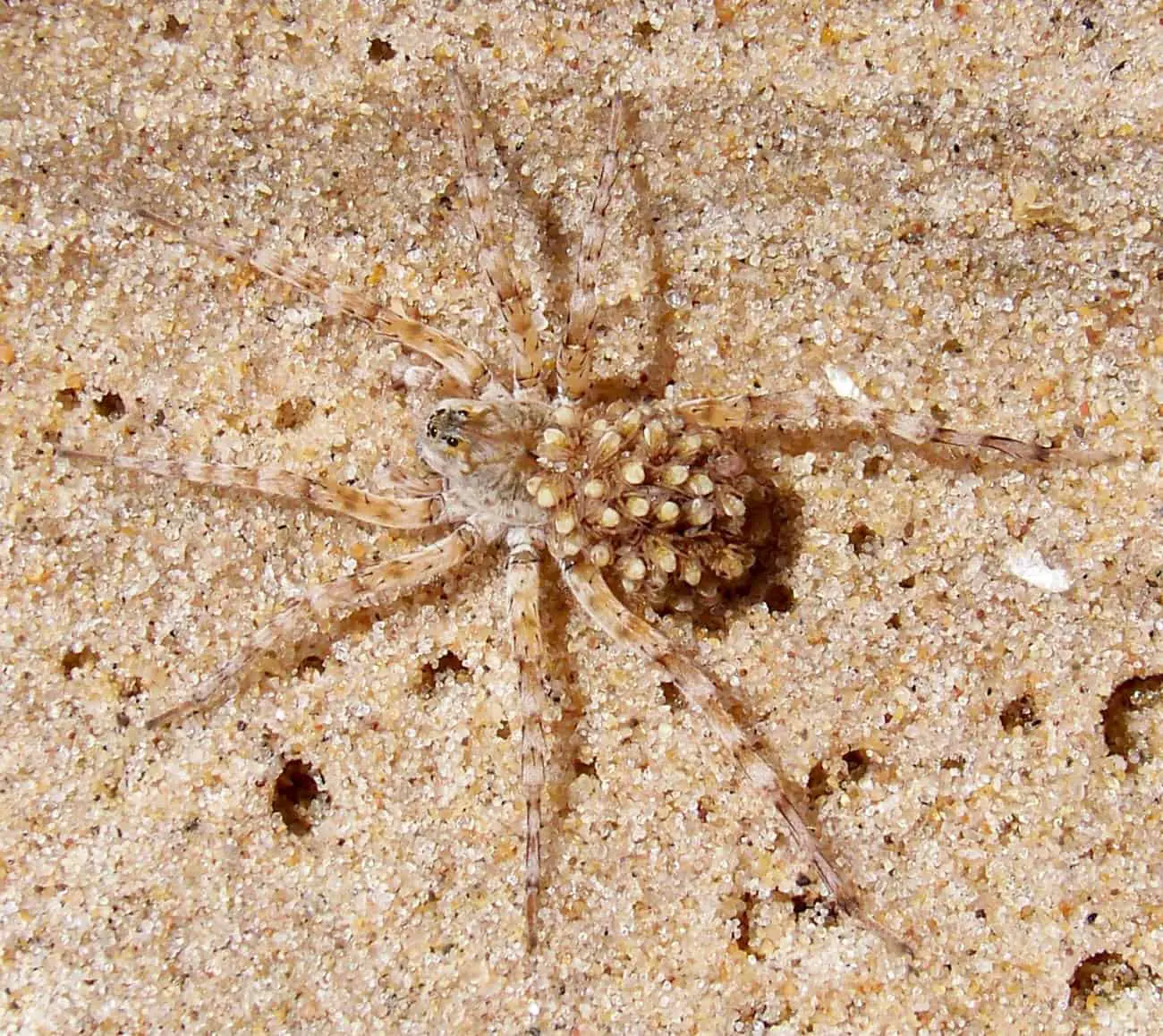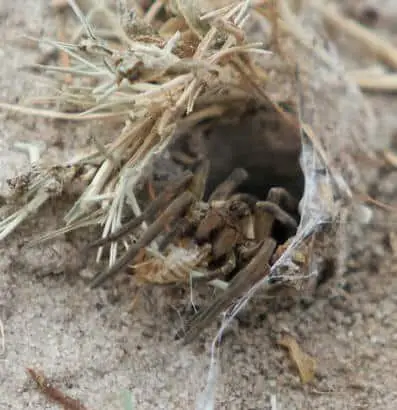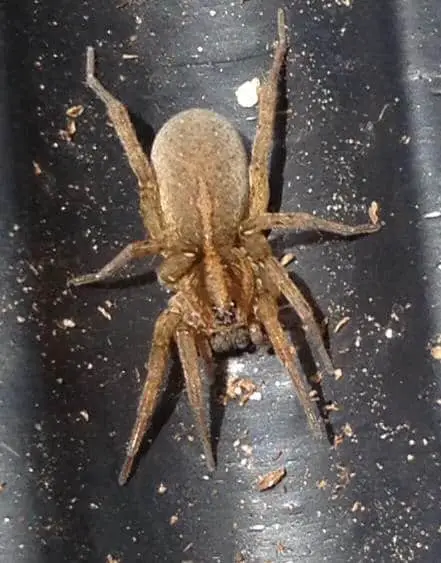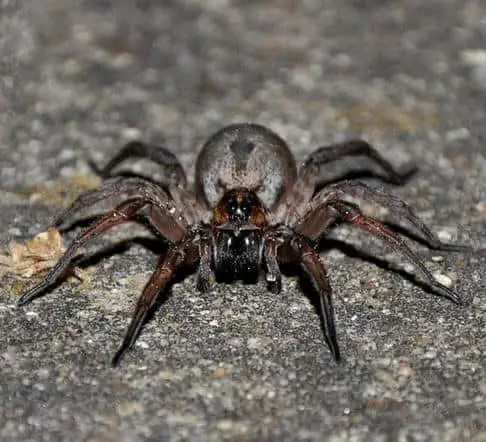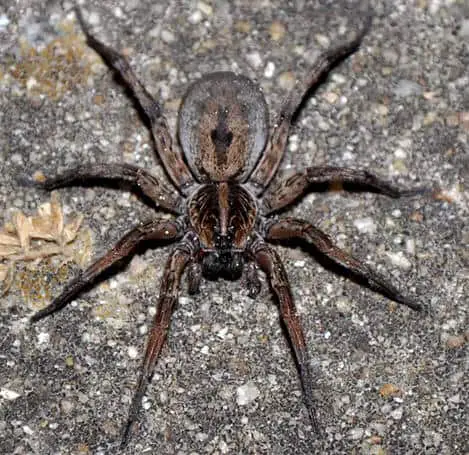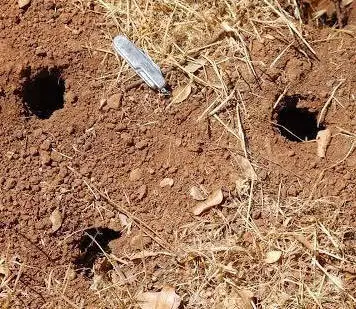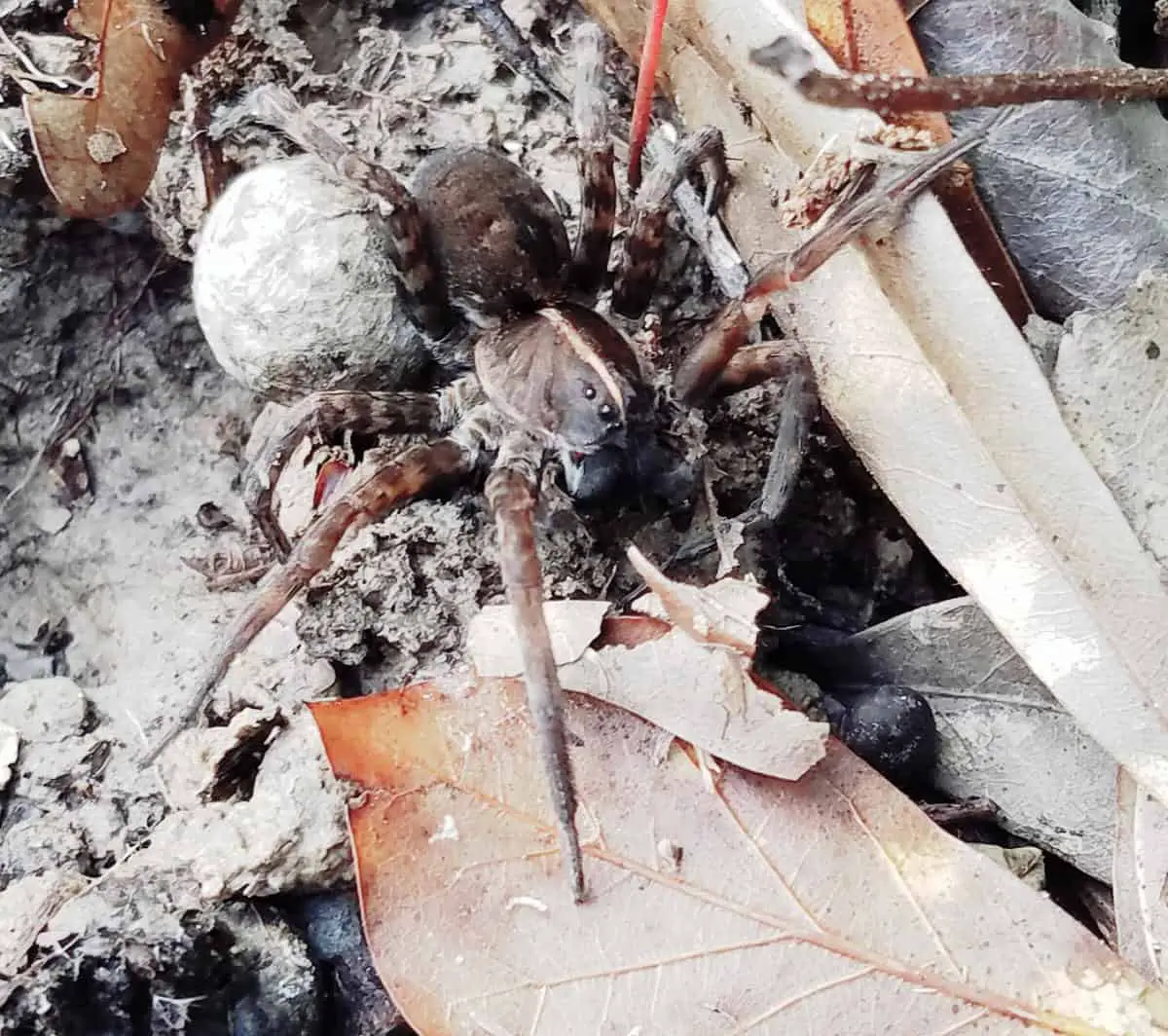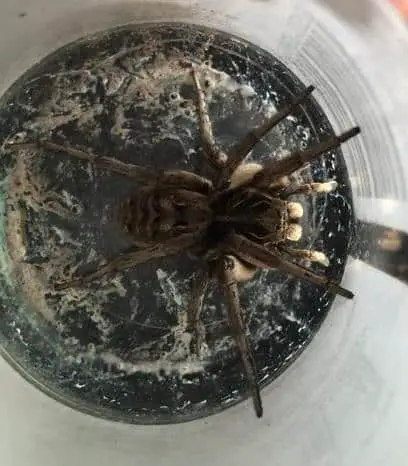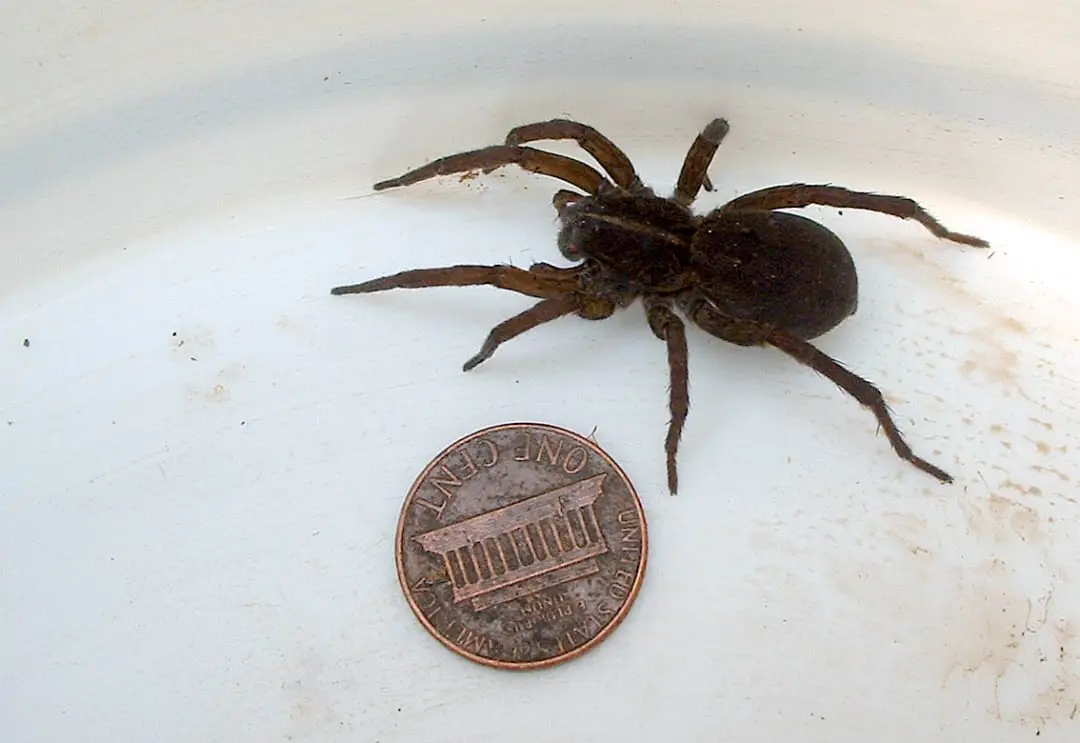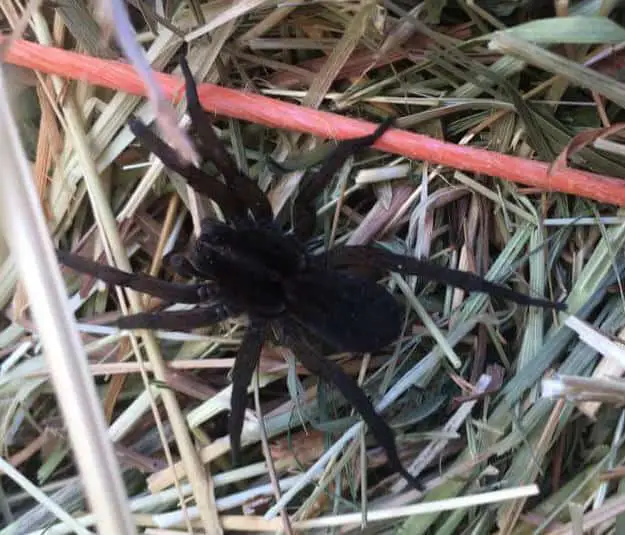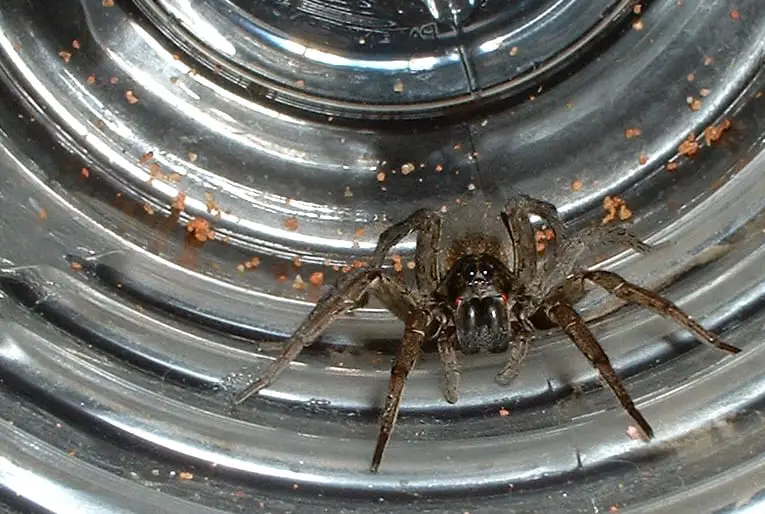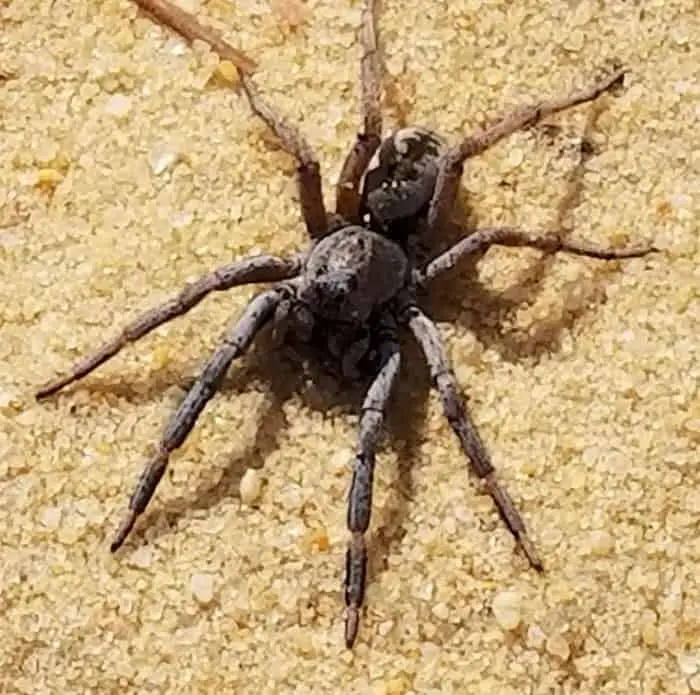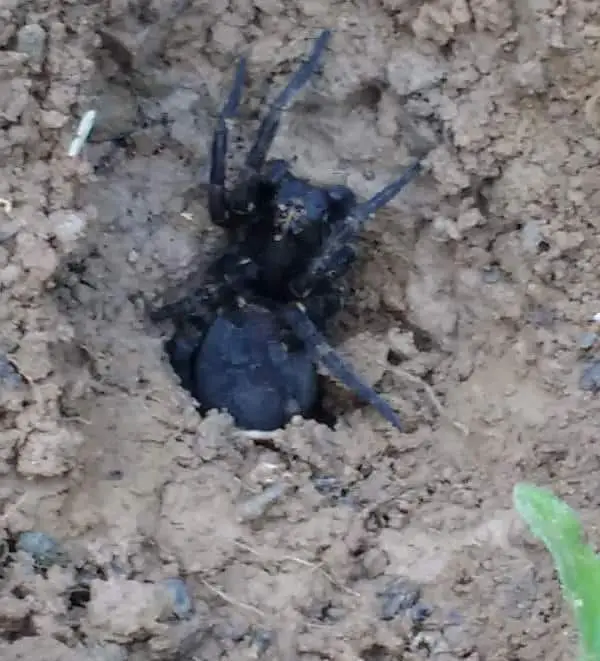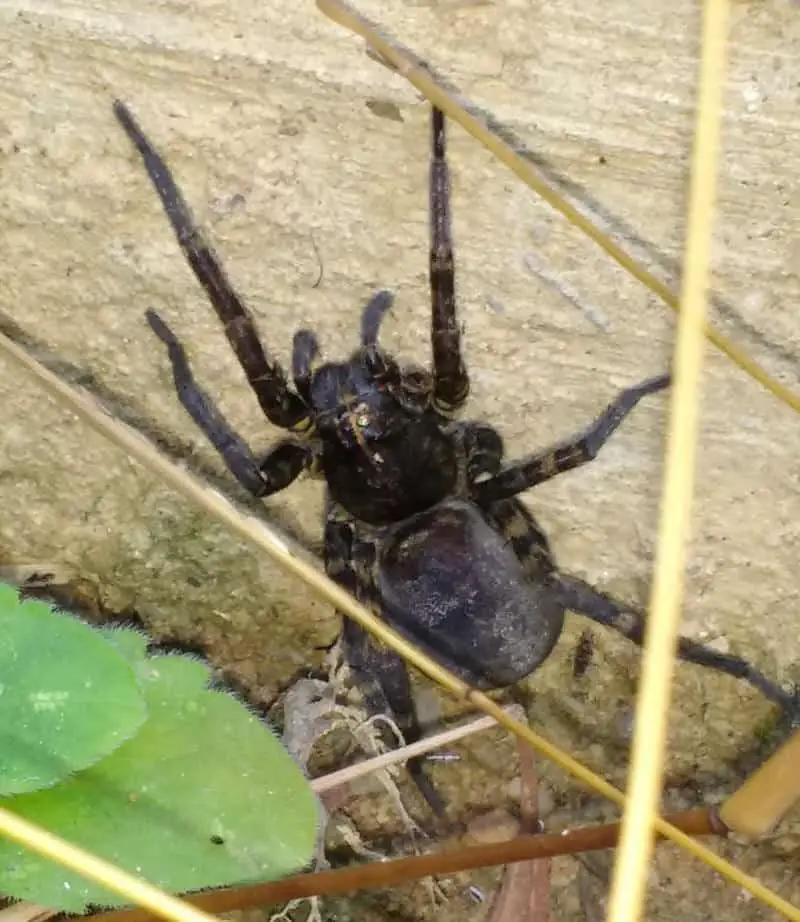Wolf Spiders are large, hairy spiders which are usually patterned with a mixture of black, gray, and brown. Wolf spiders, especially large ones, look very similar to spiders in the Pisauridae family (nursery web and fishing spiders), but wolf spiders are usually more robust, with shorter, thicker legs. There are more than 2000 wolf spider species. Wolf spiders have 8 eyes. As with all spiders, wolf spiders have 8 legs, 2 body parts (cephalothorax and abdomen), and fang-like mouthparts called “chelicerae.” Like all spiders, young wolf spiders hatch from eggs and look like tiny adults. They shed their skin as they grow. Most wolf spiders live for several years. In many species, female wolf spiders lay dozens of eggs at one time and wrap them in a large ball of web.
The female will then carry the carry the egg sac with them until the spiderlings hatch. Upon hatching the, spiderlings will live on the mother’s back for a few weeks until they are large enough to hunt on their own. Wolf spiders are active hunters that patrol the ground for insects, other spiders, and similar creatures. They do not use webs to capture prey.
They live by the thousands in leaf litter and grassy areas. Some wolf spiders build small burrows (Burrowing Wolf Spiders) and defend a territory, others are free-roaming. Because they are so numerous, and such voracious predators, wolf spiders are a very important part of any ecosystem in which they occur. Wolf spiders are not normally pests, but they often wander into homes. They can bite, but they are not considered dangerous. Wolf spiders look similar to brown recluses, and are often killed because they resemble these dangerous spiders. With a little practice, it is easy to tell the difference between wolf spiders and brown recluses. There are several types of wolf spiders and I have tried to group them accordingly below.
All photos are copyright to their owners and may not be reproduced without permission. Click on the images in the galleries below to enlarge them.
Click here for some closeups of a a Wolf Spider from Kevin Wiener.
Table of Contents
Other Wolf Spiders
The surest way to recognize a wolf spider is by the general stout body shape, the eye arrangement and by the fact that they are usually not in a web. Their general body shape is somewhat stout with the cephalothorax and abdomen of about equal sizes. The legs also are stout, fairly even in length and strong enough to support the spiders weight. The legs can be compared to those of many web building spiders whose legs are much longer and thinner. In wolf spiders, the anterior eyes are made up of 4 small eyes in a row, and the posterior eyes are 4 large eyes arranged in two rows. From a front view, you can see a row of 4 small anterior eyes with two larger eyes above them and 2 eyes further back on the head. The large eyes are significant in their behaviour: wolf spiders do have good eyesight (especially for spiders) and use vision fairly extensively for prey capture, courtship and aggressive interactions. The posterior eyes give the spiders vision above them and behind them and are significant in avoiding predation or capture. For identification purposes, the wolf spiders below are not identifed as any one species but are typical of the way a wolf spider looks.
Carolina Wolf Spider
The Carolina Wolf Spider does not spin a web. It is a night time hunter and scurries along the ground. The female carries her spiderlings on her back for weeks or months until it is time for them to scatter. They have a gray-brown body with a dark centre stripe on the abdomen; long, hairy legs; eight large, dark eyes of unequal size. They grow to a length of 3/4-1 3/8″ and live in fields. Their range is widespread.
Rabid Wolf Spider
The Rabid Wolf Spider is easily confused with other wolf spiders and also Nursery Web spiders and Funnel Weaver Spiders. It can be identified by its stripe pattern. The cephalothorax (front body section) has two dark stripes. The abdomen( rear body section) has one dark stripe surrounded by two pale lines. The female, which is larger than the male, can have a body length (not counting legs) of almost an inch. The male’s body is usually about half an inch. Wolf spiders do not build webs to catch prey. They do weave silk to build a shelter, or to build a sac to carry eggs in. Rabid Wolf Spiders hunt their food at night, ambushing prey or using their speed. This brownish-yellow spider camouflages well with dead leaves and bark .They eat mostly insects. When Rabid Wolf Spiders breed, the male does a sort of “dance”, by waving its pedipalps (large leg-like mouthparts). He also makes a noise. When the female lays eggs, she builds a silk egg sac to carry them in. She attaches the sac to her abdomen. When spiderlings (baby spiders) hatch, they ride on her back until they are old enough to be on their own. Rabid Wolf Spiders can be seen in woods, meadows, or anywhere there are leaves. If captured, they will bite, but they are not considered dangerous. If you see them at night with a flashlight, their eyes will reflect light.
Burrowing Wolf Spider
The Burrowing Wolf Spider is a large Wolf Spider. It is often difficult spider to see because it is found in sandy areas and it lives in a burrow underground, and is usually hidden from view. Look for these cute furry spiders at the mouths of their silk-lined burrows in sand dunes when the weather is nice not too hot and not too cold. The Burrowing Wolf Spider has a body up to 20 mm long, not including the eight hairy legs. The body is grey and speckled in black just like the sand it hides in. This dune predator lies in wait near the top of its burrow until something small and unwary wanders by. The spider seldom leaves its protective burrow.

